

FREE Vol. 18 No. 7 (1) • April (1) 2011 • www.indianlink.com.au • FORTNIGHTLY SYDNEY Level 24/44 Market St, Sydney 2000 • GPO Box 108, Sydney 2001 • Ph: 18000 15 8 47 • email: info@indianlink.com.au Published Sydney • Melbourne • Adelaide • Brisbane • Perth delivered delivered A billion billion dreams dreams A

2 <> APRIL (1) 2011 INDIAN LINK
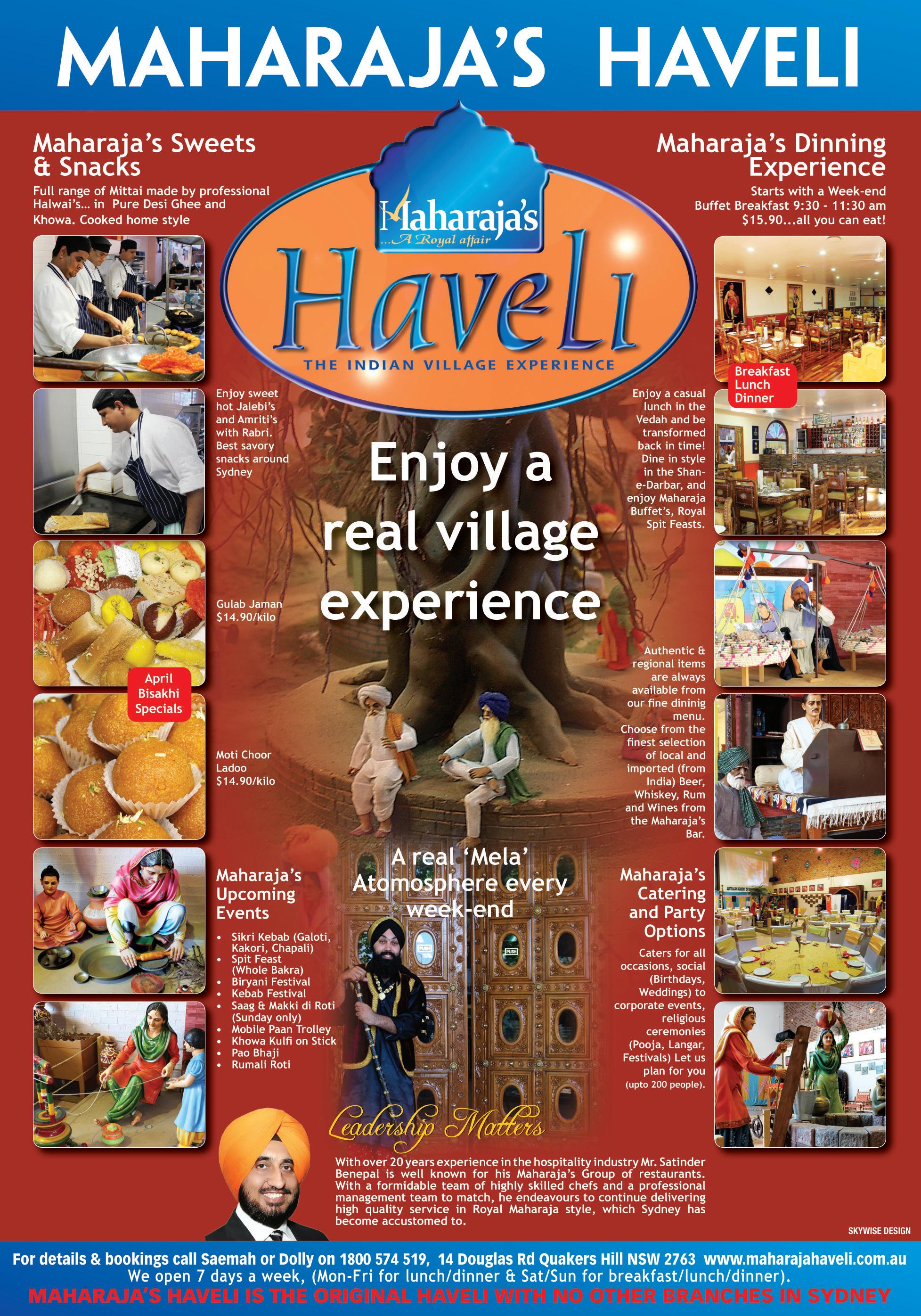
APRIL (1) 2011 <> 3 NATIONAL EDITION


4 <> APRIL (1) 2011 INDIAN LINK
INDIAN LINK
PUBLISHER
Pawan Luthra
EDITOR
Rajni Anand Luthra
ASSISTANT EDITOR
Sheryl Dixit
MELBOURNE
Preeti Jabbal CONTRIBUTORS
Sandip Hor, Gaurav Pandey, Sudha Natarajan, Malli Iyer, Sydney Srinivas, Priyanka Tater, Tim Blight, Noel G deSouza, Darshak Mehta, Sanjiv Dubey, Sunil Ranadive, Saroja Srinivasan, Farzana Shakir, George Thakur, Minnal Khona, Petra O’Neill.
ADVERTISING MANAGER
Vivek Trivedi 02 9262 1766
ADVERTISING ASSISTANT
Drishya Sharma 02 9279 2004
GRAPHIC DESIGN AND LAYOUT
Kaye Martin
Indian Link is a fortnightly newspaper published in English. No material, including advertisements designed by Indian Link, maybe reproduced in part or in whole without the written consent of the editor. Opinions carried in Indian Link are those of the writers and not necessarily endorsed by Indian Link. All correspondence should be addressed to
Indian Link
Level 24/44 Market St, Sydney 2000 or GPO Box 108, Sydney 2001
Ph: 02 9279-2004 Fax: 02 9279-2005
Email: info@indianlink.com.au
Fronting nature, your way
Nature has unleashed its full fury on mankind over the past few months. In Australia, Queensland faced devastating floods that brought the state to a standstill, as did the massive earthquake in Christchurch which has had an estimated damage bill of $12 billion. While the world was getting to grips with these catastrophes, another calamity struck in Japan as it was engulfed by a massive tsunami which has claimed the lives of an estimated 27,000 people. While the recovery efforts are still ongoing, the focus in Japan has been more on the effects of radiation from the damaged Fukushima nuclear plant, rather than on the tsunami itself. Nature in all these instances has shown itself to be a mighty force which can cause destruction and havoc.
Yet under more normal circumstances, nature offers us much scope to partake in its beauty. Take Sydney for example: it is surrounded by beautiful bushland on three sides – the magical Blue Mountains on the West, the Royal National Park in the South and the Ku-rin-gai Chase National Park in the North; and then of course the magnificent Pacific Ocean in the East. All of them offer fantastic opportunities for us to explore and enjoy some of the delights which nature has bestowed upon this adopted country of ours.
BY PAWAN LUTHRA
Back in India meanwhile, there has been unprecedented urbanisation over the last few decades. Rainforests and natural habitats are disappearing as there is increasing demand for land and development to meet the growing needs of the ever expanding population. Cities such as Delhi, Mumbai, Chennai etc are increasing their carbon footprint as the country moves away from primary production into a service economy. With an expected middle class of over 300 million people, there is a demand for more housing and facilities close to the centre of the “action” and there are decreasing parks and green zones around the cities. While Sydney is also experiencing growth, the natural heritage listing of some of our natural resources helps protect the natural parks from over urbanisation.
For most Indian Australians the lifestyle in settling into their new country is arduous and often they need to work multiple jobs to attain even a basic level of financial security. They


also need to work hard to meet their family needs without any external assistance. While work takes up the regular week, the weekend is sometimes filled with more work, besides responsibilities of home, family and friends. An occasional meal out and a regular dose of Bollywood are the only respite. Nature, while around us, is merely experienced rather than enjoyed.
Perhaps with the cooler seasons upon us it is time to change all that. Within a 2-hour drive from almost anywhere in Sydney, one can be in the middle of the Australian bush and enjoy the greenery and beauty of nature. Yes, one will have to face the challenges of sand flies and nettles and leeches and other wild life, but the pleasure of beautiful views, tall gum trees, blue skies and water, will far outweigh these minor irritants. Not only is there ease of access, it is also inexpensive – most national parks can be accessed at marginal costs. One can hike into the bush for a few hours and set up camp, or “car trek” where one can drive up to a wilderness campsite and pitch a tent and enjoy day hikes. The options to enjoy nature are plentiful.
Garam chai around the campfire while tunelessly singing Bollywood songs will be a memory to be treasured for a long time.
APRIL (2) 2011 <> 5 NATIONAL EDITION www.indianlink.com.au EDITORIAL
What’s On
SPIRITUAL
Chinmaya Mission events
Sun 17 April to 25 April Talks by Pujya Guruji Swami Tejomayanandaji entitled Sampoorna Ramayana: The complete essence of the Ramayana. 6.30pm to 9.00pm each night. (Please note: 6.30pm - 7.00pm each night will be presentations and drama on the Ramayana by CHYK (youth group). Children will simultaneously have their special talks on “Human to Hanuman” by Br Gopalji).
18 to 25 April Talks by Pujya Swami Swaroopanandaji entitled Yoga Vasishta Sara: Freedom from daily problems. 6.30am to 7.45am each morning.
Fri 22 April CHYK program for youth aged 18-30 years: Chat with Guruji. Write down your questions and bring them to be answered. 10.00am to 12 noon.
Sat 23 April Junior CHYK program for youth aged 13-17 years: Chat with Guruji. Write down your questions and bring them to be answered. 10.30am to 12 noon
Sun 24 April Balavihar program for young children: Chat with Guruji Write down your questions and bring them to be answered. 10.30am to 11.30am.
18 to 25 April Adults meet Guruji from 10.30am to 12.30am (Satsang and Paduka pooja with Guruji)
Sun 1 May Chanting of the Hanuman Chalisa x 100.
Details contact Chinmaya Sannidhi Ashram 02 8850 7400 / 0416 482 149 or visit www.chinmaya.com.au
Ramakrishna Sarada Vedanta Society activities
Sun 8 May 10.40am to 12noon
Sankaracharya’s Birthday Celebration
- Commences with Hari Om Ramakrishna Chant, Silent Meditation, Talks by Pravrajika Gayatriprana and Mrs.Betty Yeoh, followed by distribution of offered food.
Sun 15 May 9.30am to 4.00pm One Day
Retreat on Bhagavad Gita Ch.12 Yoga of Devotion - Directed by Pravrajikas Ajayaprana & Gayatriprana. Programme includes: Study Class, Silent Meditation, Group Discussion, Q & A. Lunch, morning & afternoon tea included. $15.00 donation per person.
Sun 22 May 10.40am to 12noon
Buddha’s Birthday Celebration - Hari Om Ramakrishna Chant, Silent Meditation, Talks by Pravrajika Gayatriprana and Mr.Stafford Watts, followed by distribution of offered food.
Venue for all activities Vedanta Hall, 15 Liverpool Road, Croydon. Details 9745 4320 or email vedantasyd@idx.com.au
Gayatri Mahayagya
Sun 12 June 9am to 2pm Collective prayers for global peace and harmony. All World Gayatri Pariwar Australia invites you for 9 - Kundi Yagya on the auspicious occasion of Gayatri Jayanti. Also features book stall, exhibition, presentations followed by Mahaprasad Address: Australian Hindu Multicultural Association, Cultural Centre 1050 Richmond Road, Marsden Park
Details Neeraj Ram 0405 777 539
STAGE
Call for theatre actors
Theatre writer Sala Abrahim’s new play Daughters which deals with the issue of clash
of cultures (Indian vs Western) enjoyed a successful reading at the recent National Theatre Festival sponsored by Playwriting Australia and held at Parramatta Riverside theatres. Interested actors who might be willing to participate in the full production are encouraged to call Sala at the Bankstown Youth Development Service (part of Bankstown Arts Centre) or at 0401 851 571.
MISC
Rabindranath Tagore anniversary
Sat 7 and Sun 8 May The Bengali Association of NSW is celebrating Rabindranath Tagore’s 150th birth anniversary in association with the Faculty of Arts Macquarie University, Consulate General of India, Sydney, United Indian Association and other cultural organisations. A cultural program will showcase Tagore’s magical poetry, elegant prose and his unique genre of music. Venue Macquarie Theatre (Bldg. W5B) and Price Theatre (Bldg. W5A), Macquarie University, North Ryde. Times 7 May 4.00pm-10.00pm and 8 May (11.00am-7.00pm) Details Bengali Association of NSW website www.bansw.org.au.
CAWS
CAWS is a not for profit organisation whose mission is to introduce people with intellectual disability to unpaid community members. Individuals are sought to take an ongoing personal interest in a person with intellectual disability (residing in Parramatta, Blacktown & Baulkham Hills council areas). Training and ongoing support are provided by experienced professional staff. For further information contact
Kaye 9893 8210 or email: office@caws.com.au
FUNDRAISER
I-India Project Australia has on offer the new 2011 | 2012 Entertainment™ Books. Proceeds from the sale will go towards its charitable activities in Rajasthan, India. Entertainment™ Books are filled with 50% off, 25% off and 2-for-1 offers from the best restaurants, hotel accommodation, attractions, and leisure activities. Choose from fourteen editions around Australia:
Adelaide $65
Brisbane and Sunshine Coast $65
Canberra $55
Geelong, Surf Coast and Ballarat $55 Gold Coast and Northern New South Wales $55
Greater Melbourne $65
Newcastle, Central Coast & Hunter $60
Parramatta - Sydney Greater West $60
Perth $65
Sydney $65
Sydney North $65
Sydney Greater West $60 (including Parramatta, The Hills, Blue Mountains and Macarthur)
Tasmania $55
Townsville Cairns & Far North Queensland $50
Details Renate Barnett 0402 958 582, mail@i-indiaproject.org
Divine Life Society Fundraiser
Sat 30 April Divine Life Society presents Guru Sharnam, a cultural program of music and dance at Strathfield Town Hall, 65 Homebush Rd, Strathfield. Details Vijay Raman 02 9763 7705.
On the professional settlement of immigrant doctors
The Australian Indian Medical Graduates Association (AIMGA) is an organisation of Indian doctors which for the past 30 years has been working to help doctors trained in India and registered in NSW. It also helps those who arrive here through appropriate immigration channels to work as medical practitioners, but never get to accomplish their dream.
Though AIMGA is based in NSW and has been representing issues related to NSW Indian doctors, there are indeed many common issues shared by all foreign trained doctors.
In this letter I would like to highlight on behalf of our membership, the emotional, financial and social hardship some immigrant doctors have to endure. There have been heart-wrenching stories and wide ranging impact on the life these doctors which have led them on the altered path of disappointment.
Australia, with its progressive and democratic policies, its prosperity, its humanitarian record, abundance of opportunities for professional growth and its ease of language, has become a popular country for doctors to immigrate here. At the same time Australia has also taken advantage of the situation in building its world class medical services both in quality and coverage of
Sthe land. According to WHO estimates, it has the highest number of psychiatrists per 10,000 of population in the world, ahead of USA which also claims to have more practicing Indian psychiatrists than in India. In other specialities of medicine the statistics is not dissimilar, despite the projected shortage of doctors in Australia. Australia actively recruits doctors from India on limited registration to provide adequate services in rural and remote areas. This practice often removes highly skilled doctors from the prime Indian hospitals to fill up the position of Area of Need in Australia. Unfortunately these recruited doctors have limited privileges and freedom in availing the services such as of Medicare, free public education etc which rest of us enjoy. More serious than this is the plight of doctors who migrate here as spouses, relatives or for medical training.
Although Immigration authorities are well aware of their status, they do not follow up their course of settlement. These doctors are confronted with a series of examinations to test their language and technical competency. There is no guarantee that even after successful completion of the examinations conducted by Australian Medical Council they will be gainfully employed, which puts them in the same category with those who do not qualify the examination.
AIMGA currently has contact with many foreign doctors who are not registered to practice, irrespective of their examination outcome. These are the doctors who seek out non medical fields for their survival with an immense sense of failure and shattered dreams and spirits. Many of them work as taxi drivers, shop assistants, child carers, salesmen, security guards etc.
It is most unfortunate that in addition to the impact it has on the doctor’s and his/her family’s life, he/she is lost to his/her country of origin and not of much use in Australia either.
AIMGA has submissions that Australia must acknowledge the valuable assets these doctors are to any community and the investment their country has made in their training. As a moral obligation, the Australian Government must be accountable to the countries of brain drain. The
import of doctors from less privileged countries must be taken seriously to ensure that they work here as doctors and not otherwise. A study should be commissioned by the Immigration Department to follow the course of professional settlement of immigrant doctors. The examination for registration in Australia must be concluded before their arrival to ensure their employment as a doctor. A similar scheme has successfully existed in the US for decades.
AIMGA strongly objects to the current trend of wastage of foreign-trained doctors in Australia who remain unemployed or underemployed. To drain the less privileged countries of their valuable medical resources in order to boost the Australian medical workforce, without mindful planning of doctors’ professional future, is considered unethical on humanitarian grounds.
Dr Shailja Chaturvedi President Australian Indian Medical Graduates Association
US hypocrisy about “pro” democracy movements
The American “Defence” department is the sole intermediary via which its despotic tyrant allies in the Arab world can acquire the most advanced weapons that are regularly turned on their own citizens. This way, the US government can ensure that American weapons manufacturers continue to be financially stable with continuous profits during recessionary times. Hence, they worry when pro-democratic revolution sweeps the region as future multi-million dollar contracts cannot be assured. The future of many well-entrenched bases will also be in jeopardy, as would an uninterrupted flow of oil. Despite the hypocritical rhetoric, US arms in the dictators’ hands are almost always used against pro-democracy movements!
Lasantha Pethiyagoda Dandenong North, Vic
6 <> APRIL (2) 2011 INDIAN LINK
***

APRIL (2) 2011 <> 7 NATIONAL EDITION



8 <> APRIL (2) 2011 INDIAN LINK
Indo-Oz relationship enhancements cited at Forum
BY SANDIP HOR

Australia’s leading educational institution, Sydney University, has identified India as one of its top three regions for valued future engagement. In that context, they hosted the India Forum on April 13, with the goal of sharing and exchanging information and ideas that would enhance the relationship between India and Australia, beyond commonwealth, cricket and curry.
The highlight of the forum was a keynote address by Dr Chandan Mitra, Member of Parliament, India and editor of the New Delhi-based Pioneer daily newspaper. His presentation was themed at India’s emergence as a global power, arising out of the nation’s remarkable transformation in three key areas - economic, political and military.

Leading into the topic, Dr Mitra described how astronomical changes have impacted many government strategies related to sustaining growth and maintaining security, particularly foreign policy, which India traditionally built on a theory of non-alignment with a strong security and diplomatic relationship with the former Soviet Union, but now that has toggled towards United States.
Of particular interest in Dr Mitra’s talk was the strategic importance of the Indian Ocean region where the key players today apart from India are China, Indonesia, South Africa and Australia. On that issue, his views were that India, Australia and South Africa should form a “triangle of tranquillity” in the region to establish long-lasting peace, counter aggressive advances by “external” powers and handle incidents of piracy emanating from the failed state of Somalia.
As expected, there was keenness to hear the Indian Parliamentarian’s views on the current India-Australia relationship. He acknowledged the existing level of bilateral partnerships and cooperation which stands on a solid foundation built by several commonalities between the two countries such as a secular and multicultural democracy, independent press and judicial system, English as the medium of communication and fascination for cricket. However, Dr Mitra did not hesitate to identify Australia’s reservations about selling uranium to India for its civil nuclear program as a major unresolved issue, particularly after the signing of the Indo-US Civil Nuclear Agreement in 2008.
He also said the attacks on Indian students in Australia is still causing concern back home, but acknowledged the sincere efforts of the Australian
Other speakers during the morning session included Mike Pierce (Assistant Secretary, South
On the Indian Ocean region, Mitra’s views were that India, Australia and South Africa should form a “triangle of tranquillity” to establish longlasting peace, counter aggressive advances by “external” powers and handle incidents of piracy emanating from the failed state of Somalia.
& Central Asia Branch, Department of Foreign Affairs & Trade) who admitted that Australia in the current environment, cannot afford not to associate with India. He responded to the sale of uranium issue by revealing that the reason behind Australia’s reluctance to close the deal stems from the fact that
and former Australian High Commissioner to India between 2004-09, provided some interesting insights into the bilateral relationship experienced by him during his tenure in New Delhi.
Neville Roach, Member of the Indian Prime Minister’s Global Advisory Council of Overseas Indians reinforced the importance of strategic partnerships to move forward the links between the two nations.
Most of the attendees found the forum to be informative and recognized it as another positive step from Sydney University in fulfilling their strategy to create deeper and lasting links with India. Some of the ‘way forward’ activities were further covered at the post-forum seminars, and round table discussions. The topics covered Public Health Research & Education, Food Security, Science Education and Capacity Building in a Business Environment, and participants included others invited academics from India.

APRIL (2) 2011 <> 9 NATIONAL EDITION
www.indianlink.com.au MAINSTREAM
Dr. Chandan Mitra, MP and editor of India’s Pioneer daily, speaks at Sydney University
Building bridges through music
BY GAURAV PANDEY

For a long time, a small section of Australian musicians have been working to spread awareness of Indian classical music in the country. Many of them began with an inspiration that fuelled a lifetime’s passion and their journeys highlight - even savour - the importance of a quality less evident in this age of instant gratification: perseverance.
Indian classical music is one of the more popular non-Western classical music traditions. Its students go through many years of training, often under the watchful eyes of a guru, before they find their authentic voice. The credit for preserving India’s ancient music and its culturally exotic image must also go to the numerous musicians who have been performing and teaching tirelessly for years.
Propounding the classical
Among the Australian practitioners of Indian classical music, Adrian McNeil is perhaps the most recognised name. His instrument of choice – the sarod – is not easy to master, but Adrian’s discipline and effort have made him a worthy exponent.
His current role is that of Director of Higher Degree Research and Convenor of Improvisation Program at Macquarie University’s Department of Media, Music and Cultural Studies.
Adrian has undergone intensive training in Indian classical music from leading musicians for more than two decades in India. Apart from regular performances in Australia and abroad, he spends a fair bit of time in academic activities. He writes on the social and cultural history of Indian classical music, the political economy of music and improvisation in music, and has authored a much-acclaimed book on the sarod, Inventing the Sarod: A Cultural History
Adrian has a PhD in ethnomusicology and has been teaching music for many years. His own music education, though, happened under the guru shishya parampara . In an interview to Indian Link in 2007, Adrian had expressed his admiration for the tradition: “It seems that some forms of knowledge are best preserved and taught according to this method. Classical music is still very much organised around the workings of this institution and till date, it is still recognised as the best way of gaining the proper knowledge and skills to become a professional musician.”
Through his music, writings and teaching, Adrian is striving to ensure the coming generations are not deprived of the beauty of the intense notes of the sarod.
Sensational sitarist
Another Australian string instrumentalist who embodies the richness of Indian classical music is Josh Bennett. “For some reason, when I heard Indian music it excited me, and I wanted to understand it and immerse myself in it. But why Indian music touched me in particular is a mystery,” said the accomplished
sitar and dilruba player whose “main musical outlet” is through string instruments – an affair that is more than 20 years old.


Being a left-hander brings with it a curious set of issues. His instruments, for instance, are either made specially or found by chance. The dilruba is an example of the latter: “I was in a music store in London, and asked the shop-keeper if he had any left-handed sitars. He didn’t, but he pulled out a left-handed dilruba that was in the corner gathering dust,” revealed Josh. He’d never heard of the dilruba before, he recalled, but “recognised it immediately” when the storekeeper demonstrated its sound. “The rest is history.” His journey, like that of many who choose to follow their passion in life, has not been a straightforward one. “Like any classical form, Indian classical music requires dedication, persistence and tens of thousands of hours of practice, which can be a challenge living in Australia where one is surrounded by a culture of fast-food and three-minute pop tunes,” said Josh.
Many of the problems faced by international musicians wanting to learn Indian classical music have begun to ease to a certain extent with more accessible international travel, video and audio recordings, and resources such as the internet. However, beyond the basic familiarity, Josh said, “You need a teacher to pass on the intricacies and subtle nuances that are almost impossible to assimilate otherwise.” He added that he had been “extremely fortunate to have a guru who has such a wealth of knowledge and is willing to pass that knowledge on to
10 <> APRIL (2) 2011 INDIAN LINK
“(Indian classical music) is not just about learning an instrument: it is an approach to life, a philosophy and requires so much time and dedication to progress.”
Edo Kahn
COVERSTORY
2 1
whoever has the passion to learn it.”
At the end of the day, Josh seems content with what destiny has offered him. “It is a blessed life to be able to spend my time making people happy by playing music, and without people to play for, there would be little point. I particularly enjoy exposing audiences to music that they may not otherwise come across, and present it in a way they can understand and relate to,” he said.
These days Josh is busy practicing hard on the sitar in preparation for the National Folk Festival in Canberra. He regularly performs within Australia and internationally, and is also a part of “a 60s/70s Bollywood big-band” called Bombay Royale . “Due to my familiarity with both western and Indian music, I can act as a bridge between them - like a musical translator,” he said. “My goal is it to be performing music for as many people as possible, and for as long as I’m still breathing!”

A spiritual rejuvenation
Passion can hardly be objectively defined and, in many cases, the music itself is only a sub-set of a larger, more meaningful purpose. The journey of Edo Kahn and Jo Mall, popularly known as ‘Edo and Jo’, is a fine example of this.
They have spent considerable time in the service of music and humanity and are popular among many Australians for their kirtans ; Edo has been working as a musician and a music therapist in the
area of disabilities and aged care over the last 12 years, for the past 3 years with his partner Jo.
They live in India half of the year and are actively involved in volunteering, learning and teaching music and yoga at many Indian villages and orphanages.
“We have embarked on the path of music as a means of expressing, experiencing and sharing divine love,” Edo said.
“The first time a friend gave me a recording of the chant Om Namo Narayani , I had it on repeat on my ipod for a year, it is like a lullaby for my soul,” Edo recalled.
Their story is no different from that of many who have been drawn to India as much for its culture, as the music. The experience was intense for Edo: “I went to India on a spiritual search and I knew I would not be coming back the same person. It was a rebirth. And it gets deeper and deeper the more I dive into it.”
Edo journeyed extensively through India where he was exposed to “sounds that bring peace to the soul and connect us to the divine” and has been learning mantras , classical Indian music and sacred sounds from Nature.

Jo first visited India three years ago and saw her two day trip turn into 6 months! She has been returning to India every year since to delve deeper into her yogic and music studies. “I felt unconditional love and joy, and every trip to India uncovers more love,” she said.
“Indian classical music is so vast, transcendental and deep. It is not just


For Jiva Berry, a long-term devotee of India’s culture and classical music, it all started with the seemingly innocuous Hare Krishna community programmes he attended as a child. “During the school holidays one year we went up the coast to visit the Hare Krishna farm near Murwillumbah for a Rath Yatra festival. While we stayed on the farm I made friends with some of the others studying at the traditional gurukul there,” he recalled.
“I liked it there so much that I didn’t go home with my parents from that holiday,” he added. After a couple of years at the gurukul in Murwillumbah, Jiva was encouraged to fly to India to attend high school at the Bhaktivedanta International Gurukul in Vrindaban. That Jiva ended up
spending 10 years in India at vedic gurukuls underlines his devotion and the virtues of the traditional system of discipleship followed at these institutions. The time he spent in India is still vivid in his memory. “ Kirtan and bhajan were so much a part of our daily life and I enjoyed playing the khol and harmonium. I had lessons but didn’t really put much energy into the study of music. I would watch and listen to others who played the khol and learned to copy them. While I play a little guitar and piano, I feel the khol has some earthy calling for me,” said Jiva.
Jiva conceded he didn’t really come to fully appreciate classical music until much later, when he had the opportunity to discover “some of the greatest musicians I would ever hear.” These included the likes of Allauddin Khan, Ali Akbar Khan, Vilayat Khan, Nikhil Banerjee, Bismillah Khan, Allah Rakha, Buddhadev Das Gupta, Bhimsen Joshi, Pandit Jasraj, Zakir Hussain, Hariprashad Chaurasia and Sultan Khan, among others.
“But what truly lights up my heart is devotional music, be it Nam Samkirtan, Sufi Qawwali or Harlem gospel,” said the musician who currently plays in a ragtag folk group, The Krishna Murphys . “From our unique musical worlds we bring what inspires us and it sounds good. We are quite active on the blossoming kirtan
Continued on page 12
APRIL (2) 2011 <> 11 NATIONAL EDITION
3 4 CONT
5
1. Jo and Edo
2. Josh Bennett
3. Adrian McNeil
4. Jiva Berry
5. Nila Hagglund
Continued
from page

scene in Australia and play with whoever will have us,” said Jiva. “In this ever-busy technological society, it is wonderful to see one of the oldest and simplest traditions in the world connecting to the divine through music, being embraced anew by young and old.”
Talent on the tabla
Another regular performer at events in Australia is Nila Hagglund, a trained tabla player. He is often called to participate in recording sessions with artists of varied genres. Nila was born into the Hare Krishna community in Vrindavan, India to an Indian father and an Australian mother in 1986, and has received tabla training for 6 years in India.
“The versatility and depth of Indian music, along with the fact that rhythm and melody exist harmoniously in two drums, is what attracted me to tabla,” said the musician whose training in Indian music began with Odissi dance and classical vocal, before he decided to focus on tabla “after listening to Zakir Hussain’s cassettes.”
The decision to take up tabla might have effectively reshaping Nila’s life as an artist, but the journey has had its frustrating moments. “The biggest challenge is the availability of Indian instruments, particularly tablas, in Australia due to the strict quarantine restrictions on importing raw hide drums into the country,” he complained. “In most cases the Customs department will seize your new tabla set upon arrival into Australia and charge you to treat them with gamma-radiation, which unfortunately shortens the life of the skin by up to 70%.”
Nevertheless, such hurdles have not detracted the younger generation which seems to be embracing the unique East-West mix. “Indian classical music is finally meeting the Western culture
dimension of Indian classical music to the fore. Their recording label Medicine Music, is essentially based on this philosophy.
Vicki’s been playing music from a very
“Within the raga system in Indian music, there are clear guidelines to follow. I love melody, and have always been drawn to the microtonal possibilities of Indian instruments,” she revealed.

Indian classical music, she believes, is quite different in many ways from western music. “One has to feel comfortable with improvisation (although there are many similarities with jazz),” she said. “The other is that it is always advisable to stick with the one teacher; the practice of regarding the teacher as a ‘guru’ is quite
and Bollywood,” added the musician who recently appeared on the TV show ‘X-factor Australia 2010’ to support India-Rose Madderom on her song
‘
Jai Ho ’.
Healing melodies
The potentially healing property of music is perhaps the most powerful aspect of it.
Vicki Hansen and her husband Ron Ragel are two musicians who have brought this
young age and plays many instruments such as piano, guitar, flute, bass guitar and violin. She is also a singer and a television composer. “I have always preferred musical improvisation, rather than playing music that is already written, although there is nothing wrong with that, that’s just been my preference,” she said.
It’s the scope for improvisation in Indian music that drew her towards it.
different from the western system.”
12 <> APRIL (2) 2011 INDIAN LINK www.indianlink.com.au COVERSTORY
Vicki’s association with India, though, is not just limited to its music. “There is so much that I love about Indian culture, history, the food, people, colours, clothing etc. Being in India gives you so much more, as there is nothing hidden, like it tends to be here in the west,” she said. “There is so much depth and knowledge to be gained from the culture, something which can be lacking in our materialistic, sometimes superficial culture.” 11
Vicki Hansen and Ron Ragel
“In this ever-busy technological society, it is wonderful to see one of the oldest and simplest traditions in the world connecting to the divine through music, being embraced anew by young and old.” (Jiva Berry)
FREE BUSINESS BRIEFING

Potential to earn +$100,000 p.a. while keeping your present job
Are you like most people who have studied various material on wealth creation, then got “fired-up” each time and pledged to go into business for yourself someday, but NEVER got around to it because you
• did not have the (large amount of) start-up capital that was required?
• Just couldn’t afford to give up your full-time job to do so due to existing commitments?
• Simply could not find the right opportunity (one with minimum outlay and maximum returns)?
If you are a motivated, self-starter who would seriously like to attain financial independence, earning a residual income with the potential to exceed *$100,000 p.a. in 2-4 years, starting part-time with relatively no financial risk, then call
(02) 82302521 (24 hrs)

And we’ll introduce you (without obligation) to one of the most lucrative business ventures of our time. This is a genuine, legal and high-integrity opportunity that is attracting people from all walks of life, including highly skilled professionals such as doctors, lawyers and business executives. It is definitely not for those looking for a ‘get rich quick’ scheme or rewards without effort-such things don’t exist.
Understand that if you don’t have, it’s because you don’t act. Call Now. (Serious enquires only)
CONTACT : DEEPIKA SHARMA
INDIAN FOOD TAKE AWAY FOR SALE
• Indian Food Take Away for sale in Norwest Business Park
• $30,000 and Negotiable.
• Shop located in food court of shopping centre with Woolworths and many speciality shops. Shopping centre within walking distance of private hospital and offices.
• Long lease, reasonable rent and a very good and regular customer base. Site offers plenty of growth potential.
• Owner moving overseas so quick sale required.
PLEASE CALL 0408 474 417
APRIL (2) 2011 <> 13 NATIONAL EDITION
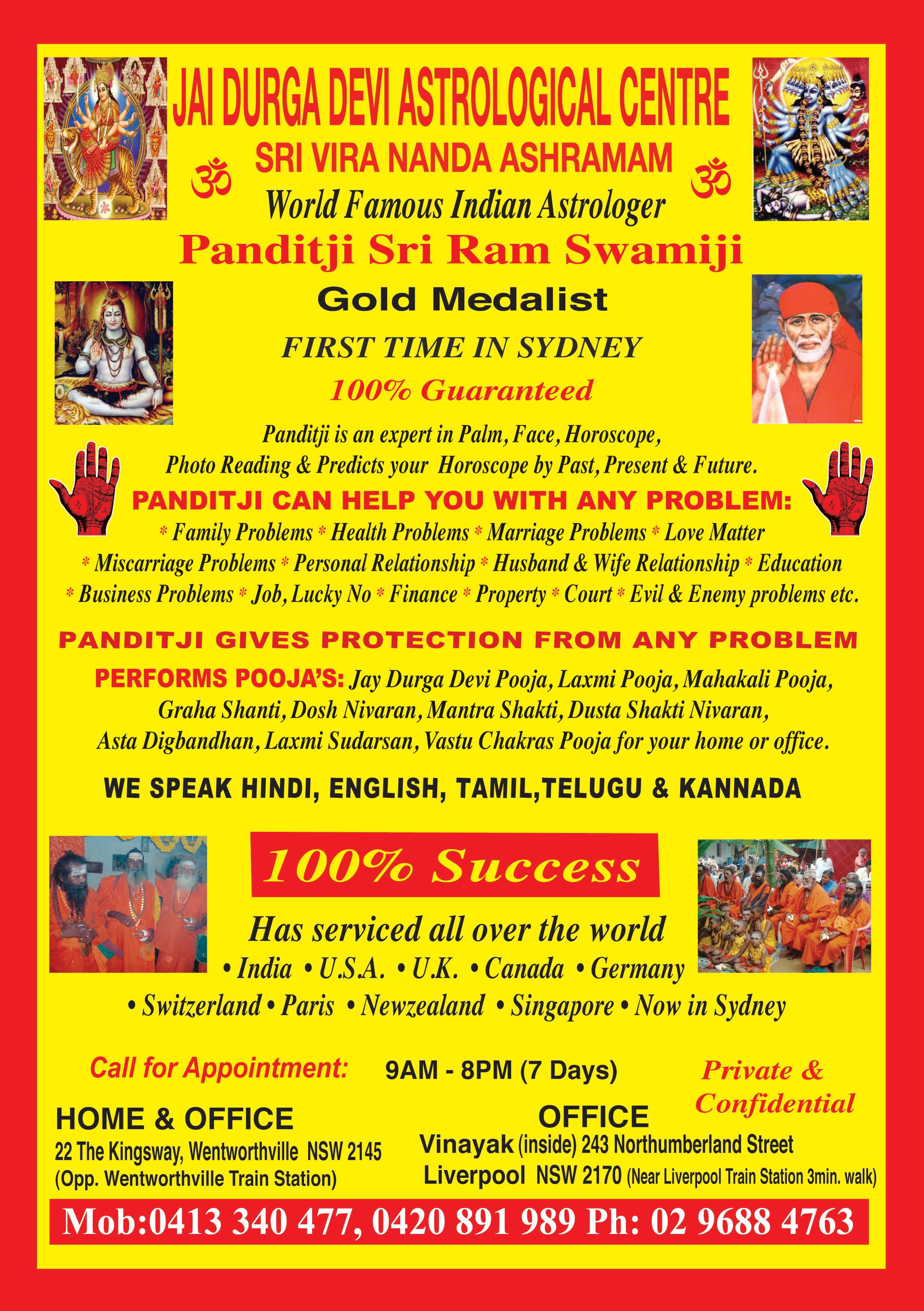
14 <> APRIL (2) 2011 INDIAN LINK
Interfaith forum promotes peace and harmony
Religious representatives from Christian, Muslim, Jewish, Buddhist, Hindu and Baha’i faiths came together in a panel discussion to express their views and advance understanding of religious and spiritual diversity at an Interfaith Forum held on March 22 at the Jubilee Oval Community Hall, Carlton. According to Vivian Challita-Ajaka, Diversity Health Manager, St George Hospital, the aim of the Forum was to increase awareness about different faiths and to promote respect, harmony, peace and understanding within the St George area and wider community.
“The Forum was aimed at health professionals, police officers, local government and nongovernment agencies, community leaders, community organisations and general service providers,” Ms Challita-Ajaka said.
The interactive panel of religious leaders spoke to more than 100 attendees about common problems and issues, such as how people of different faiths engage with society to promote community harmony; religious expectations among the family and wider community and how they interact with other religious groups.

“It’s important we recognise that religious practices and beliefs can vary markedly within each religion and spirituality; and that not all people of a particular faith necessarily practise their faith in the same way,” said Ms Challita-Ajaka.
More than 43 percent of the St George community speaks a language other than English at home, with
the main languages being Cantonese, Mandarin, Greek, Arabic, Macedonian, Italian, Spanish and Croatian.
“Statistics show that St George residents come from more than 80 different countries and speak more than 70 different languages at home,” Ms Challita-Ajaka said.
This year’s Harmony Day was launched and celebrated at the Interfaith Forum. “The continuing message for Harmony Day 2011 is that Everyone Belongs – Living in Harmony , which means all Australians are a welcome part of our country, regardless of their background,” claimed Ms ChallitaAjaka. “It’s time to reflect on where Australia has come from, recognising the traditional owners of this land. It’s also about community participation, inclusiveness and respect – and celebrating the different cultures that make Australia a great place to live,” she added.
RAIN Inc was represented by Dr Saroja Srinivasan who addressed the forum on Hindu Sanatana Dharma,with RAIN singers participating in the Choir with the St George Women’s Interfaith Choir. The St George Interfaith Forum was a partnership between St George Hospital, St George Police, Hurstville, Kogarah and Rockdale City Councils, St George Migrant Resource Centre and St George Interfaith Women’s Network, Hurstville.

A clear vision for charity
Vision 2020 is a Sydney based Indian Community group that has acquired a stellar reputation to combine entertainment by local talent with mobilising charity fund raising opportunities. They have successfully conducted a variety of programs for a few years and have donated more than $ 50,000 to very deserving causes in India and Nepal since 2007. They thoroughly evaluate the projects and ensure that their charitable contributions are put to very good use. Vision 2020, being a non-profit organisation, has to rely on volunteer help and it is not surprising that they have enlisted a substantial core group of volunteers. Vision 2020 aspires to greater community participation in future – their goal is to collectively make a significant difference to lives of underprivileged children as well as the aged and infirm in our society. Vision 2020 operates on a non-discriminatory basis. Its processes are open and transparent and it seeks information of charities worthy of support from its members. Their most recent endeavour was “Rangoli”, an evening of traditional folk dances at the Sydney Bahai Centre. They achieved the dual objectives of encouraging Sydney’s local talent pool of dance students whilst raising a tidy sum of money to assist the “Guru Vishram Vridh Ashram” – an old age home for destitute, poor, disabled and Alzheimer’s sufferers in and around Delhi. This institution is desperately in need of funding sponsors as they propose expanding their activities to help a larger audience. They have acquired property in Garh Mukhteshwar near Moradabad to be able to accommodate hundreds more. Guru Vishram Vridh Ashram is currently receiving no assistance from the Government but some of the major Indian industrialists are backing this effort.



The entertainment program at Bahai Centre, focussed on presenting folk dances based on Kathak, Kolattam, Garba, Koli, Kathakali, Bhangra and Gypsy traditions. Music and percussion provided to the dancers was appropriate, foot movements and facial expressions synchronized to give the audience a rhythm that they applauded. The program also drew extensively from the Indian festivals like Janmashtami, Holi and Ganesh chaturthi. Their dancers were mostly school students who got guidance from teachers at Ruchi Sanghi Dance School, Samskriti School of Dance, Geetanjali School of Dance & Performing Arts from Bengal, Odia Society of Australia, Sydney Kannada School and Nrityagriha School of Dance. Performers on stage showed the commendable efforts of the teachers and choreographers and the colourful costumes added an aura of authenticity.
Vision 2020 has grown into a vibrant and purposeful charity, thanks to their track record of quality support to 9 charities that are spread all over India. These include orphanages, institutions that specialise in helping spastic children and disadvantaged children with autism, muscular dystrophy, cerebral palsy, destitute children and of course, aged care.
Vision 2020 seeks help from the community by using their Gift cheques of $10, $20, $50 and $100 denominations as gifts given on family celebrations such as weddings, birthdays and anniversaries. The weaker and vulnerable sections of the Indian society deserve many more of such laudable efforts by the Indian community at large, especially the well to do non-resident Indians.
APRIL (2) 2011 <> 15 NATIONAL EDITION
COMMUNITYSCENE
Malli Iyer
Sudha Natarajan
Harmonious melodies from the Choir
www.indianlink.com.au
Badnaam Munni brings naam to Melbourne
Mind Blowing Films, the organisers of the recently concluded Indian Film Festival formally presented Melbourne’s Lord Mayor Robert Doyle with a certificate from the Guinness Book of Records after securing a place for Melbourne in the record books. Over 1230 visitors to the festival danced for three continuous minutes to the latest Bollywood rage Munni Badnaam Hui from the blockbuster Dabangg , cheered on by the movie’s star Malaika Arora Khan herself.


As the Mayor proudly pointed out, this quirky moment of fun-in-the-sun was also worth celebrating for the serious achievement it had made in restoring the image of Melbourne in the eyes of India and Indians. The city had a major PR concern at hand after the students’ issue made the headlines in 2009.
The Lord Mayor had played gracious host to the stars visiting from Mumbai at this year’s festival as well as last year’s. He also enquired after Rani Mukherjee, last year’s crowd puller, with whom he had hit it off so well that Link ’s Preeti Jabbal had quipped, “Move over Bunty aur Bubli, it’s now Robert aur Rani!”
Melbourne girl who now calls Mumbai home
This young lady of many talents is slowly creating a niche for herself in the world of showbiz
BY RAJNI ANAND LUTHRA
She’s done the hard yards in Mumbai’s film industry, and all the toil seems to be paying off.
Melbourne girl Pallavi Sharda, who is currently working on her third Hindi film Love, Break-Ups, Zindagi with Zayed Khan, is quite pleased with her new career.

“I’m no longer in the ‘have-to-break-in’ mode,” the articulate and self-assured Pallavi states cheerfully. “I’ve laid my foundations, and found the kind of people I want to work with”.
When she won the Miss India-Australia contest last year, Pallavi was already two films old. Her debut came with none other than Karan Johar, when the star director offered her a cameo in the SRK-starer My Name is Khan.
Even before the film was released, Pallavi had landed the lead role in the art-house film Dus Tola, starring the industry’s ‘thinking’ actor Manoj Bajpai. She won rave reviews for her portrayal of a silent but strong and
independent village woman.
In her new film, she is taking the strong and independent woman out of the rural scene and putting her in the cut-throat corporate world of Mumbai.
“I play a no-nonsense, career-oriented girl in this film which also stars Dia Mirza and Zayed Khan. It is directed by Sahil Sangha”.
Is it true that Sangha spotted her as she auditioned for another role, and was immediately struck by her poised, headfirmly-on-her-shoulders kind of look?
Pallavi laughs, “That could be right – after all, I’ve worked in a Melbourne law firm! And I’ve been brought up as a modern woman…”

A multi-faceted personality, Pallavi is putting to full use her combined degrees in law and media and communications. She is equally at home at a panel discussion on leadership strategies for the next era of Asia’s growth, as she is facing the camera with Shah Rukh Khan beside her. Alongside her film career in Mumbai, Pallavi also works as a consultant with Tata in the area of corporate communications, a role which took her to Africa recently, to conduct workshops.
Yet an amalgam of both careers is her ultimate aim. “Having always had a social justice focus, my vision is to use my artistic talent for human interest over anything else”,
Pallavi reveals.
Her short-term goal – to make it in Bollywood – is now near fruition. The new film releases in August this year and Pallavi is already reading more scripts.
“I think I’ve made inroads into the right kind of production houses in Mumbai,” Pallavi reflects. “I’ve steered clear of the ‘old school’ philosophy, and am happy to say all my relationships are with the fresh breed of professionals that Bollywood is becoming known for”.

Last year also saw the release of her short independent film Walkway, which was made in the U.S. Before that, she was in the theatre production 1 888 Dial India, a play about call-centres and the ‘new Indian dream’ which toured the country. In between, she has featured in many print and TV commercials, and innumerable dance shows.
A keen dancer who has trained in the Bharatanatyam style but experiments with fusion, Pallavi is a bit disappointed that Love, Break-Ups, Zindagi has no songs and dances, but she lets slip, “There are a few surprises, I can tell you!”
“It’s been a lot of hard work,” Pallavi reflects. “I landed in Mumbai less than three years ago, with no contacts whatsoever,
and began doing the rounds of production houses and agents… and now, I have created a home and a life for myself. Lots of girls come to Mumbai with the exact same dreams, and don’t get half the exposure I have. I’ve done major roles already, so overall, I can’t complain, really”.
Now all Pallavi is waiting for is for the audiences to appreciate her work.
Meanwhile, she’s also writing a film script, working with Melbourne comedian Ben Price. “It’s a story set in Indian and Australian cultures,” is all she will reveal for now.
16 <> APRIL (2) 2011 INDIAN LINK
Pallavi Sharda
www.indianlink.com.au MELBOURNE
Photo: Ravinder Singh Jabbal
Melbourne Lord Mayor Robert Doyle with Mitu Bhowmick-Lange, director of the Indian Film Festival
Malaika Arora Khan in Melbourne




APRIL (2) 2011 <> 17 NATIONAL EDITION Attention university, college or TAFE students studying business! • Employers are seeking graduates with high GPA. Are you committed to this goal? • Get professional help with effective essay writing that is relevant to your course, from doctoralqualified university lecturers. • We guarantee our service to be 100% professional, economical and personalised! Visit www.academiccoachinggroup.com
Mother in white
BY SUDHA NATARAJAN
The beginning of despair
Darkness. The interior of a small dwelling. A mother writhes in pain. Neighbouring women assist. Suddenly, wailing with gusto, a baby breathes earth’s air for the first time. But it is a female child. Her father sits outside with his head bent and buried in his hands. Teardrops mingle with sweat as the mother looks at the baby girl. Her little one is healthy in body, but still challenged….socially challenged. Yet another girl has been born to meet the demands of society.
It is August 21, 1922.
Gangabehn was born to parents of limited means in Nanavaracha village in Gujarat. It was a family of four girls and a boy. Her father made a living by making shoes. His income was limited, and he had six mouths to feed. The girls would grow up fast and would have to be married at the right time. What was the right time? When they were five and six years old, of course!
Childhood widows
Six-year-old Ganga was married on the same day as her sister, who was a year older. The boys were eight and nine, picked from their play along the dusty road, and cleaned and dressed for the occasion. It was more a matter of celebration for the families, the exchange of gifts. For the children it was a game and of course, they would get special sweets and a satisfying meal on that day. The girls were left with the parents after the ceremony, until they were of age to start a married life.
Once again, destiny struck. A disease that swept the village took both boys in its wake, and the sisters were widowed at the tender ages of nine and ten. They did not understand the wailing and beating of breasts among relatives, nor why they were not allowed wear coloured clothes, why they could not play as they liked, why certain sweets, delicacies which other children enjoyed were denied to them, why they had to remain indoors while their other sisters were married… many questions remained unanswered.
Tribulation, toil, sacrifice
But in their innocence, they were happy. They cheerfully helped their mother to stitch and embroidered caps and the little money that was saved and hidden carefully under a stone in a corner, remained a surprise for their father. When he decided to fulfil his dream and buy a piece of land with his meagre savings, the mother and daughters came up with their little surprise that supported him. With the land came labour and toil. Who should work on the farm? The younger brother needed to grow up to be the head of the family in the future. The other sisters were married and gone to their in-laws. Mother was ailing from the burden of looking after the family.
The little girls would wake up in the wee hours of the morning, even before the sun was up. Packing their dry roti and something to go with it, they would hurry to the fields. The whole day was spent in toiling with the soil. Their sweat brought salt to the family, but it did not really make them rich. They
continued assisting with the toil on the land, but not participating in the celebrations. They were widows destined to wear white, destined to tears ….
A brief glimpse of happiness
Life brought its changes. It was not easy for the parents to protect two girls who were growing to be beautiful in their teens. They had to ward off wolves in human form. But when Narbe Ram, who had made money through a shoe business in Rangoon turned up asking for the hand of beautiful Ganga, her father was only too happy to comply. Gangabehn, for once, knew happiness. Narbe Ram was a good husband, but not very healthy. He had a big family dependent on him. His father had taken to spending money on alcohol, and frittered the family savings on drinks. It became Narbe’s responsibility to look after his siblings, as well his own wife and the three children who were born within the next four or five years.
God has a way of testing those who are already tested. Most probably, He is sure that these people are resilient enough to take on the challenges He provides. Narbe succumbed to Tuberculosis, which was prevalent in those days. A lot was spent on his treatment and he died, leaving three beautiful young children in the hands of 25-year-old Gangabehn.
Back to the burden of soil
What he earned for the family soon disappeared, misused by a drunken father-inlaw. When his misbehaviour threatened the safety of her girls and herself, Gangabehn decided to take her children and go back to her parents. Once again, life was miserable working on the land, and caring for three children under four. Her brother, the head of the family now, was married with his own children. He already carried the burden of one sister who was widowed and destined to be taken care of by him throughout her life. Now the other widowed sister had turned up, with three extra mouths to feed! He found it difficult; stress turned into annoyance. His wife was not happy with the situation and squabbles occurred every now and then.
Gangabehn went to work in the fields once again, leaving early in the morning after feeding her babies. Toiling through the day, she hardly had time to eat. She returned late in the evening, once again to make sure her babies were fed. Half the night was spent in looking after their needs, as they took turns at being sick, demanding and needing the nurturing only a mother could provide. How she wished she could take care of them through the day! Her body ached from her toil, her mind ached with tribulation she was subjected to
by society. There were men working in lands near the fields whose comments would make her shrink in fear. At times they would take hostile steps towards her, and she could only ward them off by threatening to report to the village elders. She always managed to safeguard herself by remaining in the midst of the other women, but they would also sneer at her. She was dependent and did not have a husband to support….
No end in sight
Life was not easy. Her hands were no longer a woman’s hands… they had hardened. Blisters appeared, and there were days when she had to bandage them before continuing to work. Sometimes she could not use her hand to eat. Life continued, the toil and tribulations continued, demands exceeded means and her capability to meet them, but despite it all she worked on, simply for the sake of her children…… *****
A reward for sacrifice
This mother, who raised her two girls and a boy through her hard work is now in Australia, under the loving care of her children. It did not happen overnight, and the journey was long and arduous. She educated her son to be a Chemical Engineer. The two girls did not have the opportunity to study beyond a certain stage, but it was their sacrifice which helped their brother become successful.


They did not understand the wailing and beating of breasts among relatives, nor why they were not allowed wear coloured clothes, why they could not play as they liked….
But despite it all, Gangabehn Rangoonwala brought up her children to have good values, to realise the need for hard work and to be resourceful. The girls learnt to make the best rotis in town, and even today, they are well known for their culinary expertise. They married, moved out of India, made a life for themselves. Today, Gangabehn stands dignified, strong in her silence, her forehead etched with lines from several years of suffering. Her hands are still strong not from working on the land now, but assisting in whatever way she can with the household cooking. She is loved, respected and her sacrifice and the challenges of her life are remembered with reverence and pain, as Tara Surti, her youngest daughter tearfully recounts her mother’s story.
Peace and contentment, at last Every mother goes through life and its several trials. However, mothers like Gangabehn stand out from the crowd. For almost all of her life she has been wearing white. She has worked with hands that have hurt. Pain and social exclusion has been her lot. But she has borne all this with fortitude, so that her children would grow up to enjoy their lives someday. The ears of suffering have taken their toil and her face hardly lights up into a natural smile… It is not only her children who are in tears, but all of us because her story strikes a raw nerve in our emotional network. We think about our mothers at that moment, wishing to see their faces breaking into joyous smiles….

18 <> APRIL (2) 2011 INDIAN LINK
www.indianlink.com.au SENIORS
Burdened by widowhood and the tribulations of a life of hardship, this woman’s struggle to raise her children is heartwarming and a lesson to all
Gangabehn Rangoonwala with her daghter Tara Surti
Today Gangabehn surrounds herself with a strong network of friends and family
We beat the best with no less — TAI offers best Airfares and Packages to suite all budgets.
We Specialise in: Competitive airfares to India, Indian Sub-continent, Fiji, Middle East, Asia, Europe, South America, North America & Africa. TAI— offers Special Round the World Fares and packages to suite both individual and group travel. TAI is focused on Tailor made and prepackaged tours. Are you looking for air tickets from India our partnered offices within India can organize any travel or tours within India and prepaid tickets. Travel Air International now offers language support,

Head Office
Westmead Office
Phone: +61 2 9633-2045
Fax: +61 2 9635-3829
Email: sales@travelairinternational.com
Address: Daher Centre, Level 1, Suite 24, 163 –171 Hawkesbury Rd, Westmead NSW 2145

TOURS TO INDIA
while you are visiting family or friends why not getaway and do a private tour. half day tours starting from $35 Per Person
Full Day Tours starting from $90 Per Person
Call us today take a pick from our range of city tours. Call 9633-2045
and find out today
Think
Travel
Liverpool Office
Phone: +61 2 9734-9333
Fax: +61 2 9734-9322
Email: sales.liv@travelairinternational.com

Address: 50 Railway Street, Liverpool NSW 2170
Singh Food and Spices
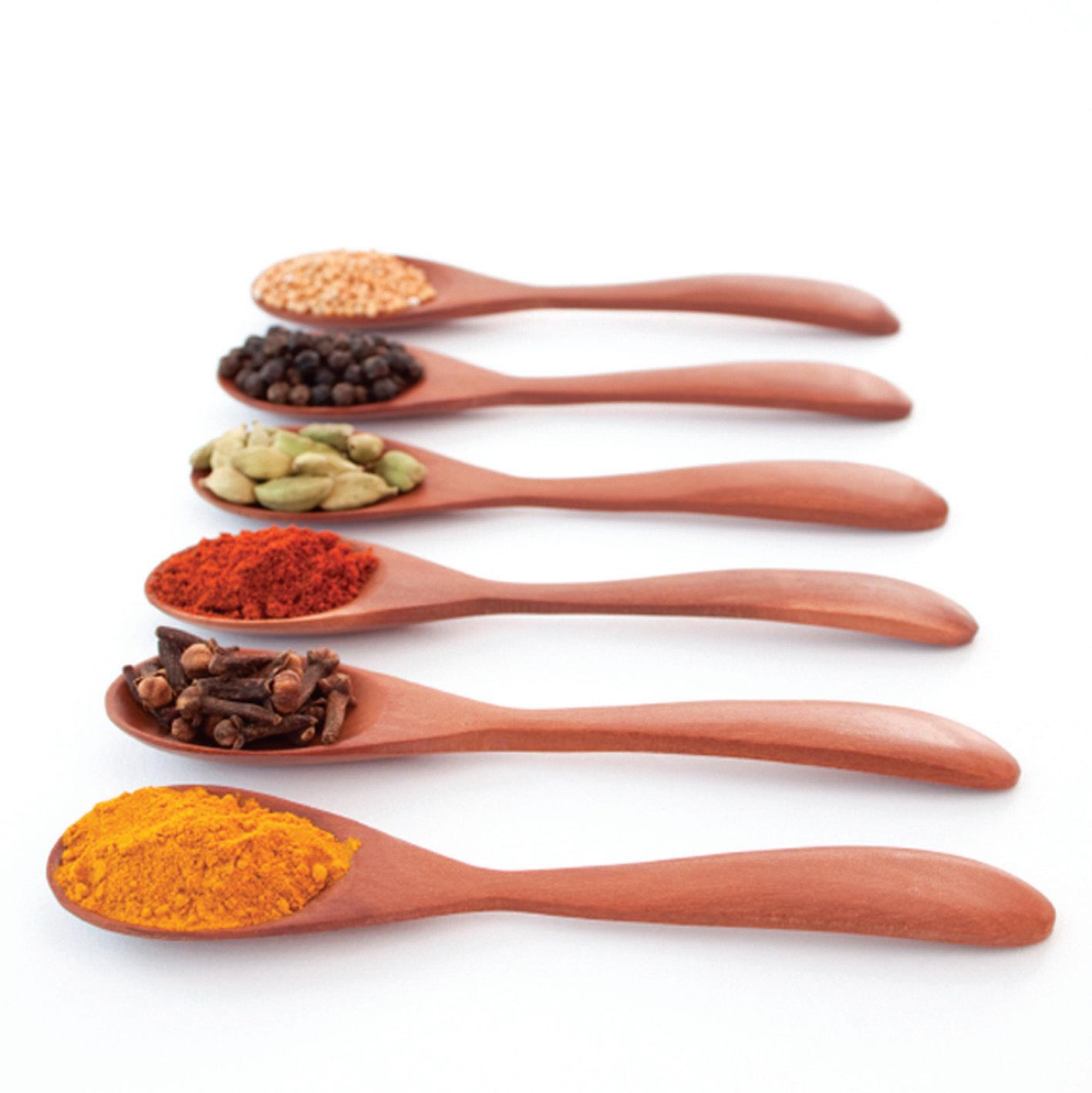
NATIONAL EDITION A s ip c e s h op w ith 143 Stephen Street (cnr Sackville Street), Blacktown Phone 02 9676 4677
www.indianspices.com.au
enquiry@singhfoodspices.com.au
Quantity Quality Service
Air International—Branch
Languages: English, Hindi, Tamil, Punjabi, Arabic www.travelairinternational.com Travel
The classical scene

– Varnam, Raga elaboration, Neruval Kalpana swaras. What more can one ask for!

Sudharshan Ravi (student of Uma Ayyar) presented a vocal recital in mid-March. Accompanied by Sanjay Ramaswamy on the violin and Nirmala Ayyar on the mridangam,
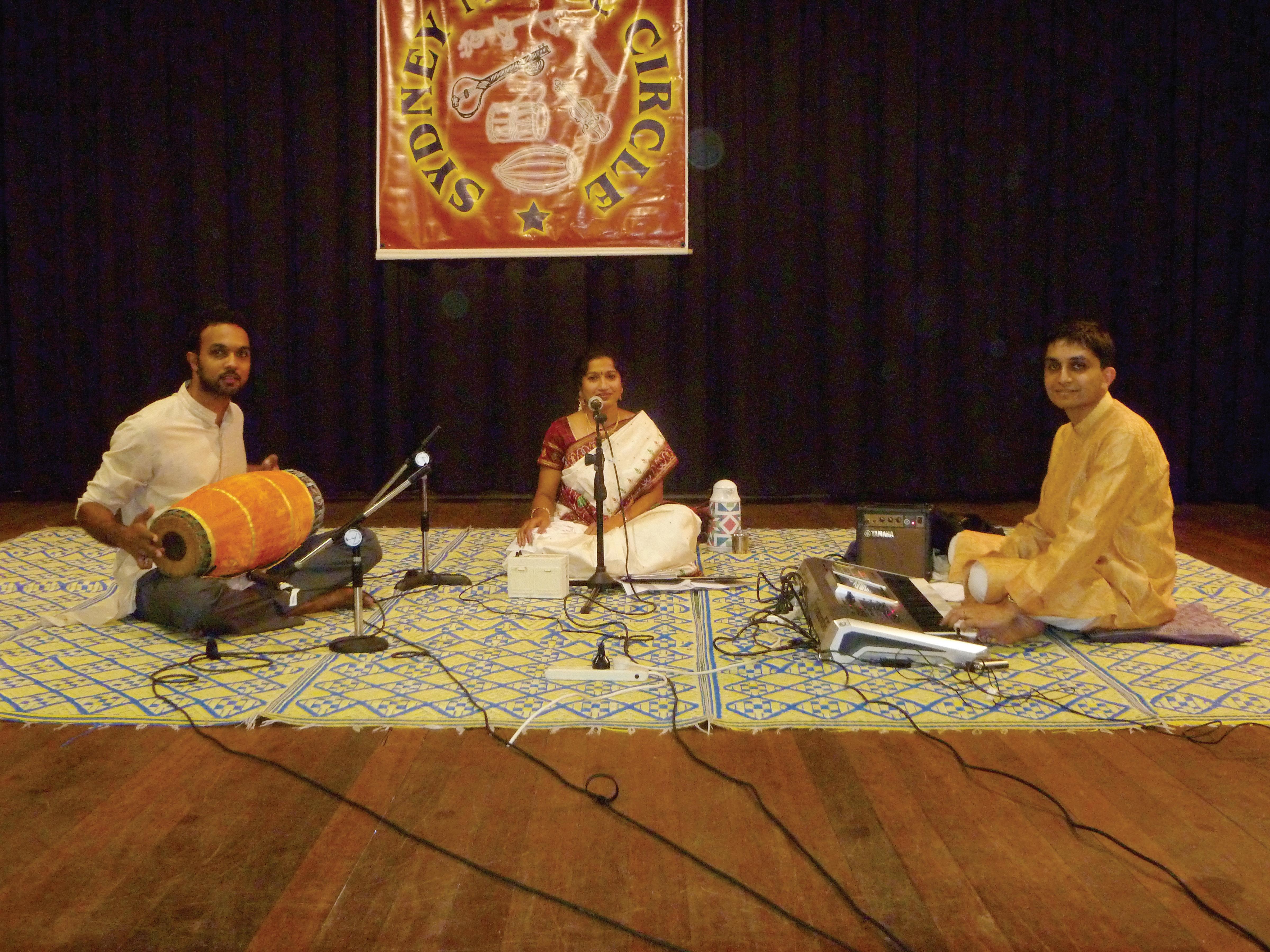
a good voice and appreciable skill. She was accompanied by K K Mudigonda on the violin
lovers of Sydney and performed after Rohini. She was accompanied by Mohan Ayyar on taniavartanam by Janakan, I might add, was a treat.
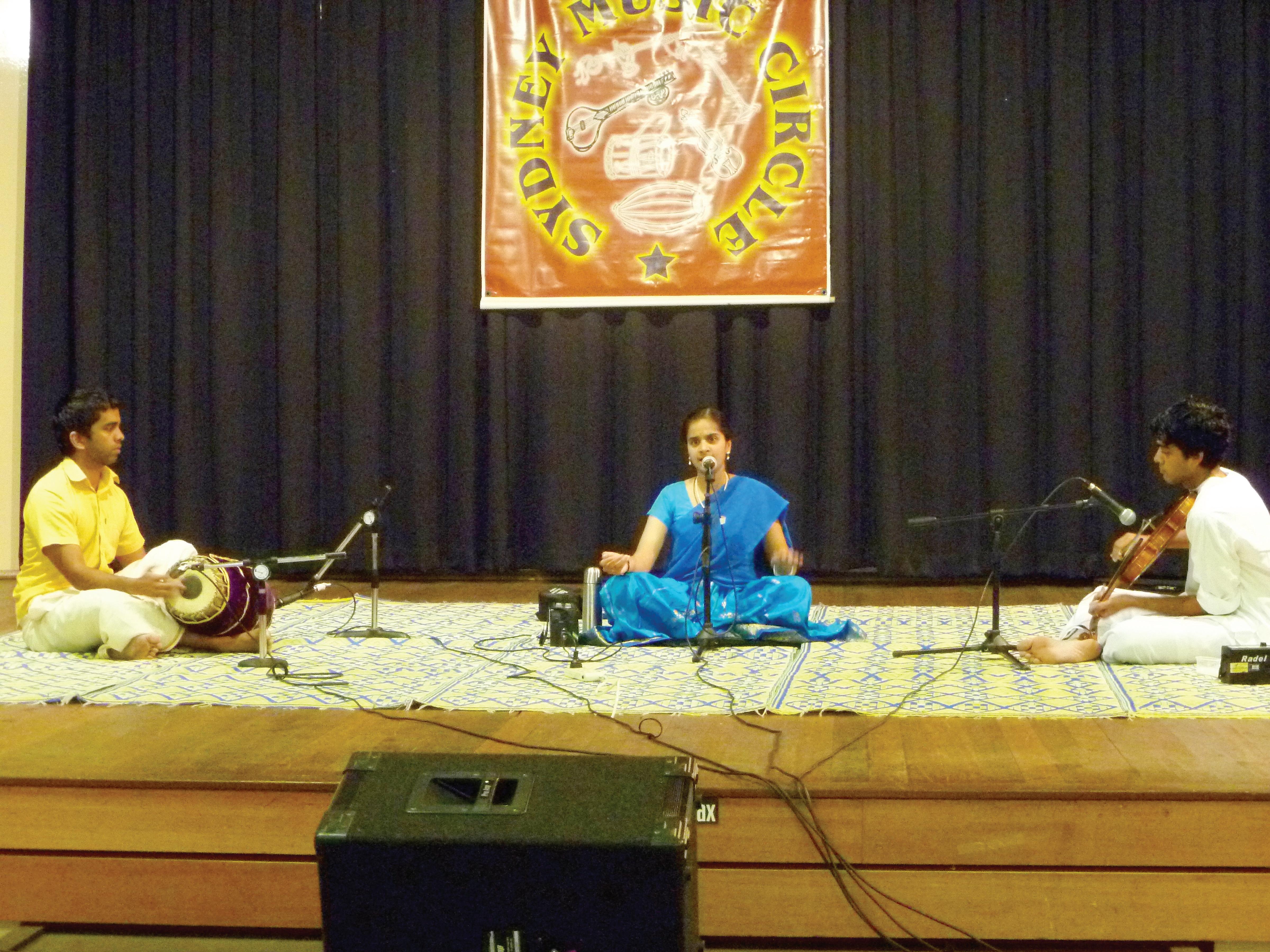
20 <> APRIL (2) 2011 INDIAN LINK ‘You name it, we have it’ Your one-stop spice shop
Centre 1 Station St, Thornleigh, NSW, 9481 8200 Shop 3 96-98 Wigram St, Harris Park, NSW 9893 8691 1/1 Pound Road, Hornsby, 2077 9477 2500
Himalaya Spice
Sindhuja Ganapathy Sangeetha Ayyar Rohini Prasad
A rare blend of humour and melody
 BY PRIYANKA TATER
BY PRIYANKA TATER
Padmabhushan Jagjit Singh has deservedly earned the title of ‘Ghazal King’. He has mesmerised his fans with a gift of more than 50 music albums through a journey of melody spanning half a century. The maestro is credited for the revival and popularity of ghazals, as well as his musical contribution to Hindi cinema, which has been significant as seen in the likes of Arth, Saath Saath and . Still, I can’t take credit for this R&D which is available to anyone with access to Wikipedia. But no Google search would have detailed the experience of seeing Jagjit Singh live in concert, which was a special one.

The first copy of his latest album Shukraana, a collection of 70 of his best tracks is put up for auction, the proceeds of which will go to the Red Cross for the Brisbane floods
Time: 6pm, venue: Sydney Town Hall. This was the hub of the event, pulling in Sydney’s Indian community on the night of April 16. I reached the venue at 6:30pm and was pleasantly surprised to see the Indian diaspora (around 500 people) waiting patiently for the star of the evening. Jagjit Singh has performed live in Sydney many times, but this certainly was a special occasion and one that called for an even more special celebration. This performance was Jagjit Singh’s golden tour on his 70th birthday, as he completes 50 years in the industry. Concert organiser Vijay Jogia of Music Beyond 2000, a well known face and voice around Sydney’s Indian community, was able to convince the maestro himself to come to Sydney and weave his magic for his many fans in this city.
It’s 7:30pm and the audience has already tolerated two warm-up performances. Vijay Jogia’s version of Kahin door jab din dhal jaaye has set the mood for the evening quite well. Suddenly the air is alive with applause, whistles, shutterbugs flashing and voila! On stage appears the voice of emotions, Jagjit Singh.

The maestro adjusts his harmonium and synchronises the sound with his team. “Good evening, satsri akaal, salaam aleikum and happy birthday!” Jagjit Singh’s sense of humour sends the audience bursting into peals of laughter. On his 70th birthday, Singh has committed to do 70 concerts around the world.
The humour seeps into his ghazals too and the musical evening kickstarts with Thukrao ab ki pyaar karo, main 70 ka hoon!, an ironic twist of the original Thukrao ab ke pyaar karo, main nashey mein hoon!, which leaves the crowd in splits.
From Jhuki jhuki si nazar to Hothon se chu lo tum Singh is on a roll, sporadically adding a pinch of humour to the performance. The jugalbandhis are a treat to watch too, but soon the interval acts the spoilsport. But before the break, Jagjit Singh is felicitated and there’s a surprise in store for all. The first copy of his latest
This performance was Jagjit Singh’s golden tour on his 70th birthday, as he completes 50 years in the industry
album Shukraana, a collection of 70 of his best tracks is put up for auction, the proceeds of which will go to the Red Cross for the Brisbane floods. The auction opens with $100, then to $400, $450, jumps to $1000, $1500… $2000 and finally the hammer goes down at $2500!
After a 20-minute break, the ghazal king takes centrestage yet again. The moment the maestro starts with the soulful Tumko dekha to ye khayaal aaya , the crowd breaks into a chant, matching its tune with Jagjit Singh’s. It reaches a crescendo when Singh switches gears to belt out a few Punjabi numbers. The Town Hall echoes with the sound of claps and whistles. The front row has already jumped out of their chairs. Now the backbenchers too move to the forefront and the floor has almost turned into a club dance floor, with Bhangra beats playing in the background. Sydneysiders are letting their hair down, and how!
Finally, the man responsible for uplifting and keeping alive ghazals gets a standing ovation from his fans. There certainly could have been no better way to bring the curtain down on this melodious evening.
APRIL (2) 2011 <> 21 NATIONAL EDITION
Half a century on, the ghazal maestro has proven that he still has the charisma and verve to mesmerise the audience
www.indianlink.com.au
Jagjit Singh with his latest album Shukrana
Unheard, but not silent
Gender bias supported by media hype has resulted in women students and their unpleasant experiences going unsupported and suppressed
BY TIM BLIGHT
When an Indian newspaper reported in early March that Indian students were the happiest group of nonlocal students in Australia, it seemed almost natural that opinion was sought from a young Indian male. While the allegedly racist attacks on Indian students in Australia during 2008-09 were widely publicized in the media, news coverage of the violence was decidedly lopsided in its gender approach. Regardless of the motivations for the attacks, it would appear to an outsider that these were almost exclusively perpetrated against men. Of course, common sense dictates that this was far from true, however the question of gender bias in Indian and Australian media is not a new story.
An unexpected encounter
Alia (not her real name), a South Asian hospitality student, was attacked walking through Melbourne in 2009. After leaving her college where she was studying for the upcoming exams, she was walking to Flinders Street Station on a particularly cold winter’s night. Despite not being of Indian origin, her skin colour and appearance could easily have her identified as
The Indian media is no better than the Australian media in this aspect; the experience of a female Indian student in Australia is a story which isn’t told as much as it should be.
one. Like many streets in Australia after dark, this one was deserted and she soon became aware of a man following her. “I started to walk faster,” she says. “It crossed my mind, but I didn’t think anything would happen.” Soon, the man drew closer to her, and Alia began feeling nervous. “Then, suddenly, he came up behind me and grabbed me around stomach,” recounts Alia, with a haunted expression. “He was yelling at me and pulling my hair. I tried to get him off me, and I screamed. He let go and I ran to get to the main street.”
Like many in the Indian and wider South Asian community, Alia is not fully convinced that her attack was racially motivated, noting that the man might have been mentally disturbed. However, considering the timing of the attack, it certainly did force her to consider her future as a student in Australia.

“It really scared me, and I didn’t go out for a couple of days after that, I was worried maybe he would recognize me,” she says.
Male-dominated media
Typically, the media seeks to provide news in a digestible format for its audience and while idealists claim that society is inherently egalitarian, a quick glance at nearly any medium reveals a strong gender bias. Domestic or social issues are often discussed on chat shows hosted by women; ‘hard’ news is
often presented or hosted by men. Equally, on commercial television, noncontact sports such as tennis and netball are the domain of women, while rougher pursuits such as rugby and boxing are the realm of men. It’s all part of constructing man’s bravado and portraying women as somehow more sensitive. So it stands to reason that when violence and potential racism are unleashed upon innocent individuals, the media seek reaction from a male victim before they look to a female. It makes for great viewing, with the story told as an ‘honourable battle’ featuring heroic, virtuous warriors fighting morally bankrupt villains. Perhaps the audience even expects this type of story-telling.
The woes of stereotype
Does any of this matter? In the (supposed) age of gender equality, it should. The Indian media is no better than the Australian media in this aspect; the experience of a female Indian student in Australia is a story which isn’t told as much as it should be. This may be associated with traditional social strictures in both countries which sees a woman as equally vulnerable and defenceless, while also as the bearer of a family or a nation’s honour. An attack on a woman is a deep wound, cutting right to the core of a society, and as such, it makes for unpopular news.
Alia did not report her attack to the police because she felt her experience was not serious enough. She also didn’t relay the experience to her parents in case they panicked and pulled the plug on her course. This highlights a major trust gap which is perpetuated by and also fuels, media speculation about racism and violence in Australia. Many male and female Indian students in Australia lead a double life, working long hours in menial jobs, struggling to make ends meet and dealing with personal issues. Meanwhile, they must paint a rosy picture for their parents to allay concerns and prove that their gamble of moving to a new country to study is paying off. Men risk their parents’ ordering them back home for their safety and being relegated to a life in the family business, while for women the consequences are potentially far more serious. Although Indian society has progressed in leaps and bounds, many parents would still baulk at the thought of their daughter having an Indian boyfriend outside of wedlock. If their daughter were physically (or worse still, sexually) attacked abroad, college fees withdrawn, a flight home, an arranged marriage and a life of domesticity would often be the kneejerk antidote provided.
Below the surface
Roanna Gonsalves is a writer of Indian origin, who recently worked on a theatre piece based on the Indian student attacks. She also feels that Indian women are under-represented in reportage on this topic. “Silence should not be interpreted as bliss… we have all heard anecdotally about sexual abuse of female Indian students by their Indian employers, and we’ve all been aghast at the recent sexual assault and murder of Tosha Thakkar, a female Indian student in Sydney. This just points to the trauma that some women go through, but which we don’t hear about in the mainstream media. It’s all running below the surface,” says Gonsalves. She attributes this to the feelings of shame commonly experienced by victims of violence when thrust into the public eye, exacerbated by the isolation of being part of a minority community in Australia. Additionally, she points to social and cultural factors: “Many Indian women have been socialised into being seen and not heard, even when they have much to say. Possibly, the physical and emotional violence that female Indian students face here is a localised ‘application’, if you will, of something that’s global. That is, sexual abuse, marriages of convenience, etc., are not particular to the female Indian student experience in Australia, but are the burden of women all over the world, and as such are unfortunately not particularly newsworthy in a male-dominated media landscape,” she answers.
The absence of widespread discourse about racist violence against female Indian students is the result of unwittingly learned gender roles and well-intentioned parental concern. However, the media’s hysterical storytelling and fear-mongering, and silence on other important perspectives is not helpful. Greater, more incisive reporting would surely lead to a greater awareness of the female student experience of Australia. It could reduce the number of students who return to India at request of their concerned parents, and encourage more to stay in Australia to complete their degrees and become confident, successful citizens and professionals. Could there be a better answer to racism?

22 <> APRIL (2) 2011 INDIAN LINK
STUDENTS
www.indianlink.com.au
Budget and own tomorrow
By AMP Financial Planner Nalini Sankar
Just as the Government hands down the Federal Budget – its financial plan for the nation – now is a good time for people to take stock of their personal finances and establish a plan of their own.
With rising interest rates leading to higher home loan repayments, many Australians may be feeling the pinch. By taking time to reassess their spending and making sure their money is working as hard as possible, people can make a real difference to their financial fitness.
Whether it’s the Government or families, small businesses or individuals, setting a budget and sticking to it is the cornerstone of good financial management. Without a budget there is no real way of knowing how much is left at the end of the week to save, invest or go towards reducing debt.
Budgeting requires people to look ahead and consider their future goals. By establishing a budget, people can set financial goals and more easily monitor their expenses. After all, unless people take control of their finances, it could soon take control of them.
Let’s look at a few things people need to consider when tackling a budget:
Always overestimate your expenditure for the next 12 months. It allows a buffer for price rises and increasing loan repayments.
Ensure you either have an emergency fund or access to cash through a mortgage redraw facility as a contingency for life’s unexpected expenses.
With rising property values, don’t just get a line of credit and use your house like a personal ATM machine. The life expectancy of a loan should reflect the life expectancy of the asset. Use a separate working account. It’s okay to use credit cards if you’re disciplined, but set aside money into the working account to cover fixed expenses like phone bills, rates and body corporate expenses. And don’t touch the working account – it’s not really your money.
• Save for the long-term goals first. People could consider saving 20 per cent for the long term for things like retirement funding and kids education and then save for the medium-term goals such as a deposit on a first home. Saving for the short term for things like end of year holidays and Christmas presents should come last.
• Differentiate “wants” and “needs”. Don’t be too hard on yourself, but do you really need the $100 per month cable TV package? You probably don’t watch half the programs. Cars are big traps too. It’s nice to drive the latest and greatest, but don’t live for your car. Be sensible.
• Always reconcile your bank statements and credit card statements. Human error can cost you. It’s also a good way of tracking your spending habits.
Once a person has successfully prepared a budget, the biggest and most important step is to be disciplined with their spending and stick to it.
It is also very important for people to strategically use any excess funds in their budget to their best advantage. Depending on a person’s personal circumstances, and with the help of a financial planner, people may choose to reduce debt, create wealth through strategies such as managed funds and gearing, or salary sacrifice into super to boost their retirement nest egg. Having a budget puts people in control of their financial future and will enable them to own tomorrow
Nalini Sankar AMP Financial Planner Associate of Financial Planning Association of
Principal

Australia Limited

WealthSmart Financial Services

Phone 0404 022 057 email nalini.sankar@ampfp.com.au Web: www.wealthsmart.amp.com.au
*Nalini Sankar trading as WealthSmart Financial Services is an Authorised Representative of AMP Financial Planning Pty Ltd, ABN 89 051 208 327, AFS Licence No. 232706. Any advice given is general only and has not taken into account your objectives, financial situation or needs. Because of this, before acting on any advice, you should consult a financial planner to consider how appropriate the advice is to your objectives, financial situation and needs.
APRIL (2) 2011 <> 23 NATIONAL EDITION
PeopleParties






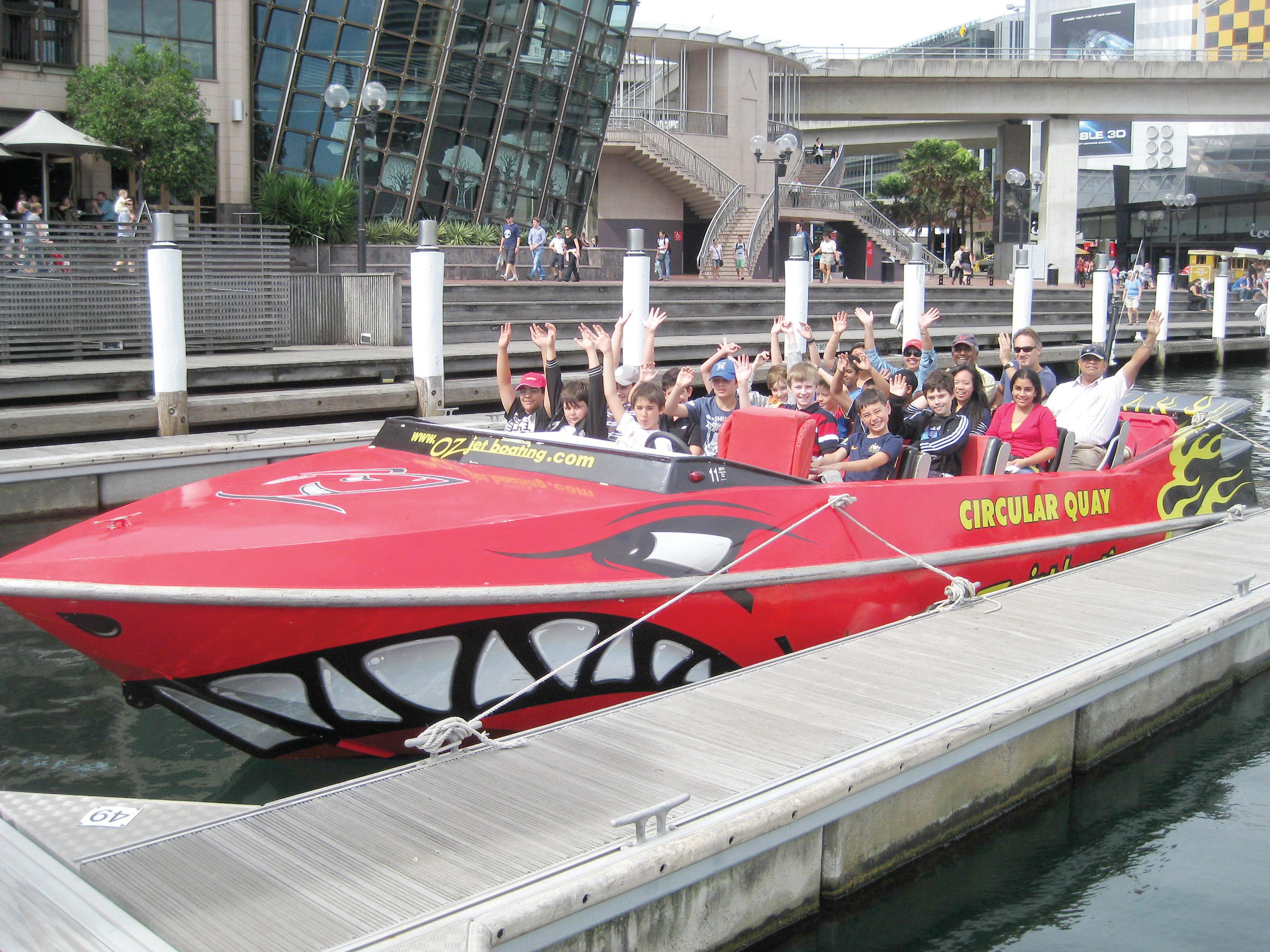
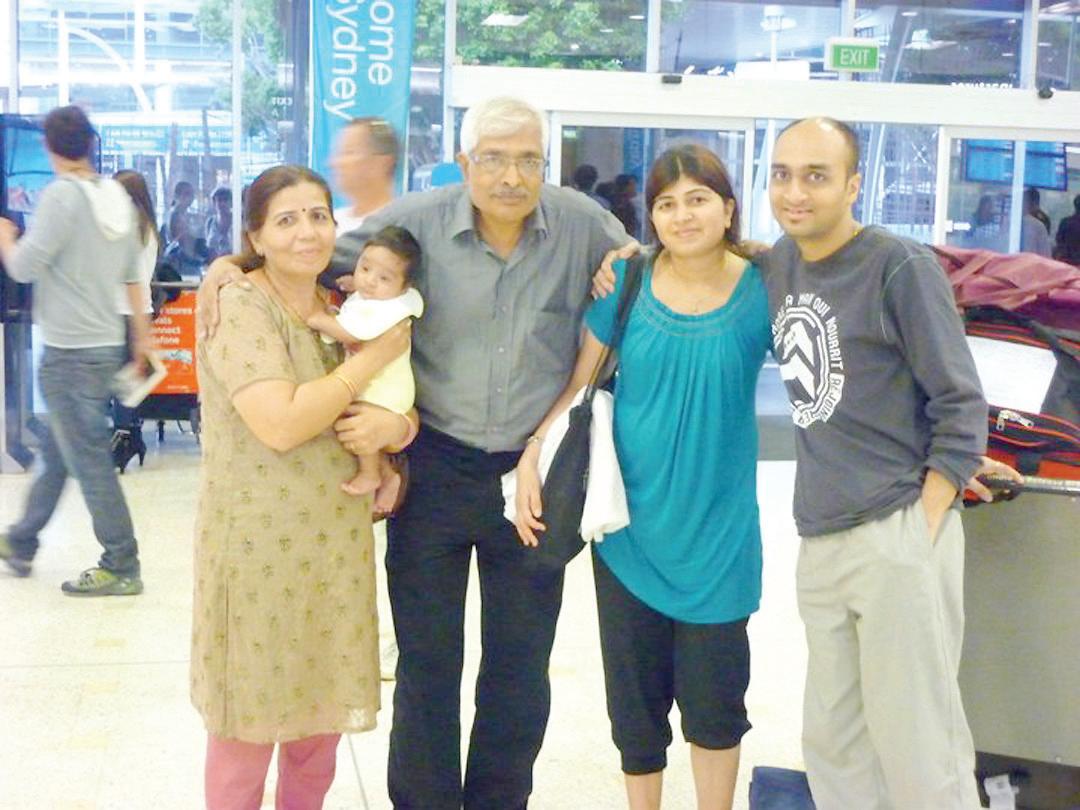
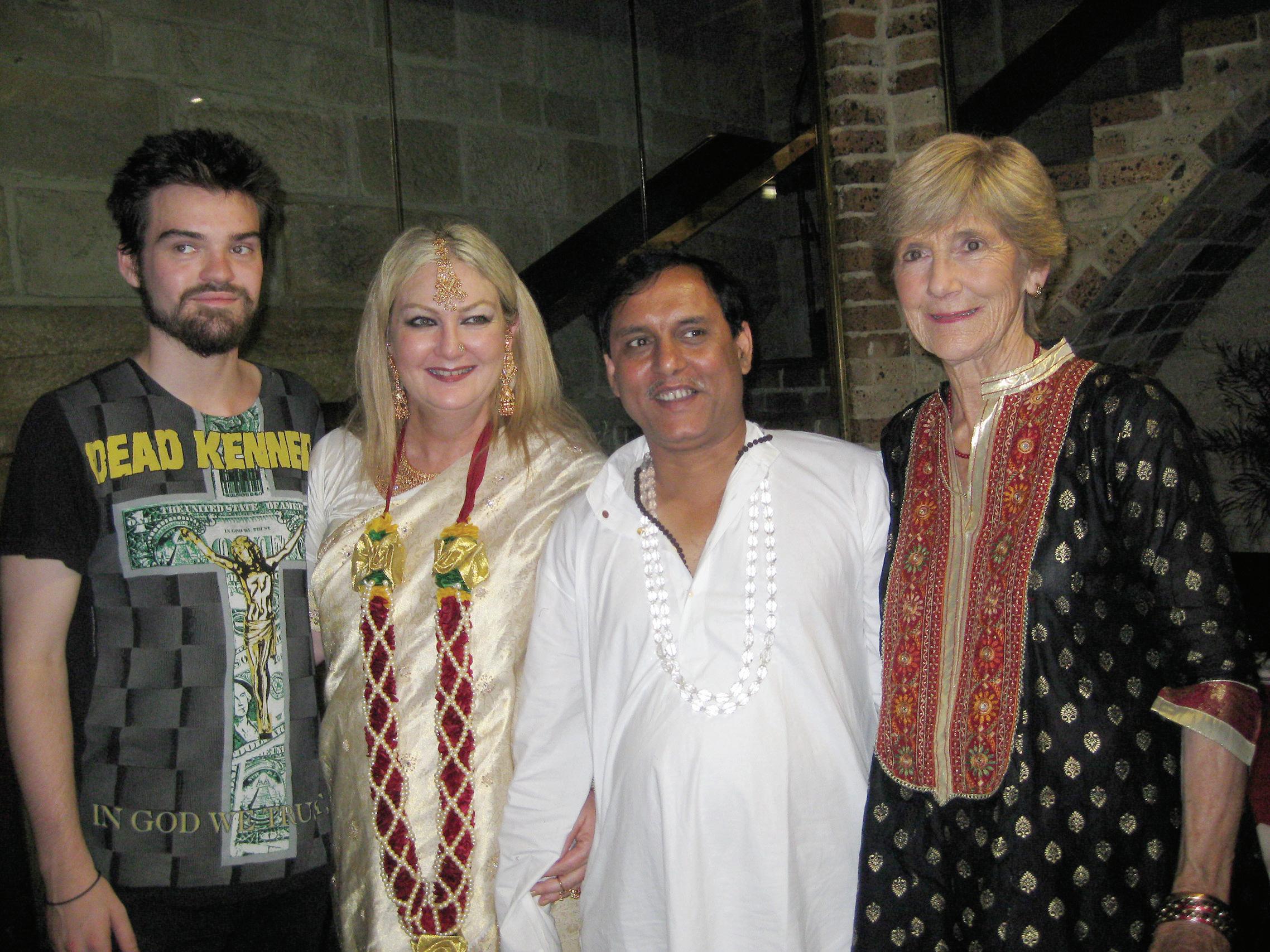




the airport to receive
from India It’s a jet-boating party for Manan’s 12th birthday Three-year-old Aarav Chawla supports his team during the India-Sri Lanka World Cup cricket final
Baby
Aryan Ashar is at
his grandparents visiting
Do you have a photo for this page? Email it to info@indianlink.com.au
with family members on their
day
Shelyah Courteney and Lalla Tripathi
wedding

APRIL (2) 2011 <> 25 NATIONAL EDITION











26 <> APRIL (2) 2011 INDIAN LINK
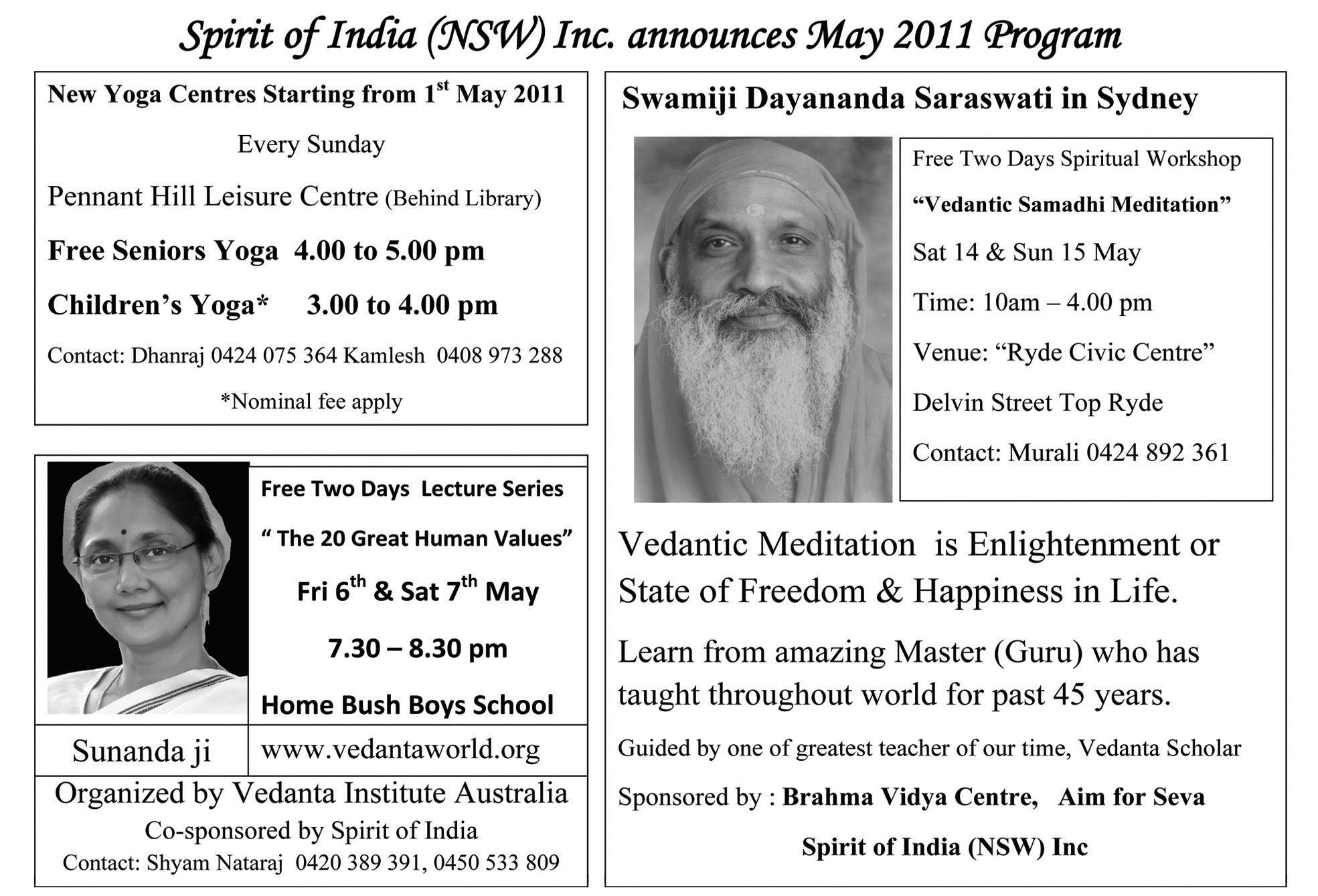
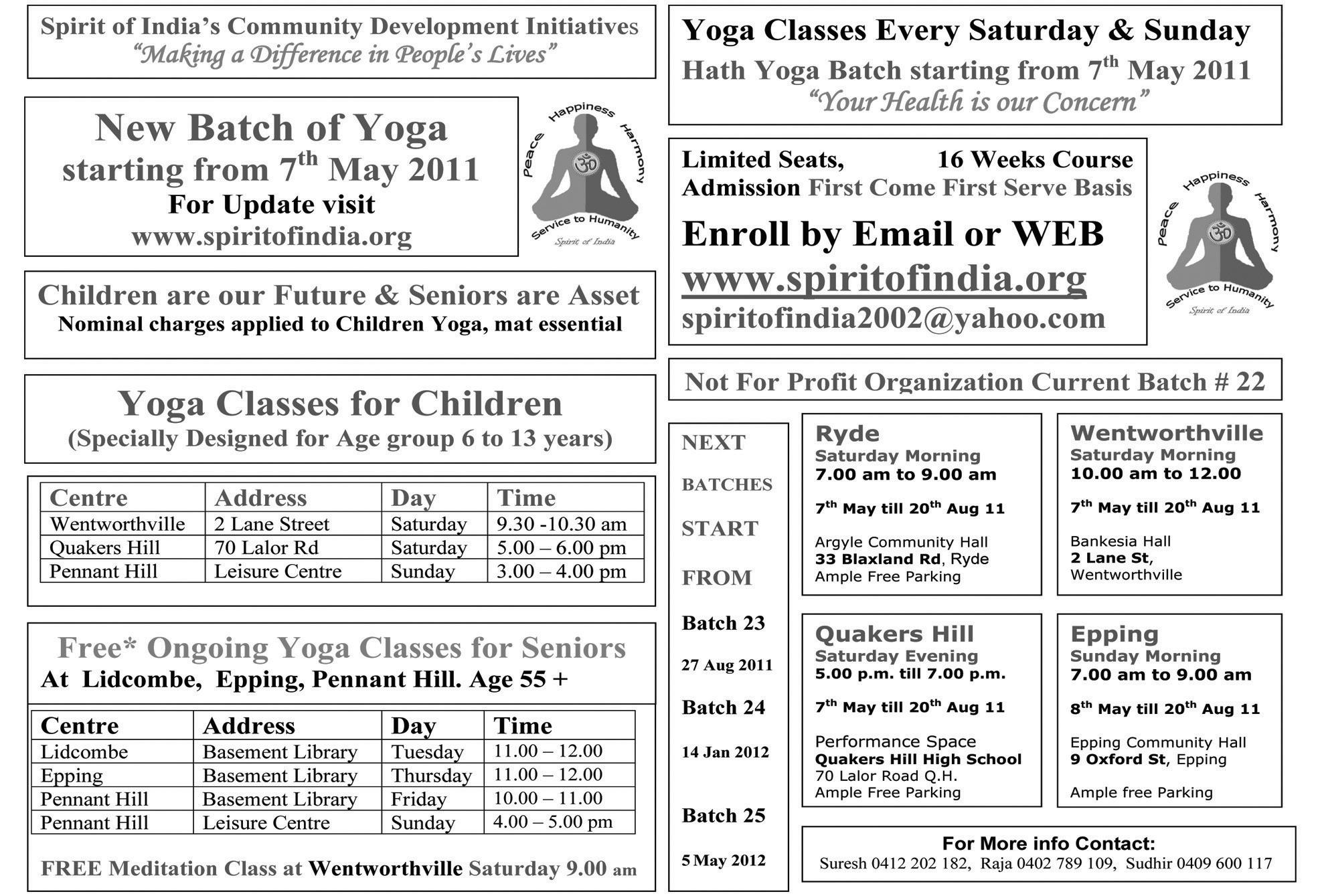
APRIL (2) 2011 <> 27 NATIONAL EDITION
Indian American Siddhartha
Mukherjee bags Pulitzer
Indian American cancer specvialist Siddhartha Mukherjee has bagged this year’s Pulitzer prize in the general non-fiction category for his book The Emperor of All Maladies: A Biography of Cancer


Delhi-born Mukherjee’s book has been described as “an elegant inquiry, at once clinical and personal, into the long history of an insidious disease that, despite treatment breakthroughs, still bedevils medical science”.
The finalists in the category were The Shallows: What the Internet Is Doing to Our Brain by Nicholas Carr and Empire of the Summer Moon: Quanah Parker and the Rise and Fall of the Comanches, the Most Powerful Indian Tribe in American History by S.C. Gwynne.
An assistant professor of medicine at Columbia University and a staff cancer physician at Columbia University Medical Center, Mukherjee had said in an interview in December last year: “Cancer is growing dramatically in certain parts of South Asia.”
Mukherjee advocated a strong anti-smoking campaign and breast cancer screening to battle the growing incidence of the disease in India.
Less than a month after its publication, Mukherjee’s book, published by Scribner, featured among “The 10 Best Books of 2010”
tobacco smoking as “clearly one culprit among young men and women”.
“But there are other culprits too,” he said. “As the population ages and other diseases are slowly eliminated, cancer begins to come about.”
“Cancer rises in the double negative only when all the other killers have been killed. So I think that’s beginning to occur in some parts of South Asia.”
Mukherjee, 40, who grew up in New Delhi’s Safdarjung Enclave, “immersed in reading and books” at home and studied at St. Columba’s School, says he “came into oncology in a sort of reverse, in the sense that I first trained as a cellular biologist when I was in Oxford as a Rhodes scholar”.
“So I really came from the cell into medicine. Many people first train in medicine, then eventually get fascinated by cells.”
The book isn’t meant for the medical profession alone, he said. “The target is everyone. The point of this book was to make this world of medicine and science and culture accessible to anyone who is interested,” Mukherjee said.
“This is a disease that has developed in our times in a very poignant way. So I intend this book to be read by anyone who wishes to find out about it: patients and people whose loved ones are affected by cancer or any person interested in its history.”
Foreign operators queuing up for Bollywood tours
Guess who is making a beeline for Bollywood tours? Foreign tour operators, especially those from Europe and Australia, says a company that organises trips to film sets and to the residences of popular movie stars.
Bollywood Tourism, the company, says it is getting an amazing response from foreign tour operators at the Great Indian Travel Bazar (GITB) which was held recently in Jaipur.
“The response we got has been amazing. Apart from the NRI market, we also witnessed a huge amount of interest from countries like Europe and Australia,” said Poonam Arora, head marketing and operations, Bollywood Tourism.
The ratio of Indian and foreign tour operators coming to the stall was 30:70, she said.
With each tour, the company offers visits to film sets where shooting is in progress. While the cost of a full day trip is $150, a half day journey costs $125. India, after all, has one of the largest filmmaking industries in the world, churning out over 1,000 movies every year.
“Film and television stars are a common sight at these sets. However, we do not guarantee meeting them,” said Arora.
Talking about the interest in Bollywood among foreign nationals, she said the industry had become an international brand, giving tourism a new dimension.
Bollywood movies are highly popular in foreign markets. Also, with English subtitles, more and more foreigners are getting curious about the making of these films, she added.
The company has partnered industry leaders such as Balaji Telefilms, Big ND studios, Whistling Woods and Anupam Kher’s Actor Prepares academy.
The tour also offers customised products, which include sari draping sessions, portfolio creation and makeover sessions, which are very popular among the foreigners.
An initiative of the Federation of Indian Chambers of Commerce and Industry (FICCI), GITB aims at establishing a global platform to stimulate and promote inbound tourism to India.
The bazaar had a sombre start after the Rajasthan government declared a state of mourning following the death of the Maharaja of Jaipur, Sawai Bhawani Singh.
The objective of the three-day long event was to reinforce India as a world class tourism destination and provide opportunity to interact with foreign buyers, policy makers, investors and focus on inbound tourism.
The mart had around 220 Indian exhibitors and 200 foreign tour operators from across 50 countries.
Next five year plan to aim at double-digit growth: Ashwani Kumar
India’s 12th Five Year Plan (2012-13 to 201718) will focus on infrastructure and aim at double-digit growth with the approach paper set to get a final shape in six months, Minister of State for Planning Ashwani Kumar has said.
“Infrastructure deficit in our country is costing us two percentage points in terms of our gross domestic product (GDP),” Kumar said in an inteview ahead of the meeting of the full Planning Commission, presided over by Prime Minister Manmohan Singh.
“We would like to achieve double-digit growth over the next five year plan. That’s our aim. That is our vision. Even our prime minister has said a growth rate of 10 percent
is well within India’s reach. I hope and pray we will succeed,” the minister added.
India registered 8-percent growth in 2009-10 and is expected to have registered a 8.6-percent economic expansion during the previous year ended March 31, as per the estimates of the Central Statistical Organisation.
According to Ashwani Kumar, the meeting will discuss the finer points of the Five Year Plan and the prime minister, who is also the chairman of the Planning Commission, was expected to give a broad vision on the programmes to be pursued during the period.
The prime minister has estimated that the country will need as much as $1 trillion worth of investment in infrastructure during the next plan and has called for major rehaul of the policies and procedures to be able to attract such quantum of funds.
“Yes, on infrastructure, but for telecommunications, we were not able to achieve some of the targets set for the current plan period. That is why there we are giving that much emphasis to this crucial area,” the minister said.
“We would need private-public partnership on a large scale to ensure substantial private sector investment in infrastructure,” said Ashwani Kumar, who is also also the minister of state for parliamentary affairs and science and technology.
He said all policies were being finalised in consultation with stakeholders, including the non-government organisations and the civil sopciety, to ensure transparent and democratic process.
Ashwani Kumar also told IANS that the Planning Commission was aware of the finance ministry’s opposition to a proposal to hire 20 experts from outside as there were already 60 such advisors.
“We are aware of their views. No final decision has been taken. We will duly consider the matter before taking a decision.”
The minister also spoke about the existing subsidy regime and the need to curtail such spending so that more funds are available for development. “But subsidies are also an important tool for state intervention to mitigate the burden on poor,” he said.
“Yet we also need to be realistic. Subsidies should be within the parameters of fiscal prudence.”
Ashwani Kumar also said with India having the world’s largest young population, the government was focusing on skills development to ensure better employability of its youth, to be able to reap the demographic dividend.
“In addition, we will focus on monitoring the progress of our flagship programmes to address any deficiencies in implementation.”
Indians need be more prepared for natural calamities: Experts
Within a month after a magnitude 9.0 earthquake struck Japan, India experienced two moderate tremors. Were these warnings for something bigger? If experts are to be believed, they were and say Indians need to be more prepared to deal with natural calamities.
“Some of these could also be seen as a precursor for something bigger, considering India’s vulnerability to earthquakes because of its location in a high risk seismic zone,” said N.V.C. Menon, former member of the National Disaster Management Authority (NDMA).
According to him, it is important to launch an awareness campaign to prepare Indian households to prepare them in responding to natural calamities such as the one that wreaked destruction in Japan.
“We could face massive destruction if a high intensity earthquake strikes India,” Menon said, stressing there is the “need for a massive awareness campaign as people here are not clear about the steps needed to reduce the impact of an earthquake.”
28 <> APRIL (2) 2011 INDIAN LINK
HomeBush Office Call: 0418 965 834 Starts from $120 +off Parramtta Rd +next to Strathfield +include all expense
Siddhartha Mukherjee
The government, under the aegis of NDMA, is working to enhance India’s preparedness to face an event like that in Japan.
However, people should also prepare themselves to deal with an emergency, Menon said.
Households in quake-prone areas should prepare emergency kits with candles, medicines, match boxes, important documents and other necessary items so that they can evacuate immediately in the event of an earthquake.
Studies have shown that more than 60 percent of India is vulnerable to earthquakes and most of the deaths during a quake are caused by the collapse of buildings.
According to geographical data, Kashmir, Punjab, the western and central Himalayas, the northeastern region and the Rann of Kutch fall under the Zone 5 category, referred to as the Very High Damage Risk Zone.
“Northeastern states like Assam and Meghalaya and cities like Shimla and Delhi are sitting on the brink of a disaster,” said V.K. Sharma, professor of disaster management at the Indian Institute of Public Administration.
“With about 685 slums and congested localities in the old city with maximum number of unsafe buildings, Delhi could collapse in the event of a high intensity earthquake,” warned Sharma.
More than 50 percent of Shimla could also collapse, he added.
The biggest problem, according to Sharma, lies in the non-adherence of the prescribed building codes by private builders while erecting any new structure.

The National Building Codes of India contains stipulations for fire safety requirements, materials to be used, structural design and construction, including safety and building and plumbing services.
In cities maintained by municipal corporations it is expected that all building codes are followed for new constructions.
“But very often the builders and contractors violate the codes,” Menon said. This was the reason for the collapse of the buildings in Ahmedabad and Bhuj in Gujarat during the 2002 earthquake even though they were almost 480 km away from the epicentre of earthquake, he asserted.
The condition is least encouraging in rural areas and in those urban areas where private constructors are hired for building purposes.
“In these cases, people employ local constructors who have no engineering background and are not aware of any code,” said the expert.
Menon advised a few things that can be done by households to increase the earthquake resistance of existing buildings.
“For existing buildings, rapid visual screening by trained civil engineers can help

find its quake resistance capacity,” he said. The study of the soil type and the possibility of sand liquifaction that can happen during quake vibrations should also done, the expert suggested.
India’s export surges 37.5 percent to $246 bn in 2010-11
India’s exports surged 37.5 percent to $245.9 billion in 2010-11, substantially surpassing the official target of $200 billion, on the back of nearly 85 percent jump in engineering exports, Commerce and Industry Minister Anand Sharma revealed recently.
“It is indeed heartening to see that our exports for the year ending March 31, 2011 touched $245.9 billion,” Sharma told reporters in New Delhi.
The government had set a target of $200 billion of export for 2010-11, which was
Export of petroleum products rose 50.58 percent to $42.45 billion.
The gems and jewellery sector, which is a considerable employer, saw an export of $33.54 billion, a growth of 15.34 percent over the previous year.
“India today is looked upon as one of the leading players in the global arena. The growth path will continue in coming year as well,” said Rajiv Jain, chairman of the Gems and Jewellery Export Promotion Council.
The performance of this industry is critical as it contributes 16.67 percent of India’s total merchandise exports. The growth in the sector was primarily driven by cut and polished diamonds which registered an increase of 54.91 percent in 2010-11.
Drugs and pharmaceuticals sectors, for which India has gained considerable global reputation, saw exports worth $10.32 billion,
strikes are no more the potent weapons they were when Mahatma Gandhi unleashed them against the Raj.
Although a simple man like the Mahatma, Hazare is not at home in English, which in today’s India can well be a disadvantage considering the profile of youthful and urban India.
But he had other attributes: austere life and a history of struggles - and victories.
He also had the backing of people who too enjoy the reputation of honesty, including Magsaysay award winners Kiran Bedi and Arvind Kejriwal.
Hazare had another weapon, one that was not of his making: it was the widespread anger among Indians in the wake of the scandalous revelations of corruption blamed on Suresh Kalmadi, A. Raja and more.
So Hazare proved to be the spark that ignited a wildfire in India.
Within days, people in state after state and in town after town, cutting across their religious and other barriers, realized that they finally had a man who was articulating their anger, their innermost frustration, and their hopes.
The 24-hour television channels only contributed to the cause. They did not create the mass resentment.
The volcano exploded. Jantar Mantar, an 18th century observatory, became Cairo’s Tahrir Square, drawing tens of thousands of young and old, educated and not so educated, retired and the still working, politically conscious and politically apathetic, housewives and Bollywood.
It was dominantly middle class though.
Suddenly, people strained to hear every word of a man they had never met before. By Day 4, the protest site had become so thick with people that there was no place to stand without being jostled.
15 percent higher than the previous fiscal’s figure.
“Exports have indeed exceeded our expectations. This is the first time exports have crossed $200 billion mark. In fact, beating our target, it crossed $200 billion mark in February itself,” the minister said.
India’s total imports in 2010-11 were $350.3 billion, resulting in a trade deficit of $104.4 billion.
In March, exports jumped 43.9 percent to $29.1 billion.
On growth prospects in the coming years, Sharma said exports were targeted to nearly double to $450 billion by 2014.
“Based on the performance of exports, we are confident we will achieve the target of exports of $450 billion which we have set for ourselves in the draft strategy paper,” he said.
Exports of engineering goods recorded the sharpest growth in 2010-11. Engineering exports surged 84.76 percent to $60 billion.
garments exports rose 4.23 percent to $11.1 billion.
However, exports of iron ore fell 25 percent to $4.5 billion in the reporting fiscal.
Anna Hazare has become symbol for a better India
It needed a 73-year-old man with no pretensions, a school dropout at that, to wake up India.And in just five days, Anna Hazare proved that it wasn’t enough to have an honest prime minister if the country really needed to battle and overcome the cancer of corruption.
That he managed to unite a people as diverse as Indians on an issue like Lokpal bill - which few in the best of times would even know what it is all about - is indeed a remarkable achievement.
Imagine this. Most Indians had no knowledge of who the man was when the steely crusader began his fast in the heart of New Delhi April 5.
In a country of cynical millions, hunger
There was undisguised display of patriotism - the euphoria matched only by the celebrations that followed India’s World Cup victory in cricket.
People waved the Indian flag - prompting Hazare to call his crusade against corruption a second independence movement.

The backdrop of the protest site had a map of India with the proverbial Bharat Mata. There was a portrait of Mahatma Gandhi and of Bhagat Singh, India’s Che.
Each time the fasting man spoke, the crowds roared. Complete strangers became one.
For a long time no one had heard nonpolitical crowds raise such full throated cries of Vande Mataram and Mahatma Gandhi ki Jai on the streets.
By the time Hazare called off his fast, many were begging to touch his feet. He was their hero, their hope.
Like it or not, Anna Hazare is no more a name. He has become a symbol.
APRIL (2) 2011 <> 29 NATIONAL EDITION
IANS
Anna Hazare
The temple circuit
BY PETRA O’NEILL
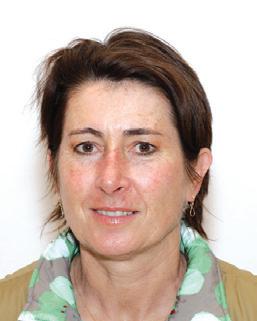
Leaving Chennai, the capital of Tamil Nadu behind, my driver Guna and I made an early start for the temple circuit, heading south along the coastline with its refreshing smell of salt air, the Bay of Bengal on one side and green rice paddy fields on the other. Veering past cows, autorickshaws, overloaded trucks and buses, I was in no hurry to arrive at our destination of Pondicherry, but as is the case for the most pleasurable journeys, time slipped by too fast.
The same road that takes you there also turns off into Fisherman’s Cove, a pleasant seaside settlement of villas and cottages. I could have easily spent the day here relaxing by the poolside and walking along the beach. Instead, I had to do with just a pit stop in the form of a refreshing lime juice at the Vivanta by Taj Hotel.
Astounding architecture and sculpture
Few things in India express the continuous presence of Hindu gods better than the ancient, massive temple complexes found in Tamil Nadu. The so-called ‘temple circuit’ is the main draw for travellers here, as it has been for centuries. We arrived in Mamallapuram, which has some of the oldest stone temples in India. It was already crowded with Indian tourists and juice vendors standing next to carts piled high with fresh green coconuts.
The Five Rathas are an example of Indian rock-cut architecture dating from the 7th century. Created during the reign of King Narasimha Varman I (630-670AD) each temple was carved from one single massive slab of pink granite in the Dravidian style. Named after the Pandavas - Arjuna, Bhima, Yudhishtra, NakulaSahadeva and Draupadi, they are associated with the great epic Mahabharata. Draupadi is shaped like a hut and is dedicated to the goddess Durga. Arjuna has a small portico and carved pillar stones dedicated to Lord Shiva. Nakul and Sahdeva have huge elephant sculptures dedicated to the God of Rain, Lord Indra. The largest Yudhishtra, is also dedicated to Lord Shiva.
The Shore Temple

Perched on a promontory overlooking a sandy beach and the crashing waves of the Bay of Bengal sits the town’s most important architectural site, the Shore Temple, built from 700-728AD during the Pallava dynasty, and considered one of the earliest structural stone temples (that is not rock cut) in southern India, it is a forerunner of the Dravidian style. Two carved layered towers, badly eroded by centuries of exposure to the elements of salt spray and wind, was of a style that had enormous influence on the development of later temples, both in India and southeast Asia. As one of the group of monuments at Mamallapuram, it has also been classified as a World Heritage Site. Vishnu is found reclining inside one shrine, while two others are dedicated to Shiva. A low boundary wall topped by carved bulls surrounds the temple, with lions at the base of the pillars.
Perhaps the most beautiful of the monuments found here is one of the world’s largest bas reliefs known as ‘Arjuna’s Penance’. Dozens of figures from Hindu mythology are carved from the surface of an enormous granite boulder. The central scenes depict a well-known tale from the Mahabharata, that of the revered warrior Arjuna entering the forest to seek the aid of Shiva in a coming battle.
The Chola temples

Heading further south we continued on to Pondicherry, the former French colonial town that is well-deserving of a few days’ stay. When planning this trip, I’d wanted to spend time in
Pondicherry to wander the streets on foot. But a despondent Guna, instead of enjoying a day off, had spent it sitting on the beach waiting for me!
We drove southwest from Pondicherry to reach the first of three great Chola temples, Airavatesvara temple at Darasuram. Built of granite during the reign of Rajaraja II (1146-72AD) there are friezes of dancing figures, elephants and crocodiles, and sculptures of black basalt.
Gangaaikondacholapuram is an absolute joy to behold. Once the capital of the Chola King Rajendra (1012-44AD), the town has all but disappeared. The temple built by him was designed to rival the one built by his father, Rajaraja the Great in Thanjavur. It is over 100 metres long and 40 metres wide with a long colonnaded passage, linking the hall to the shrine. The detailed statues and friezes are as remarkable as the temple’s name with demon statues flanking each doorway.
The drive took us deep into the countryside, past roadside villages. The landscape was flat and drier than what I had imagined.
In Thanjavur, I visited the greatest architectural achievement of the Cholas, who ruled a large part of southern India from this city, the Brihadishwara Temple, or Big Temple. An achievement of King Rajaraja who ruled from 985-1012AD, the impressive scale is apparent as soon as you walk towards it, entering from the outer courtyard towards the interior. The tower above the inner sanctum is the tallest in India and is topped with a massive 80 ton dome of
At the centre of Madurai’s busy commercial area stands what some call the most magnificent temple complex on the subcontinent
carved granite. Thousands of statues decorate the tower. There was a surge of visitors rushing to queue before the doors closed to enter the inner sanctum to be blessed by priests and gaze at the large black lingam. A massive brightly painted gopura rose above each of the four entrances to the temple, with 12 tall towers.
Guna then deposited me at the Sangam Hotel, where I said goodbye and joined passengers travelling on the luxury train, the Golden Chariot. While catering primarily for Indian tourists, on this journey there were only 16 passengers onboard including two women from Mumbai, a French photographer, a rather mysterious man from Brazil who said he often travelled under an assumed identity and was undertaking six luxury train journeys across India one after the other, and Aline Dobbie, a writer from Scotland who had grown up in Kolkata.
Dinner was served on antique silverware in a dining car that was coloured in various shades of pink, and I enjoyed a splendid thali. My compartment, also in shades of pink, was spacious and comfortable with a large viewing window to observe the passing scenery, and a row of bathroom amenities for every conceivable purpose.

Magnificence at Madurai
The next morning we arrived in Madurai, one of the most ancient cities in India. It is only fitting that at the centre of its busy commercial area stands what some call the most magnificent temple complex on the subcontinent. It is actually two temples joined, one dedicated to Minakshi and the other to her husband Sundareswarar. Unlike many temples in India, the female god is dominant.
Hundreds of visitors were gathered around the entrance, hoping to get a glimpse of the statue of Sundareswarar. It was not just the majestic Chola temples I had seen that impressed me, but the many Hindu pilgrims so obviously joyful to be here. We returned to the Golden Chariot late that night after a sound and
30 <> APRIL (2) 2011 INDIAN LINK INDIADIARY
A trip along various towns in southern India reveals architectural wonders extolling the virtues of the Hindu faith
1 3 7
1. Airavatesvara temple at Darasuram
2. Kanyakumari
3. Shore Temple, Mamallapuram

4. Minakshi Temple, Madurai


5. Five Rathas, Mamallapuram


6. Airavatesvara temple at Darasuram
7. Golden Chariot
8. Golden Chariot Dining Car

9. Golden Chariot thali lunch

light show designed for tourists, and dinner at a luxury hotel. As we drove back, I saw many pilgrims at roadside food stalls or preparing for rest.
We continued our train journey overnight to Kanyakumari, where the Bay of Bengal meets the Indian Ocean and the Arabian Sea. The night sky, bright pink and orange was a fitting canopy for the thousands of pilgrims gathered in the city. As the Golden Chariot departed for Kerala, I reflected on the profound significance that the temple circuit has for Hindus, which leaves a traveller moved at being a part of their experience.
Travel notebook
The Temple Circuit in southern India

GETTING THERE
Several airlines will get you from Australia to Chennai. Singapore Airlines flies to Chennai via Singapore, while Malaysia Airlines and Air Asia fly via Kuala Lumpur.
GETTING AROUND
While Indian Railways links Chennai, Tiruchirappalli and Madurai, public transport is less convenient for the temple circuit. For an itinerary that allows you to visit all the sites, I’d recommend hiring a private car and driver. I used Welcome Tours and Travel and found their Innova touring vehicle to be very comfortable. They have many itineraries to choose from or will assist you with designing a tailor-made tour. I thought the cost reasonable.
My driver Guna spoke Tamil and a little English. Welcome Tours and Travel, 150 Mount Road, Chennai Email:agnesh@vsnl.com Website: www.allindiatours.com
You can also travel by luxury train onboard the Golden Chariot or the Southern Splendour, one of two touring itineraries offered. The train makes travel all too easy, and you are transported effortlessly in great style and comfort. A good option if your preference is for a snapshot of the temple circuit. Email: project.director@goldenchariot. org Website: www.goldenchariot.org For those interested in Chola temple architecture, I’d suggest at least a week to more fully appreciate the many treasures to be found here.

ACCOMMODATION
I’d recommend several days in Chennai before heading south. The Vivanta by Taj Connemara is centrally located, with comfortable accommodation and is steeped in
history. Email: vivanta.connemara@tajhotels.com Website: wwwvivantabytaj.com
Nearby to Mamallapuram I’d recommend one night at least at the seaside getaway of Fisherman’s Cove at the Vivanta by Taj - Fisherman’s Cove, Covelong. Website: www. vivantabytaj.com
In Pondicherry, I stayed at the Hotel de l’ Orient, a beautifully restored boutique hotel, offering rooms ranging from tiny to vast, filled with an eclectic collection of antiques. Email: orient1804@neemranahotels.com Website: www. neemranahotels.com
In Thanjavur, the Hotel Sangam is perhaps the best choice just outside town. Email: reservation@hotelsangam.com Website: www.hotelsangam.com
In Madurai, for a central location I would recommend the Royal Court Hotel Email:reservations@royalcourtindia.com Website: www.royalcourtindia.com or on a hillside, overlooking the city below, the luxurious Gateway Email: gateway.madurai@ tajhotels.com Website www.thegatewayhotels.com
DINING OUT
Tamil Nadu has one of the most flavoursome regional cuisines in India. The traditional style of cooking, called Chettinad, often mixes curry leaves, tamarind and anise. Hot pepper is used liberally. I had a thali every day, for lunch and dinner.
FURTHER INFORMATION
Tamil Nadu tourism Email: info@tamilnadu-tourism.com
India Tourism, Glasshouse Shopping Complex, Level 5, 135 King Street, Sydney Tel: 02 9221 9555 Email: info@indiatourism.com.au
APRIL (2) 2011 <> 31 NATIONAL EDITION www.indianlink.com.au
Photos: Petra O’Neill
9 8 4 5 6 2
Philanthropic plans
Two of the world’s strongest patrons of charity are seeking India’s rich and famous to join them in uplifting its poor
BY NOEL G DE SOUZA
Bill Gates and Warren Buffet, two of the world’s richest men, are also two of the world’s greatest philanthropists. Bill Gates founded Microsoft, an IT giant which surged in value and dwarfed all other computer companies, whilst Warren Buffet has been one of world’s most astute investors. These two corporate giants have pledged the bulk of their fortunes towards charitable works. Gates and his spouse set up the Bill and Melinda Gates Foundation, the largest such enterprise ever known. Its objective is to provide healthcare and reduce extreme poverty. Warren Buffet tipped a great deal of value into that foundation by contributing shares from his Berkshire-Hathaway company.
The Bill and Melinda Gates Foundation funds education, health and agriculture. The Gates Millennium Scholars fund targets disadvantaged groups like Afro-American, American Indian, Asian, Pacific Islander American and Hispanic American. The Gates Foundation contributes US$800 million annually towards global health, besides funding the eradication of polio. The foundation is also helping to improve agriculture in Africa and is promoting rice research.
Gates and Buffett are in the mould of the best philanthropic tradition of the United States. That great tradition includes Henry Ford, who streamlined the manufacture of motorcars, John D. Rockefeller who made his fortune from oil exploration and John Carnegie, the steel magnate. They have all believed in promoting education as a first step.
sixth in the world and Mukesh Ambani, whose companies produce consumer goods has been placed ninth.
Very rich Indians are beginning to realise that India’s massive inequality is not just. Mukesh Ambani looks at India’s growth engine “as a heartless monster that leaves large numbers of Indians behind” and he believes that “there will be no peace if a billion plus people are discontented, deprived, unhappy and therefore, angry.”
Some of India’s premier business families like the Tatas and Birlas have a laudable record of setting up educational institutes. Amongst the Tatas best-known institutes are the Tata Institute of Fundamental Research, which pioneered nuclear and computing research in India, and the Tata Institute of Social Sciences which fosters “teaching in the areas of social work, social sciences, human resources management, health systems and allied fields.”
The Birla Institute of Technology and Science at Pilani in Rajasthan was set up to focus on science and technology. The origins of the Institute can be traced to the setting up of a school. The decision to establish a modern technological institute on the lines of the Massachusetts Institute of Technology was made by Ghanshyam Das Birla who needed trained engineers for his own industrial enterprises such as cotton mills.

Mukesh Ambani looks at India’s growth engine “as a heartless monster that leaves large numbers of Indians behind” and he believes that “there will be no peace if a billion plus people are discontented, deprived, unhappy and therefore, angry.”
Rockefeller believed that, “If the people can be educated to help themselves, we strike at the root of many of the evils of the world. … The only thing which is of lasting benefit to a man is that which he does for himself. Money which comes to him without effort on his part is seldom a benefit and often a curse.” He did not believe in handouts, but in helping humans to promote themselves. This can be considered as the core philosophy of American philanthropy.


Gates and Buffet are visiting India to persuade rich Indians to participate in philanthropy. Bill Gates is a long-time admirer of India’s prowess in the computer sciences. He has been encouraging very young Indians to study digital sciences. Warren Buffett has been apologetic that he has taken this long to visit India. They both realise India’s potential.
Forbes magazine has listed fifty Indians amongst the world’s billionaires. Lakshmi Mittal, the steel magnate has been placed
Azim Premji of Wipro, a prominent computer outsourcing company, ranked the 36th richest man in the world, recently pledged $2 billion to improve school education in India through the Azim Premji Foundation. The Azim Premji University in Bangalore will offer Masters degrees in education. The stated aim is to create “An outstanding learning environment, exposure to an exciting curriculum, exceptional faculty, a unique blend of theory and practice and a diverse student community.”
The Vishwa Bharati University at Shantiniketan began as a small ashram founded by India’s well-known poet Rabindranath Tagore on his family land. Tagore donated his own artworks and other collections to the University. It grew into a centre of learning for art, philosophy and agriculture, where eminent international scholars meet.
Before India took over Goa, students had to travel to neighbouring states for tertiary education. Soon after Goa became a part of India, the principal industrial houses of Dempo, Salgaocar and Chowgule which had made their fortunes from mining, rapidly set up several colleges that bear their names. The Salgaocar group also set up the Salgaocar Medical Research Centre.
Hopefully, Bill Gates and Warren Buffet will be able to induce more of India’s megarich to contribute to philanthropic works.
32 <> APRIL (2) 2011 INDIAN LINK
www.indianlink.com.au OPINION
Lessons to be learned from the cricket champions

The passion for cricket in India should be channelled to inculcate discipline and dedication in youngsters
BY MALLI IYER
“The world at our feet” screamed the headlines in The Times of India

Anand Mahindra, Managing Director of Mahindra and Mahindra, was quoted as saying, “Indians were in a national kind of mood …. Can it have a disproportionate impact on people’s sense of self and general well-being and confidence? I think yes.”
After all, a majority of the 138 million households with a television set were tuned in, not to mention the total audience of well over a billion cricket enthusiasts all over the world. While nobody grudges a nation enjoying the euphoria of winning the World Cup, we need to take heed of this opportunity to analyse the factors that helped India reach this pinnacle in the world of cricket.
significantly to building an environment of trust. The harmony exuded and aided by cricket needs to be expanded to trust amongst neighbours, and put to use to promote trade and cultural relations.
From the inaugural ceremony in Dhaka to the final in Mumbai, the World Cup was a sterling example of solidarity, with the game of cricket acting as a wonderful unifying factor behind all of this. In India, cricket has acquired a new dimension with top industrialists, movie moguls of Bollywood and leading lights from the social, religious and cultural world coming together to claim their share of the limelight that cricket enjoys.
harmony exuded and aided by cricket needs to be expanded to trust amongst neighbours, and put to use to promote trade and cultural relations.
Scams, decline in foreign investment, lack of decorum in Parliament and unethical practices in public and private sectors have negatively impacted the morale of the people in India. One hopes that lessons from the game of cricket will act as a pin prick to the conscience of our leaders, bureaucrats, politicians and captains of industry.
We should make use of the motivational power that led to this success. The Indian cricket team was helped by a brains trust that spared no effort in creating, financing and executing a plan that was conceived over 12 months ago. The coaching aspects took care of everything from physical and mental conditioning to rigorous practice and application of playing techniques that toughened our players and improved their self belief. The players of the team were themselves completely focussed on their respective roles at every step. The triumph was an illustration of what can be achieved with cooperation, clear focus and discipline.

Cricket diplomacy is not new to the subcontinent. It can soothe bruised relationships. Pakistani Prime Minister Yousuf Raza Gilani and Sri Lankan President Mahinda Rajapaksa were invited to be seated alongside Prime Minister Manmohan Singh and President Pratibha Patil in the semi-final and final respectively. Cricket can contribute

Here in Australia we are familiar with the cliche used every year during the Melbourne Cup, “the race that stops the nation.” This could well be extrapolated to cricket in India, given that its influence on the masses is unmatched and unparalleled.
During the winter months in India, every suburb in every city has ‘backyard’ or ‘street cricket’ in progress. It is played on railway tracks, in bus shelters, on the beach, even on rooftops and in stairways. A slum dwelling kid is as passionate as the flannelled private school student undergoing professional coaching. This nationwide spirit and devotion to cricket needs to be channelled to inculcate greater discipline and dedication in the youth and the authorities concerned should take cognisance of the realities.
The game of cricket has moved beyond being a spare time occupation or a mere sport: it is an industry that has the potential to take a nation like India to the forefront on a global canvas.
APRIL (2) 2011 <> 33 NATIONAL EDITION
The
The triumph was an illustration of what can be achieved through cooperation, focus and discipline.
Truly, madly, deeply!
A first hand view of the action from Mumbai
BY DARSHAK MEHTA
An entire country went bonkers in the last fortnight of the Cricket World Cup 2011 (CWC).
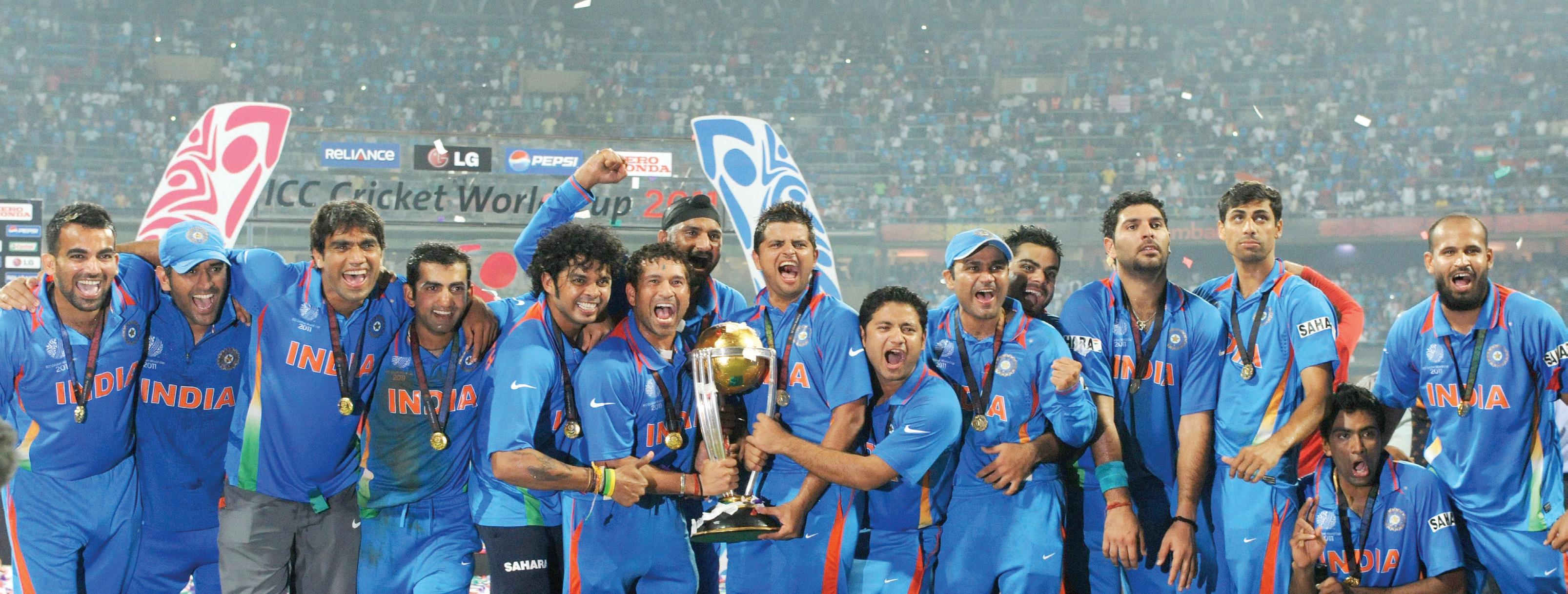
In the week leading up to the final, newspapers including the venerable Times of India were covering cricket in at least one third of their pages every match day and usually, with a front page lead story. The TV channels were unwatchable with all manners of “experts” trying to sensationalise the most trivial and banal of incidents relating to the CWC.
An extremely weak fielding and bowling unit has won the Cup, but it was led well and the vaunted batting performed when required.
Cricket has become an all-encompassing circus. It seems it is not merely a game anymore – India’s national identity is inextricably linked up with it. The media shamelessly exploits the sport; and sobriety, accuracy, fair play etc in reporting is often alien.
In a competitive media marketplace spanning over a hundred TV channels and about 20 daily newspapers, the concentration is on differentiation of product and capturing eyeballs. Making something out of nothing is a speciality. Being outrageous is a necessity.
Aussie bashing and in particular, Ponting bashing, was a blood sport. It was quite disgusting to see. There is a worrying element of extremism and intolerance not just within the media, but amongst younger fans.
Then, there was a daily demand in the media for a “Bharat Ratna” for Sachin
And one could not escape the hoardings and the ads – they were everywhere. Having said that, I must admit that some of the ads (particularly, the Nike ones – check out You Tube) really hit the spot.
There was an ongoing scandal about tickets for the public – or the lack thereof. As and when India hosts another World Cup, the International Cricket Council (ICC) will certainly have learnt its lesson and hopefully will not let the sale or allocation of tickets be handled by the Board of Control for Cricket in India (BCCI) or the states. Hardly any tickets were made available for the aam aadmi and they were being sold at ridiculous prices, in black - of course, for the crunch games. The powers that be had shamelessly cornered huge chunks of tickets, and only the elite and the dangerously desperate (who were prepared to face lathi charges by the Police) could lay their hands on these.
On the day of the Australia-India quarterfinal encounter, I flew to Ahmedabad from Mumbai in a plane full of cricket tourists out for the day. The moment we landed, there was a spontaneous and familiar roar within, “Indiiiaaaa, Indiiiaaa!”
I thought: India has become to cricket what Brazil is to soccer and what the USA is generally to the world: a superpower.
Not just film stars and business magnates but all manners of scoundrels and duffers have attached themselves to the game, apart from the genuine fans. A lot of these are involved in administering the game –unfortunately, at the highest levels.
There are about 15 politicians on the BCCI such as Sharad Pawar, Arun Jaitley, Narendra Modi, Rajiv Shukla, Jyotiraditya Scindia, Farooq Abdullah, Laloo Prasad Yadav, Anurag Thakur, Ranjib Biswal etc. etc. Most of them have never heard of corporate governance.
Mumbai was in lock-down mode for the Final. You couldn’t drive to within one kilometre of the stadium. The security was not just over-powering, it was oppressive and I was so tired of being “felt up” that I asked my last interlocutor whether they had any confidence in the job the six others before
him had already done.
Tickets for the final reportedly changed hands for a lakh rupees each. Whilst the crying need was to augment capacity in our stadiums to meet the demand, amazingly the capacity of the Wankhede Stadium which hosted the final, was reduced by 20%! Mind you, after Rs 300+ crore spent on its makeover, the stadium does look pretty flash!
The atmosphere was electric. I was the most anonymous person I knew in my enclosure (I was a guest of the ICC). Haroon Lorgat, James Sutherland, Clive Lloyd, Adam Gilchrist, Tim May, Inderjit Bindra, Ranbir Kapoor, Saif Ali Khan, Anil and Tina Ambani, were all there.
Gilchrist kept telling me that there was no way any team could chase down 275 in a World Cup final. I believed him and lost Rs 700. I should have known better than to trust the opinion of a man who had himself prominently featured in the previous three World Cup finals!
As a native of Mumbai for over 30 years, I have seen some pretty spirited celebrations like Ganapathi Visarjan, Diwali etc., but what happened in end March and early April, particularly after India’s victory over Pakistan in the semi-finals and over Sri Lanka in the final, was totally crazy.
Mumbai took collective leave of its senses. To say the celebrations were euphoric would be an understatement. To label them deranged is probably more accurate.
When I drove back home from the stadium, Marine Drive was full of thousands of revellers dancing, honking, waving the Indian flag and high fiving strangers. It was scary!
The next day, various State Governments announced ridiculous rewards for our already well-paid cricketers. Who gave them the mandate to recklessly splurge taxpayers’ money? Private companies promised them more cars, houses etc.
One of the most ungracious aftermaths of the World Cup was the decision in the ICC meeting 48 hours after the final that the “minnows” such as Ireland, Canada et al would not participate in the next two World Cups. After their plucky performances, the
least one could have hoped for was for some encouragement, but the BCCI chose not to play elder statesman and seems to have solidified its vote bank with Zimbabwe and Bangladesh (both badly administered “full” ICC members), who would have had the most to lose.
But what about the cricket itself, you ask?
An extremely weak fielding and bowling unit has won the Cup, but it was led well and the vaunted batting performed when required. However, a new Coach (if the BCCI have the sagacity, they should appoint either Tom Moody or Stephen Fleming) will have his work cut out, in not just improving the fielding (can there be any excuse except laziness and unprofessionalism when cellar dwellers like Bangladesh were, along with
Mumbai took collective leave of its senses. To say the celebrations were euphoric would be an understatement. To label them deranged is probably more accurate.
New Zealand, the best fielding outfit on show?) but also the bowling.
Harbhajan Singh persisted in bowling negative lines and seemed bent on containment - something that was sad to see. Zaheer was potent throughout and Yuvraj was our next best bowler.
When the Indian team tours Australia this coming summer, we are in for a humdinger of a series. The confidence of the Indians has never been higher and the Aussies have never had more self-doubt.
And best of all, anyone who wants to go will be able to buy tickets easily.
(Darshak Mehta is not a cricket tragic, he is a victim. This was his 8th World Cup)

34 <> APRIL (2) 2011 INDIAN LINK
Tendulkar.
SPORT
Lions and Stars steal the show
Community cricket was at its best during the ongoing Cumberland Ford’s Indian Link Radio Cup. It was a close race between most of the teams in the competition, as the team finishing at the bottom of the round robin league was able to beat the team which will appear in the finals of the prestigious Cumberland Ford’s Indian link Radio Cup.
The semi-finals between the top four teams came to a face-off to grab the coveted two spots in the penultimate final of the series, and stamp their authority as the best and the champions of the community cricket series 2010-2011.


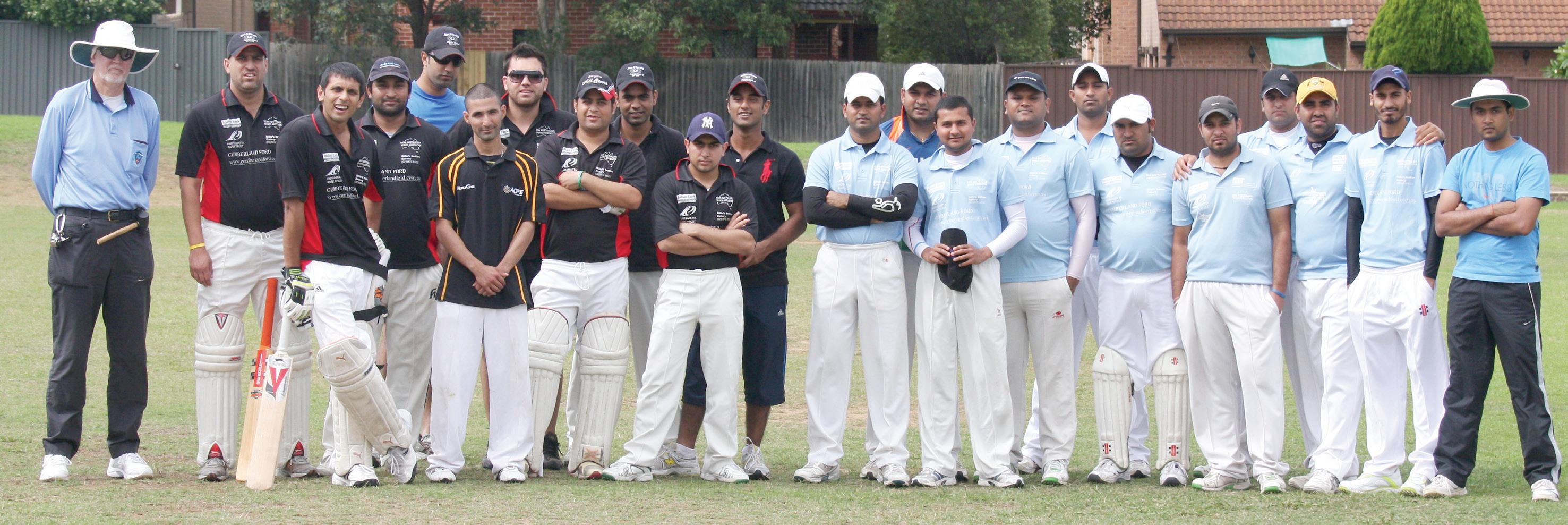

Favourites buckle under pressure
The four semi-finalists comprised of Afghani, Pakistani, and two Indian teams. In the first semi-final match, Vibrant Gujarat played against the NSW Afghanistan Lions. Minor champions Vibrant Gujarat who finished at the top during the league rounds couldn’t repeat the same feet when it mattered the most. The semi-finals against the NSW Afghanistan Lions.
The NSW Afghanistan Lions posted a score of 126/6 helped by solid knock of 35 runs by ex-Sydney grade player Puri who eventually got out on the bowling of Naren. In reply, the Minor Premiers Vibrant Gujarat, who was expected to win the game, buckled under the pressure of playing in the semi-finals. The Gujarat team could muster up only 107 all out, losing by 15 runs. The result was a big disappointment for the
team who had proved to be very strong in the competition. Puri was adjudged Man of the Match. The jubilant NSW Afghanistan Lions went into the finals. Mammoth score secures win The second semi-final match was played between Chandigarh and Pakistan All Stars United.
The Pakistan All Star United boys looked determined and channelled their national team in playing the semi-final game. They got off to a blistering start and posted a mammoth score of 199 for 4, helped by a memorable knock of 117 runs by Nasir Jalil, who plays grade cricket for Campbelltown.
The Chandigarh team already has a promising record with two of their players scoring a century in the ongoing 20/20 competition; however, young lad from Chandigarh Shenty, who has the highest individual score of 156 runs in the Tournament, began his innings with a massive six, but failed to keep up the momentum and was out for 11 runs caught off the bowling of Taseed. Raman kept up the onslaught, but once again he was out caught off the bowling of Nasir with his individual score of 44 runs. That was the beginning of the end for the Chandigarh team, who just buckled under pressure and were all out for a dismal 119 in just 16 overs. Taseed claimed 3 wickets for 17 runs for his All Stars team. Nasir Jalil was adjudged Man of the Match for his knock of 117 runs. Pakistan All Stars proved to be stars, and went into the finals.
The showdown (listen live on Indian Link Radio)
The final between NSW Afghanistan Lions and Pakistan All Stars United will be played at Old Kings Oval on May 1 at 10am will be broadcasted live on www.indianlink.com.au. Awards for distinguished performance during this season will also be given to the players on the day. The community is welcome to come along and show their solidarity towards their local star players: this final will prove to be an exciting one.
Umpire John Boyles who stood as official umpire was bidden farewell as he leaves for England. He will rejoin community cricket in its next season after returning to Australia. Mohammad Talha who has also been the official umpire for the second year in a row, has been appointed as the official umpire for the final game.

Team of the week
The Institute of Chartered Accountants of India (ICAI Challengers) has been chosen as the team of the week. Full credit goes to captain Madan Gopal and all the members for the team for showing great maturity and always abiding by the Tournament’s philosophy of ‘No Sledging’.
The winter competition will start on May 21. Interested teams please call Sanjiv on 0433 669 334 for more information.
NATIONAL EDITION www.indianlink.com.au
1 2 3 4
Sanjiv Dubey
1. Team members of Pakistan All Stars and Chandigarh team before the start of the semi-final game.
2. Team of the week ICAI Challengers.
3. NSW Afghanistan Lions being congratulated by Cars Vibrant Gujarat team members.
4. Umpire John Boyles being fairwelled
5
5. Vibrant Gujarat batsman Kogulan Ravi
Audit it!
Small business owners may find an IT audit to their advantage, in shoring up their business and making crucial positive changes
licensing might need some attention.
BY SUNIL RANADIVE
Audit. It’s a very painful word that conjures up images of the taxation department. If done correctly though, an audit of the technology in your small business should be quick and painless, and will yield some valuable information. Here are the top 7 reasons why your business would benefit from a technology audit.
1. Find immediate areas for improvement
If you’re thinking of replacing your computer, an audit may reveal that upgrading its memory would give you a significant performance boost. It could also highlight incorrect system settings or poor security configurations that could easily be fixed. With a clear picture of what technology you have, it might be easy to find some quick, inexpensive areas for improvement.
2. Budget for longerterm areas of improvement
An audit may reveal out-dated hardware that should be replaced with newer, faster components. It could also highlight disks that are close to their capacity, but still have some spare space. You can then plan and budget to address these areas in the future, instead of having to react tomorrow to an unforeseen full disk problem.
3. Know what software is on your computers
If your employees are able to install software onto your computers, do you know what they have been installing? An audit will reveal if your computers have illegal file sharing software or other programs that may be relevant to their hobbies, not their work (e.g. share trading).
4. Do you have the correct software licenses?
In some cases, it is a software manufacturer’s right to randomly audit your business and check that you have the correct license number and the right kind of license for their software. If you’ve taken on more staff since starting the business, or you’ve had employees installing software on your computers, an audit can reveal where your software


5. Compile an asset register

Your business will have certain assets listed for accounting purposes. That audit may not include many IT devices that are under a certain monetary value. If a theft or natural disaster hits your business, wouldn’t it be great to have a full list of all of your technology components? Ask your IT service provider to store a copy of your audit results off site, in case you need to refer to that asset list to make an insurance claim.
6. Disaster recovery and business continuity
IT Disaster Recovery Planning is a critical part of any organisation’s IT infrastructure to ensure business continuity in the face of a data loss and technology failure. But as organisations rely more and more on IT infrastructure to store data and to run operations, a Disaster Recovery Plan has become more than important than a part of IT infrastructure. In fact, it is a crucial piece of the business machine, required to reduce the business risk facing the organisation and to adhere to regulatory compliance. An IT audit is a good time to put to test your disaster recovery process.
7. IT Roadmap Planning
There is never a good excuse for IT management not having a formally documented IT Plan or Strategic Roadmap. We often find that organisations operating without an appropriate IT plan are unable to engage in sufficient levels of proactive management. Instead they take on a fire-fighting mentality which leads to increased levels of risk, operating inefficiencies and ultimately poor outcomes for the business. An audit will provide you with a good quality IT plan which will help find the right balance between the business’ usual activities and the planned projects that deliver enhancements to services and capabilities. It can also be used as a tool to unlock funding from the business that enables key IT initiatives that would otherwise remain underfunded and undeployable.
The outcomes of your audit should be a comprehensive list of your IT assets and recommendations for improvement that fit in with your business plans, both short and long term.
36 <> APRIL (2) 2011 INDIAN LINK
www.indianlink.com.au TECHGURU
An audit will provide you with a good quality IT plan which will help find the right balance between the business’ usual activities and the planned projects that deliver enhancements to services and capabilities.
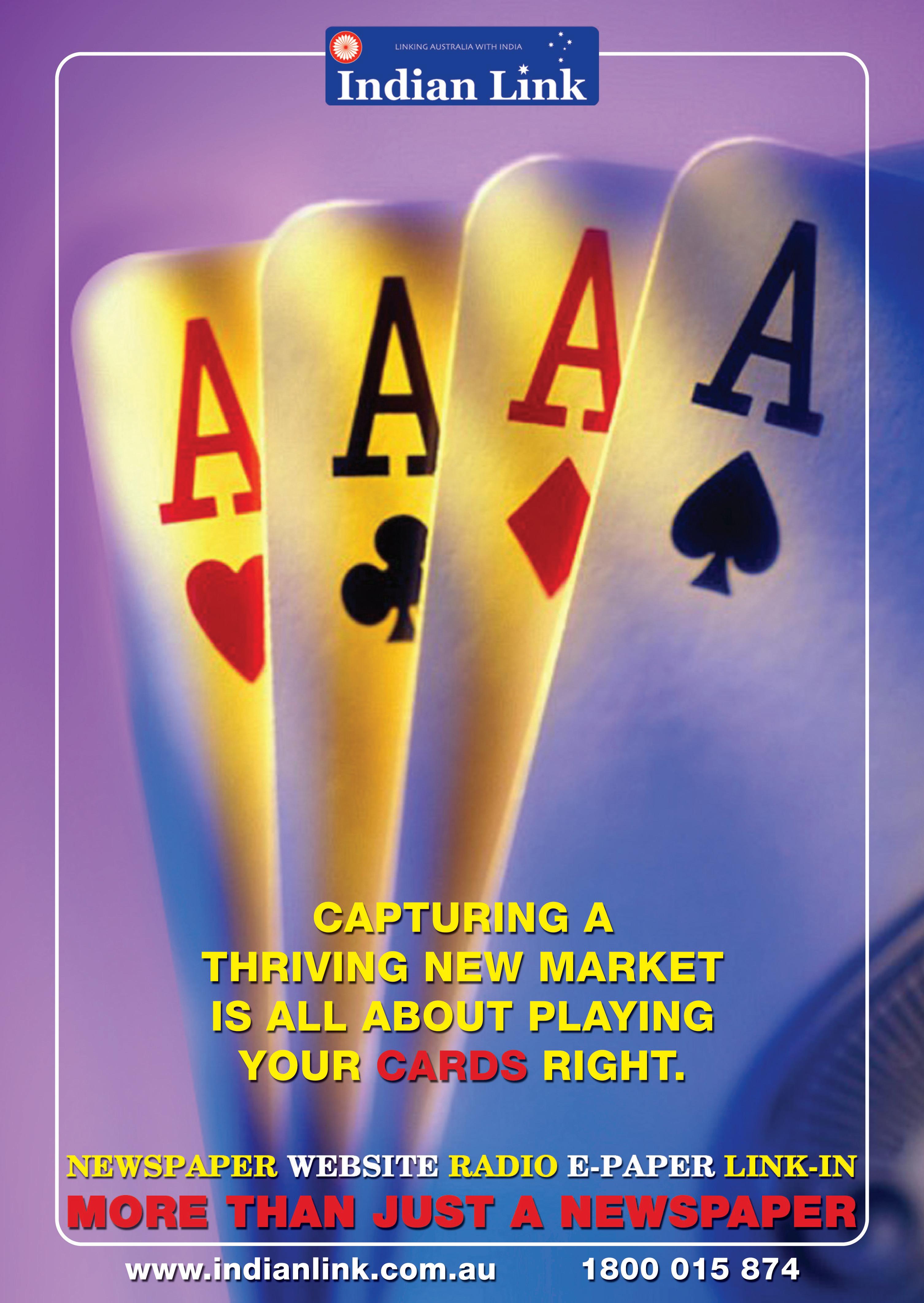
APRIL (2) 2011 <> 37 NATIONAL EDITION
In the final analysis


To take control of our lives and lead them according to how we think they should be led, we need to assess our self-worth
BY SAROJA SRINIVASAN
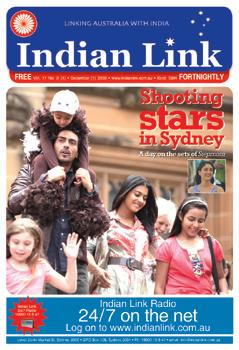



Every day we do some things that are important and meaningful, but also many things we would consider trivial and meaningless. How do we decide what is trivial? The meaninglessness of many actions is not necessarily static or fixed forever. Many actions that we consider trivial turn out to be the beginning of something far more influential than we could have ever imagined. Think of something that is very important in your life now, like where you are living or the career you are pursuing. When and where was the seed for this culmination planted? Perhaps it was in a trivial conversation somewhere in an unlikely place, or a word or statement made by a passerby. Who knows?
There are many things in life we discount as a mere coincidence. But when these things are looked at more closely, there is a pattern or regularity that the mind misses which only surfaces if we make a conscious effort to see it. It is the same with the
way we think. We are so used to thinking in a certain way, as society inadvertently conditions us to do, that we have allowed our own unique way to see the world to be completely overshadowed.
Yet, in the final analysis, it is our own self-worth and the way we see ourselves that gives meaning to what we do. We are so conditioned to how others see and evaluate us, that we are not even aware of what we would like our life to be.
often say, “What would others think?” as a reason to continue doing what they are doing, even though it is against their own wishes. These “others’ are rarely attending to your wellbeing or even if they do, they may not know the full circumstance of how your decision was made. In the final analysis what people remember after one has gone is how content and happy the person was, not just what they had achieved monetarily or materially.
Despite their materialistic preoccupation, most people secretly admire those who are fulfilled and content in their own way. There is a saying that gets repeated, though quite often somewhat inappropriately. People
It is self-doubt that creates this uncertainty about the present and future. What we need to do is to stop and reflect periodically on what we want to do with our life. Of course, this requires time and a strong will to accept what we have and what we can do with what is given to us. Quite often this time for reflection appears after moments of misfortune, or when our expectations are thwarted. Sadly, it also tends to be brief and if one does not grab the momentary opportunity that this brief reflection presents and pursue it to bring about the change we would like, life will go on in a monotonous, predictable fashion within the confines of one’s own comfort zone. Yes, it will be comfortable but alas, the sense of meaninglessness will continue.
38 <> APRIL (2) 2011 INDIAN LINK
www.indianlink.com.au PSYCHE
One paper five editions SYDNEY CANBERRA MELBOURNE PERTH ADELAIDE BRISBANE GOLDCOAST For details call Indian Link 1800 015 847
In the final analysis what people remember after one has gone is how content and happy the person was, not just what they had achieved monetarily or materially.
Magnet magic
I heard of magnetic healing or magnotherapy only a few years ago when it was all the rage. Television ads for products containing magnets declared they exert dramatic healing effects on the human body. Manufacturers of pillows and mattress protectors with imbedded magnets swore they had hit gold with the cure for back and neck pain. Bracelets, straps for ankles, wrists and knees, magnetite rings, supplements, creams and even magnetized water crept up on market shelves with claims of empowering the wearer with energy and vitality. Magnetic insoles became a big hit with sufferers of podiatric ailments.
Nowadays, magnets are being used as cure for arthritis, asthma, migraines, osteoporosis, sports injuries, shoulder and back pain, infections, fibromyalgia, depression, insomnia and much more. Even though magnetic therapy lacks established evidence of healing, millions worldwide believe they really work to reduce pain, improve blood circulation, minimize stiffness and enhance performance.

HOW MAGNETS WORK TO HEAL
It is believed that magnets eliminate the root cause of pain, and not just the symptoms. There are many theories to explain how magnets work to heal. Some insist that our blood consists of iron which responds to magnets like any other ironbased material. A magnetic field is created when the iron and nutrient-rich heavy blood cells move slowly, and the used blood returning to be replenished moves
There are many benefits of using magnetic therapy as there are no known side effects and it is very affordable, as you only need to buy the magnets once and not keep restocking like other medicines.
faster through the body. This friction also gives us heat in the form of body temperature. To alleviate pain and swelling, it is important to get the iron-rich blood to the proper location. This is where the magnets come in. A magnet placed on the ailing body part would attract iron-rich blood to that location. Magnets penetrate the
flesh to create a magnetic field that energizes the blood on the whole and the white corpuscles that are the healing agents of the body, in particular. The charged ions in the blood move about to produce heat and increase blood circulation to ease pain and allow the body to heal naturally.
Another popular elucidation for the magnetic mystery asserts that magnets don’t actually heal, in fact since any illness or injury is due to the imbalance of energy, the magnets act to correct the magnetic energy field and put the body back in alignment to aid natural healing.
It is important to place the magnet directly over the area where the pain is located for it to be effective. Professional magnetic therapists employ only the negative pole of the magnet to
on a specific part of the body will not facilitate healing of the entire body but only on and around the part it is being focussed on. That is why it might be a good
On the other side of the scale however, are sceptics who argue that magnotherapy is a pseudoscience at best which means it does not adhere to any scientific method, lacks evidence of support and cannot be reliably tested
idea to try out magnetic underlays, blankets or bed pads which have several magnets sewn in and hence radiate a wider and stronger magnetic field that can target every part of the body and boost the immune system as you sleep.
WHAT THE SCEPTICS SAY
relieve pain, as it exerts a stronger magnetic field. Also the direction in which you place the magnetic poles plays a vital role in healing and relieving pain. The north pole of the magnet is used to ease symptoms of arthritis, acute headaches, lower back pain and inflammation whereas the south pole is used to target symptoms of paralysis, weak muscles, numbness and scarring. Different size and strength of the magnets are used to treat different ailments and the length of exposure is also closely monitored. Magnets with 1000-3000 gauss power is used to treat diseases like rheumatism, paralysis and back pain, while 500 gauss power magnets are ideal for treating children and to tackle ailments affecting delicate areas like ears and eyes.

It is important to know that a magnet placed or worn

On the other end of the spectrum however, are sceptics who argue that magnotherapy is a pseudoscience at best, which means it does not adhere to any scientific method, lacks evidence of support and cannot be reliably tested. Numerous tests worldwide have produced mixed results with the general consensus being that the benefits of magnets are psychological.
There are many benefits of using magnetic therapy as there are no known side effects and it is very affordable, as you only need to buy the magnets once and not keep restocking like other medicines. There is simplicity of use and since it is non-invasive, safe and non-addictive, it is becoming the alternative therapy of choice for many.
If you wish to give magnotherapy a shot, it is strongly urged that you do your research before embarking on it, as magnets are not meant to be used in certain conditions like pregnancy or with certain devices like pacemakers, automatic internal defibrillators etc. So consult with your doctor before experimenting.
APRIL (2) 2011 <> 39 NATIONAL EDITION For expert coaching in Lowest Fee Guaranteed IELTS ENGLISH GURU Suite -1, 71 A Macquarie St, Parramatta, Phone 0411 520 546, 9687 9741 www.englishguru.com.au • Power Packed Sessions. • One and Two Weeks Crash Courses Available. • Money completely refundable, if not satisfied with the first tuition session.
Although its exact healing properties are still being debated, magnotherapy is becoming increasingly popular as an alternate therapy, notes FARZANA SHAKIR
WELLNESS
www.indianlink.com.au

40 <> APRIL (2) 2011 INDIAN LINK
Yes, Prime Ministers!
BY GEORGE THAKUR
During my years in the hospitality industry in India, I was fortunate to meet various political heads and experience some interesting events and encounters. Here are a few anecdotes for
Haanji, Chachaji

In the late ninety-fifties, I was invited to the inauguration of the Lalit Kala Akademi, India’s national academy of arts, in New Delhi. Prime Minister Jawaharlal Nehru was the Chief Guest. When Chachaji, as he was fondly called, arrived in his sluggish Ambassador, everyone milled around, and wished him ‘Namaskar’ with hands folded. Fresh from university, I was the youngest and the only one who dared to break the unwritten protocol by actually engaging him in conversation. “Chachaji,” I asked, “What do you think of the name ‘Lalit Kala Akademi’?”


Chachaji placed an arm around my shoulders and ushered me inside. “Arre yaar, naam men kya rakkha hai,” was his jocund rejoinder. “A name is a name, is a name!” When departing, Chachaji reciprocated by bidding farewell to all with folded hands. However, when he came to me, he held out his hand and shook mine heartily. “Keep up the good work,” was his encouraging advice to me.
Words of wisdom from Mataji
As the Manager of VIP Catering at New Delhi’s Vigyan Bhawan (India’s premier conference centre) in the early ninety-seventies, I would come across Prime Minister Indira Gandhi practically every other day. As we grew acquainted, I began to ask if she had a speciality dish in mind to try on that particular day. Despite all the cooks who worked under me, I would still sample the dish that Mataji, as she was known, was to eat. Pandit Mohan Lal, Mataji’s personal bodyguard and her father’s before her, would carry two flasks: one coloured orange which would contain orange juice, and the other, white, for water. On some occasions, while Panditji would ensure the PM’s security and watch every spot and everyone in the dining hall, Mataji would attract my attention and would point one finger if she wanted water or two if she wanted orange juice, and I would intimate her demand to Panditji. Mataji would

always be short of time, but one day when she appeared relaxed, I naïvely asked her why didn’t India invest in heavy earth-moving machinery that would do the job in half the time. Well before I had actually finished speaking she retorted, “George! You fail to realize that heavy machinery will also leave half the workers jobless!”
Lunch with black tea and Urdu poetry
President Fakhruddin Ali Ahmed would also visit Vigyan Bhawan regularly. He was frail and walked supported with a stick. On seeing him, I would gently hold him by the elbow and escort him from the large lounge room to an equally large dining room, where he would sit on an emperor-sized leather chair, his favourite. I would then place a coffee table in front of him, which would suffice as his dining table, and inquire if “Fakhruddin Sahib” wanted his usual lunch of poached chicken breast with steamed vegetables, washed down with a glass of warm water or occasionally, black, sugarless tea. The President would then ask me to stay on and discuss Urdu poets and poetry. While my heart and mind were with the foreign guests of United Nations pedigree, I was obliged not to displease the President of India, so I would perch on the carpet and we would converse across the coffee table. While Sahir Ludhyanivi’s romanticism was his favourite, the President adored Iqbal who wrote: Saare jahan se achcha, Hindustan hamaara. Hum bulbulen hain uski, woh gulistan hamaara, etc. The President was disheartened that Iqbal had chosen Pakistan over India. In Sahir’s work, his favourite was,
Mujh se pehli si mohabbat, mere mahboob, na maang Occasionally, Mataji would walk in and ask me to give her two minutes with the President. Once she had finished her discussion, she would ask me to resume discussing Urdu poets and poetry with the President. I always wondered how she knew what I was discussing with the President.
I was employed with the Ranjit Hotel as we had opened Santoor, the first Kashmiri cuisine restaurant in New Delhi. The National Emergency had been promulgated, and I visited Vigyan Bhawan to assist with a luncheon. The President entered the hall, he saw me and smiled, and as I escorted him to his usual chair, he asked how my wife Rose and our first-born Steve were doing. He also asked what I thought of ‘NE’. However, our conversation from that point on will remain confidential!
A memorable short break
Once, as we served coffee and biscuits to Prime Minister Pierre Trudeau of Canada during a break in his meeting with Indian experts, he asked me to join him as he wanted company. Of course, I was proud and happy to comply. The Prime Minister spoke little, but as he returned to the meeting, he asked for my name, shook my hand and told me to let him know as and when I intended travel to Canada.
Food fest in Prague
When in Prague, Czechoslovakia (now the Czech Republic), the Indian Ambassador Raja Surinder Singh of Alirajpur summoned me to his office one day, with the news that
Prime Minister Morarji Desai, accompanied by Foreign Minister Atal Bihari Vajpayee, was visiting Prague. His worry was that the PM’s cook had contracted chicken pox and had to be flown back to India. There was no-one to prepare special meals for the PM, who was on a special diet: non-grain meals, juice of carrots grown in north India during winter, Indian sweets made from cottage cheese, dried fruit and water. As I wondered where I fitted in the equation, the Ambassador handed me a menu card of the PM’s diet and asked if I could spare one of my two chefs for four nights to cook for the PM. I explained that as we worked for the Czech government and neither of my cooks knew how to prepare Indian sweets, I would take on the job. As Manager of the Indian government’s first Indian food restaurant abroad, I had been trained in preparing delicacies in cottage cheese


which would suit the PM. I drove to Germany to buy cottage cheese, ginger, garlic, coriander and spices and stayed at the Ambassador’s bungalow for four nights. During that time I prepared rasgullas, ras malai, chum-chum, burfi and gulab jamuns, etc. Seekh kababs, sahmi kababs ajmeri, murgh musallam, Tehran biryani, Mughlai parathas, and shahi tukra, etc., were served, and I also ate with them. A memorable piece of general advice was imparted to me by PM Desai in the course of a general conversation, and I quote: “The row of degrees after your name does not necessarily grant you membership into the club of the genteel.” How truthfully beautiful!
Each person wearing the Prime Ministerial hat does their best for the people and the country, but their personal beliefs can truly overwhelm those they come in contact with over the course of their normal day.
APRIL (2) 2011 <> 41 NATIONAL EDITION www.indianlink.com.au FIRSTPERSON
While my heart and mind was with foreign guests of United Nations pedigree, I was obliged not to displease the President of India, so I would perch on the carpet and we would converse across the coffee table.
It is rare for a person to have a wide range of experiences with people in the highest echelons of politics, and has something to recount about each of them
Photos: bharatmatamandir.in
Handbag helpmates
BY MINNAL KHONA
Every woman’s handbag is a treasure trove of deeply personal stuff. But to be prepared at any time to meet the man of your dreams, land that dream job, or just look your best at short notice, there are a few things a woman should never do without. And carrying small, pocket-sized versions of these accessories or cosmetics will come to your rescue not just any time, but all the time.
While most of us do carry the odd lipstick in our bags, it is better to get organized and have a small pouch to accommodate several little things so you can find them easily inside your bag.
Here’s what you need, but not necessarily in order of importance.
Lip Balm
Be it Sydney’s harsh winters or just a long hot day, a lip balm is a must-have in a bag as the weather and sometimes our diet, could make our lips go dry and chapped. How often does one remember to refresh one’s lipstick after a meal? Nine out of ten times we do, right? So why forget to moisturize this very important feature? A good lip balm with the right ingredients can keep your lips looking good even if you don’t have lipstick on. Choose a fruit flavoured one, a coloured one that doubles up as a gloss or even one that has sunblock in it. Just never go without one.
Moisturiser
Yes, you would mostly moisturize your face before leaving in the morning, but it always helps to carry some along. Especially if you have a party to go to after work. A wash with a gentle cleanser and a dab of moisturiser before refreshing your makeup will make your skin look fresh. What’s more, it keeps the skin from going dry which prevents early signs of ageing like crow’s feet and wrinkles.
Foundation
A foundation works as a good barrier against dust and pollution. What’s more, various brands come in really handy-sized packs these days. Some even have moisturising abilities. Or simply opt for the compact kind, which doubles up as a concealer, foundation and powder all in one. I personally prefer this kind as it saves you carrying a few extra cosmetics. Just one thing – always choose a shade closest to your skin tone and not one that is a few shades lighter in the hope that it will make you look fairer. It won’t, and if you are a part of a photo shoot, the results would be disastrous.
Soap free cleanser
Sitting in air conditioned offices or wearing makeup to work and after can impact the skin due to all the chemicals used, in addition to the drying effects of the AC. So always carry a soap free cleanser to wash your face. This is important especially on days when you are planning to go out
after work or have a job where your makeup needs to be refreshed often. A gentle hand sanitizer to keep away the germs, used before you eat is also important to carry along.
A clean comb
Having a neat and well-groomed appearance at all times can even help score over good looks at times. And if you don’t tie up your hair while at work or college, carry a comb or brush in your bag. You can comb your hair more frequently, say when you visit the washroom, and keep knots at bay. Also, frequent combing keeps the blood circulation in the scalp going, thereby providing nutrients to the scalp that will help hair to stay healthy.
Deodorant
Again, a must have for anyone who cares about their personal hygiene. Body odour can put off the most ardent of suitors and leaves you feeling very icky too. So always carry a good, effective deodorant or anti-perspirant. Roll it on sweaty parts or spray it on before stepping out and you will always smell fresh. A word of caution: avoid the ones with very strong fragrances – the muted, fresh smelling ones are the best.
Lipstick
Like I mentioned earlier, most of us do carry one in our bags. It is best to carry a neutral shade of brown or nude that would go with most outfits in case you have forgotten to carry one that matches your outfit. A lip gloss to add that extra sheen is also necessary to complete your make up.


Mascara
Most women wouldn’t think of carrying this cosmetic, but if you are going out or just want your eyes to look fresh after a long day in front of the computer, carry a tiny version of the regular brand you use. Mascara automatically widens the eyes and gives them a fresh look.
Eye liner
An eye pencil would do just as well and is probably less messier than the liquid liners. Even if you haven’t applied any and have to suddenly look your best, a few quick strokes and you’re looking good.
Sunscreen
The thing with sunscreens is that they need to be refreshed every few hours. If your lifestyle or job is one where you are in and out of the office or home often during the day, it makes sense to carry a tube of sunscreen. Just remember to apply it 20 minutes before stepping out for best results. You can’t afford to not carry this important cosmetic. If you feel you’re carrying one too many cosmetics in your bag, pick a brand that is a sunscreen that moisturizes, or a moisturiser which has an SPF of 15 or 30.
Other important things that should go in the little pouch could be a hair clip, sanitary towel, some wet wipes and a little mirror. Make these items a must have in your bag, and you will never look anything but your best.
42 <> APRIL (2) 2011 INDIAN LINK
www.indianlink.com.au BEAUTY
There are some essential beauty aids that you just can’t do without, which will always keep you prepared for looking good
“Required for immediate appointment –A HANDS ON CHEMICAL WATER TREATMENT MANAGER”

It would ideally suit a candidate with some experience of business development. Ownership, servicing and management of contracted water treatment business in a previous incarnation will be highly regarded. We need the incumbent to have at least some basic knowledge of water chemistry, industrial customers with water reticulating systems and be willing to learn on the job. Our customer’s package includes some mechanical services which call for automated systems of chemical dosing and control.

A flexible work environment and an appropriate salary/commission structure will be made available to the right applicant. Where appropriate, classroom/ field training/back up product support will be provided. Running the business like “your own” is desirable, after fast tracking into the role.
Please e-mail your resume to frodrig@nch.com

www.chemsearch.net.au
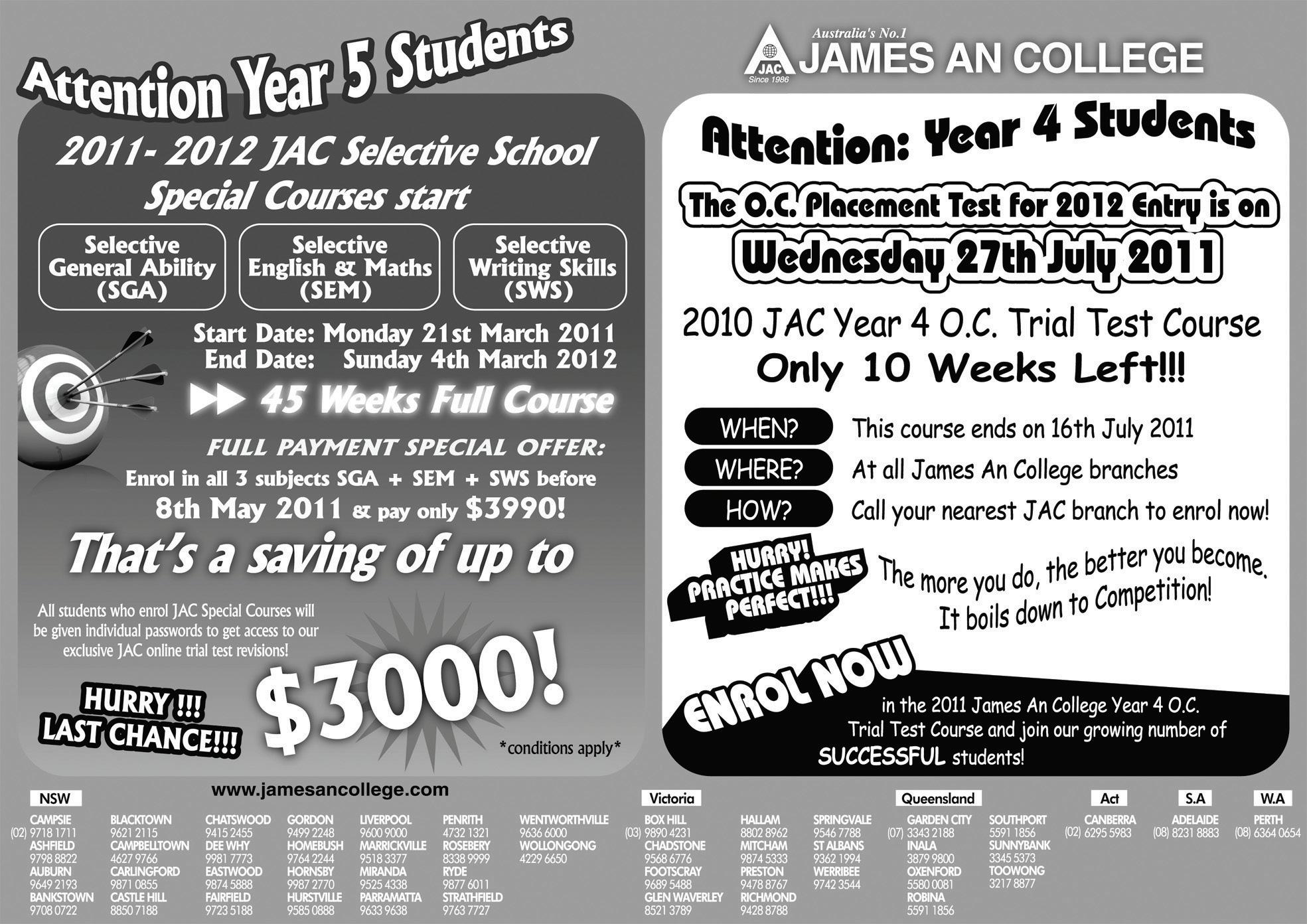
APRIL (2) 2011 <> 43 NATIONAL EDITION
water Wonder
The majestic beauty of the Victoria Falls in Zimbabwe bring to mind nature’s vivid and awesome presence
BY SANDIP HOR

As a nation Zimbabwe may have lost its credibility in the world, but the spectacular Victoria Falls, the jewel in it’s crown, has not lost the slightest of its glory to connoisseurs of natural wonders. Located in southern Africa between Zimbabwe and Zambia, the majestic fall of water from the Zambezi River lay hidden from the world till discovered by Scottish explorer David Livingstone in the 1860s. Mesmerised he said, “No one can imagine the beauty of the view from anything witnessed in England. It had never been seen before by European eyes; but scenes so lovely must have been gazed upon by angels in their flight.”

Livingstone named the falls ‘Victoria’, honoring the Queen, but the locals call it Mosi-oa-Tunya, meaning “smoke that thunders”, because when the huge volumes of water plunge over its rocky edge with intense vigor, it hits the bottom and springs up into the air as a huge cloud of watery mist, actually rising high enough to be seen from kilometers away.
I had earlier seen several images of the Victoria Falls, but nothing could have prepared me for that awesome first glimpse of the real thing, which instantly made me realize why it is listed as one of the Seven Natural Wonders of the World.
A five-year old boy standing next me remarked, “Wow daddy, that’s lots of water!” Yes, you simply see incredible amounts of water falling ceaselessly as far as your eyes can go, and you can hear roaring thunder, like when forceful storm is coming.
The sight of the Niagara Falls in Canada flashed through my mind. Viewing that spectacular natural monument, an African visitor told me that beauty of Victoria Falls is much superior to its North American counterpart. I pocketed that as a loose comment of nepotism, but standing before Victoria Falls, I realized what he meant.
Physically, Victoria Falls is different to Niagara; it is much longer and higher. But the striking distinction is the setting. Victoria Falls is extraordinarily preserved in its natural state surrounded by expansive rainforest, unlike the Niagara where you turn back and see McDonalds and Pizza Hut.
Here we were totally wrapped by nature, even when hopping from one viewing point to the other to get different sights of 1700 meters wide and 110 meters deep waterfall, making it the largest sheet of falling water in the world.
WWe were also totally soaked to the skin. Being there during the rainy season meant that high volumes of rising watery mist created a state of high winds and intermittent bucketing rain, at times so heavy, that a waterproof and umbrella becomes useless. And taking a snap becomes challenging, unless your camera is waterproof.
However it was fun to play hide and seek with nature, snatching opportunities to capture views of the falls whenever the sun intermittently broke through the hazy envelope created by cloud, mist and rain. One of the unique aspects of this natural grandeur is the flashing of consistent rainbows that kept appearing as a result of the play between the sun and the rain.
Geographically two thirds of the Falls lie in Zambia, including the small island from where Livingstone first sighted it. However, the main viewing areas sit on the Zimbabwean side with a kilometer long pathway leading along the edge of the Falls. There is a 200 metre long steel bridge across the Zambezi which connects the two countries. From the Zambian end of the bridge, where you can easily go by obtaining a gate pass from the Zimbabwe border checkpost, we glimpsed part of the Falls on the Zambian side, as spectacular as on the other side.
An excellent but expensive option of viewing the entire span of the Falls covering both countries is by helicopter. A fifteen-minute flight costing around US$120 per person, will give you the best scenic view of Victoria Falls.
Aside from the spectacle of seeing the largest curtain of falling water on earth, other activities that entice tourists are bunjee jumping from the bridge, white water rafting and cruising the Zambezi, where if luck favors, you may see hippos and crocodiles.


A great charm of the sojourn is the stay at the Victoria Falls Hotel, affectionately called the ‘Grand Dame’ of Victoria Falls. For over a century visiting members of royal families, international statesmen, and celebrities have chosen to stay at this elegant landmark hotel, and so did I without any hesitation. The architecture reflects Edwardian style at its height with numerous corridors, archways, and columns, and extensive wood panelling.
The terrace, which offers fabulous views of the bridge and the rising mist, is a perfect place for morning coffee and fresh pastries, a casual lunch, afternoon high tea or a drink in the evening. For a more traditional colonial experience, guests are invited to don appropriate evening wear and enjoy a special dinner with dancing in the gracious Livingstone room. Stanley’s refectory room and the Bulawayo Room make discreetly luxurious and cosy after-dinner retreats.
The small and shabby Victoria Falls town doesn’t have much to offer other than its hotels and a local market where you can buy some nice handicraft items. Its airport is worn out and reflects the economic state of the nation. Luggage is dropped on the floor, instead of on carousels. Taxis are easily available, but appear to be from the time of Livingstone. The moment you step outside the hotel, you will be surrounded by locals, either trying to sell you something or touting their services to show you around. Some, wearing a sort of a uniform, identify themselves as tourist police and come in for a rescue, but their motive is no different. However they are all harmless; all of their doings are driven by poverty. From earlier visitors I knew they accept with gratitude used clothes, so I carried some and when handing these over, the smile on their faces were no less divine than the Falls.
44 <> APRIL (2) 2011 INDIAN LINK
TRAVEL
One of the unique aspects of this natural grandeur is the flashing of consistent rainbows that kept appearing as a result of the play between the sun and the rain.
1 3 2
Travel notebook
ZIMBABWE
GETTING THERE
South African Airways (www.flysaa.com) have flights from Sydney (code-shared with Qantas) and Perth to Victoria Falls, via Johannesburg. There are flights from Johannesburg to Mumbai, so a feasible option to tour Victoria Falls can be en-route to India.



ACCOMMODATION
There are a few top-end places to stay, however Victoria Falls Hotel (www.africansunhotels.com/ victoriafall) is the most popular. While there do not miss having dinner at their Jungle Junction Restaurant, where entertainment by locals epitomise spirit of Africa.


TOUR OPERATOR
Contact Sydney-based Wildlife Safari Consultants (Tel: 0418443494) for all your travel arrangements in Victoria Falls
VISA
All Australian passport holders require a visa to enter Zimbabwe, which is available upon arrival


CURRENCY AND EXCHANGE RATE
It’s perhaps the only country where the US Dollar acts as the official currency; the earlier Zimbabwe Dollar is of no value, other than as a souvenir.
APRIL (2) 2011 <> 45 NATIONAL EDITION
www.indianlink.com.au
1. Welcome Victoria Falls
2. Bungee jumping into Zambezi
3. The Majestic Falls
4. Bridge view from the hotel
5. Local market
6. Victoria Falls Airport
7. Big African smile
8. Statue of David Livingstone
6 7 8
5
4
Kids in the Kitchen
 BY SHERYL DIXIT
BY SHERYL DIXIT

Its school holiday time again, and as a parent, I’m racking my brain trying to figure out how to keep my two energetic boys occupied through the day. After exhausting the options of playdates, bowling, forays to the swimming pool, soccer practice – I have to admit that there’s not much on the agenda. But because the boys seem as perpetually hungry as bored, I thought getting them acquainted with the world of food would help introduce them to different ingredients, the process of cooking, as well as help them exercise a bit of culinary creativity. We have had no more than a couple of disasters, which we have valiantly consumed…well, they have been edible, but just!
The recipes I have chosen have processes in which children can actively participate, specially if they are older. For the younger ones, the carrying, washing, stirring and occasionally mixing are best. Use a chopper to dice vegetables fine, supervising them as they Beware of messes, because you’ll have them for sure, but it’s a lot of fun. Besides, cleaning up will induct them into the joys of housework!
Chicken Rolls
Made with a filling in puff pastry, these are delicious as a snack or main meal and can’t go very wrong, even if you try.
250 gms chicken mince
1 medium onion
½ tsp chopped garlic
½ tsp chopped ginger
Pinch of powdered pepper
150 gms feta cheese, coarsely crumbled
1 cup finely grated zucchini, carrot
Fresh lemon juice to taste
2 sheets puff pastry
Toasted sesame seeds (optional)
Salt to taste
2 tbsp milk
Blend the ginger, garlic, onion into a fine paste and place in a large bowl. Next, add the chicken mince, grated zucchini, feta cheese, pepper and lemon juice and mix well. Place a sheet of puff pastry flat and cut horizontally into two. At one end, place the chicken mixture an inch wide along the length of the pastry from end to end. Roll over the pastry so that the mixture is completely covered and seal the end, brushing with a little milk. Cut length-wise into four portions. Repeat with the rest of the pastry until the mixture is finished. Place the portions on a baking tray and brush the tops with milk. Sprinkle sesame seeds on top of each role. Bake in a fan forced oven on 170degrees for 40 minutes or until the pastry turns brown and fluffy. Serve hot with tomato sauce.
Chinese Fried Rice
Cheerful, easy and great for kids to prepare, with a little help on the stovetop from mum. Indulge them with addons of ham, bacon or different vegetables to the mix, but put your foot down to jam!
400 gms cooked rice
100 gms cleaned prawns
100 gms boneless chicken, cut into strips
25gms green peas
25gms diced button mushrooms
25 gms diced cabbage
25 gms diced baby corn
25 gms diced carrot
50 gms spring onion, cut into fine rigns
2 eggs, beaten
3 tbsp cooking oil
2 tbsp soy sauce
Salt and pepper to taste
Get the children to bring you the carrots, cabbage, baby corn, green peas and spring onion. Use a chopper to finely chop the carrots, cabbage and babycorn. Heat the oil in a pan, add prawns and chicken and stir-fry for 2 minutes, until they are fully cooked. Add the eggs beaten by the kids, next the diced vegetables and peas. Keep stirring for a minute, next add the cooked rice, salt, pepper, soy sauce and half the spring onions. Add salt to taste. Mix well, stirring for a few minutes. When all the ingredients are thoroughly cooked and mixed, add the rest of the spring onion. Cook for three minutes more, then remove from heat and serve hot.
Pumpkin Soup
It’s easy, delicious and filling. The kids can help with choosing the pumpkin, peeling potatoes, blending and tasting.
700 gms yellow pumpkin cubed
1 large potato
1 carrot, cubed
1 onion, cubed
300 mls vegetable or chicken stock
200 mls water
3 tbsp olive oil
1 bunch marjoram leaves, chopped finely
50 gms fresh cream
Salt and pepper to taste
Saute the vegetable with oil in a large pot for about 5 minutes. Add stock and water and cook on low flame for half an hour. Leave to cool, and then blend the mixture in a food processor to a smooth consistency. Reheat, adding cream, marjoram leaves, and season with salt and pepper. Try not to let the mix boil or the cream may split. Serve hot with bruschetta.
Fish fritters
A tasty treat and will give the kids a chance to get elbowdeep in a fishy mix!
500gms any firm fish fillet
400gms boiled potatoes
150 gms flour
1 tbsp butter or margerine
1 onion, finely chopped
1 bunch parsley, finely chopped
Salt and pepper to taste
Grated nutmeg to taste
2 eggs
Oil for frying
Break the fish into smaller pieces and keep aside. Mash the potatoes and mix with the fish, flour, onion, parsley, butter, pepper and nutmeg. Gradually stir in the eggs to the mix. Shape the mix into small balls. Now mum steps in and heats oil in a pan. Deep fry until golden brown. Remove from oil, drain well and serve hot with sweet and sour sauce.
Banana bread
This could be a special treat, particularly as the price of bananas is currently skyrocketing. But the kids will love it anyway!
100 gms walnuts
150 gms plain flour
75 gms self-raising flour
1 cup brown sugar
1 tsp ground cinnamon
125g butter, melted and cooled
2 eggs
3 ripe bananas, mashed
Grind half the walnuts to a fine powder and mix with the flours, sugar and cinnamon in a large bowl. Whisk the butter and eggs together and gradually add to the bowl, mixing thoroughly. Stir in mashed banana and rest of the walnuts, roughly broken into smaller pieces. Grease and line the base and side of a loaf pan, and pour in the mixture. Place in a preheated oven of 180°C and bake for 40-45 minutes. Insert a skewer into the middle of the mix and if it comes out clean, the cake is ready. Place onto a wire rack until warm, slice and serve, liberally spread with butter. Yummmmy!
46 <> APRIL (2) 2011 INDIAN LINK
www.indianlink.com.au FOOD
A few simple recipes will give your kids a feel of the kitchen and find them something interesting to do



Shades of yellow
Banana, cadmium yellow, chartreuse, chiffon, cream, golden, goldenrod, khaki, lemon, mellow yellow, saffron, topaz, ochre
Did you know… In ancient India, painters made the colour yellow by using the urine of cows who had been fed nothing but mango leaves.

What yellow stands for


Yellow is a ‘warm’ colour and represents sunshine. It stands for cheerfulness, vibrancy, youthfulness, freshness, and also friendship.


In India, they wear yellow to celebrate spring, and one of its shades (saffron) is the colour of spirituality.




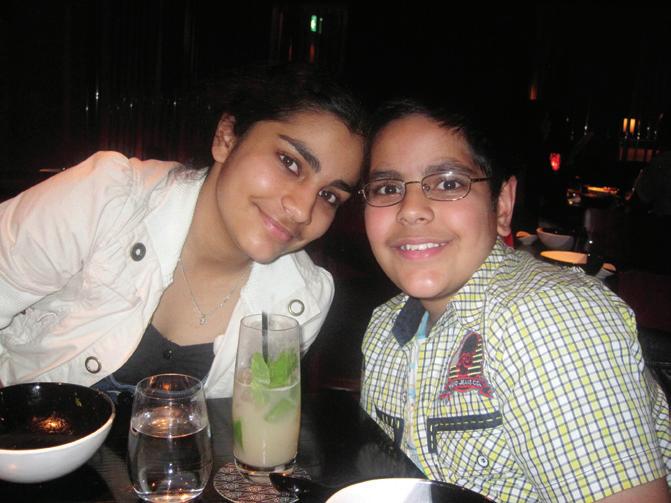

But yellow also has negative symbolism, as it stands for cowardice and deceit.




After the World Wars, women in the western world waited for men to return from war by tying yellow ribbons for hope. Even today, yellow can say ‘welcome home’. Because of its brightness, yellow can also mean ‘danger’ or ‘caution’, as in yellow traffic lights, or a yellow card in football.
Famous yellow things
Famous yellow house: Artist Vincent van Gogh’s house in many of his paintings
Famous yellow cartoon characters: Sponge Bob Squarepants, Tweety Bird, Pokemon, Bart Simpson
Famous yellow river: China’s Hwang Ho, so named because of the ochre-coloured sediments in its water
Famous yellow car: New York taxis; Mr. Bean’s car (a British Leyland Mini 1000 which has padlocks and can be driven from the roof); Alice Cullen’s Porsche in the Twilight series ML
The Simpsons
The Colour Yellow
Bart and his family in The Simpsons are all yellow, but there was actually a whole episode called The Colour Yellow. In it, the Simpsons kids find out they have some black ancestry. They are 1/64th black, and while Lisa believes this explains her love of jazz, Bart believes this explains why he is so cool.

Hello yellow!
Match these yellow things to their definitions
E. Type of fish
F. Type of bird
G. Type of fungus
H. Leader in a stage race such as Tour de France
I. The supposed danger to Western populations as the number of Asian migrants increase
J. Cowardly
K. A viral disease transmitted by mosquito
L. Members of a protest movement against the Thailand government
48 <> APRIL (2) 2011 INDIAN LINK
DL
YELLOW
ML
DL
Answers: 1. C 2. A 3. B 4. I 5. D 6. J 7. K 8. L 9. E 10. F 11. H 12. G
Yellow card
Yellow
Yellow
Yellow
Yellow
Yellow
1.
2.
flag / Yellow jack 3. Yellow cake 4. Yellow peril 5. Yellow journalism 6. Yellow-bellied 7.
fever 8.
Shirts 9.
tail 10.
hammer 11. Yellow jersey 12. Yellow foot
A. A flag on a ship that indicates it is all safe in terms of quarantine
B. Uranium oxide, used in nuclear reactors
C. An on-field warning for a sportsperson
D. Sensational reporting
DL PEARL OF WISDOM: Yellow wakes me up in the morning Yellow gets me on the bike every day Yellow makes me suffer Yellow is the reason I am here Lance Armstrong, cycling champion PEARL OF WISDOM: There are painters who transform the sun to a yellow spot, but there are others who transfer a yellow spot into the sun Pablo Picasso artist
Shock horror
Darren Shan’s philosophy on books is that they must entertain, amaze and scare readers of all ages. The scare should always stay in your mind, long after you turn the final page….
Because of this philosophy, Darren Shan has become a master story teller. He has sold over 15 million copies of his books, in 31 languages in 39 countries! In fact, critics have called him “Hotter than Potter”.
One of my favourite authors, Darren Shan came to Sydney recently. I was happy to get a chance to go and say hello.
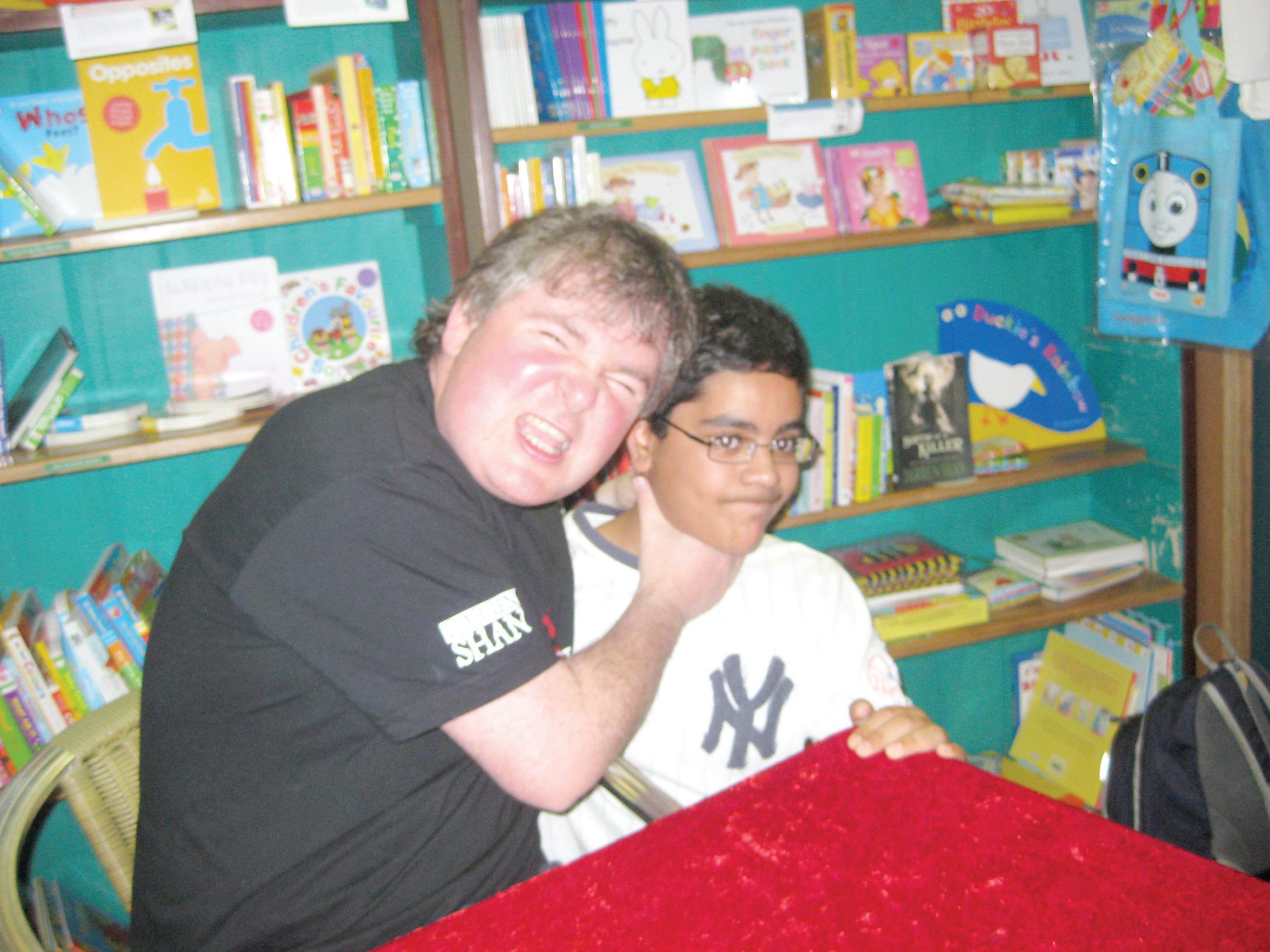
Darren Shan’s books
Darren Shan’s books have been my latest interest in the world of books. They are a vampire genre, and I find them to be interesting and captivating.
I like Darren Shan’s books because they are filled with suspense with some fantastic story lines. You can relate to his characters. The horror in his books is not like Scream 3 horror with bodies and blood and gore, but it’s more believable. You almost feel like you are there in every scene – Darren describes very well.
All the books are set in vampire culture. In his first series The Saga of Darren Shan, you learn all about the vampire world. There are good vampires and bad vampires. There is a vampire parliament which meets at Vampire Mountain. The
leaders of the vampire world are Vampire Princes and Vampire Generals. The bad guys are Vampaneze. There is plenty of fighting between the good guys and the baddies.
The other series are the Demonata series, the City Trilogy and The Saga of Larten Crepsley
Darren’s career as a writer
Darren Shan’s real name is Darren O’Shaughnessy. He was born in 1972 in south east London. He studied Sociology and English at university.
Darren’s interest in creative writing began early. He bought his first typewriter when he was 14, making comic strips and short stories. He was 15 when he came second in a television-script-writing competition for a TV show in Ireland.
Darren finished his first novel when he was only 17. He loved the experience, and after university, his first book Cirque Du Freak was published.
Darren Shan in Sydney
Darren came to Sydney to release his latest book The Birth of a Killer . I went to see him at The Children’s Bookshop in Beecroft. He read a section from his upcoming book Ocean of Blood . He said it was his most horrific work so far, but he also said the book is really very positive. He read very dramatically. The scene was
filled with cobwebs and blood and strange creatures – and the main character’s family members.
He also answered lots of questions. I was surprised to learn that for his first book Cirque du Freak , he received nearly twenty rejection letters from publishers! But he said, he believed in his work, and stuck with it. The book is now a movie. Someone asked Darren if he liked the movie, and he said yes, but I thought he was just being polite! (No, I didn’t like the movie myself!)
He also described how he bases his characters on people he knows. For example, the character who can put his tongue up his nose, is based on his own cousin who used to do the same.
Darren also described how he works. He said he is basically lazy, so he sets himself a target for a particular number of pages to write every day and makes sure to complete it.
Darren enjoyed watching horror and reading horror comics when he was younger. No wonder he loves writing horror the most. He also told us he loves watching movies: apparently he has a collection of over four thousand movies at home. He must have a good cataloguing system…
His other hobbies are watching football, listening to pop and rock music, theatre, worldwide travel, and eating - gourmet
cuisine as well as junk food. Hmmm, same hobbies as mine… and of most boys of my own age: maybe that is why we like Darren as a writer.
In the audience, there were many ‘Shansters’ of my age, but also many people much older then me, like uni students.
Then we lined up to have our books signed by him. Some people had bags full of Darren Shan books. One man just ahead of me told Darren that the first
book he ever read, was only recently, and it was a Darren Shan book. Now he loves reading.
Darren wrote a message for everyone. In my book he wrote: I hope you don’t end up eating cobwebs in a crypt!
I showed him my two English projects which I did last year based on his books. He asked if I got a good mark on them.
Yes I did - maybe my teacher was a fan of his too!
APRIL (2) 2011 <> 49 NATIONAL EDITION
www.indianlink.com.au BOOKS
MANAN LUTHRA meets his favourite author Darren Shan
I was surprised to learn that for his first book Cirque du Freak, he received nearly twenty rejection letters from publishers!
Personal Safety
Rosehill Police are urging members of the public to take extra care of their personal safety, especially when walking alone at night.

Recently there have been a number of street robberies occur in the Harris Park and Granville areas. Offenders are typically targeting people walking alone at night through dimly lit areas and stealing small electronic items, such as mobile phones, laptop computers and cash.
Police encourage members of the public to report any persons acting suspiciously, to their local police station or crime stoppers.
Property Marking
On the 21st April 2011 from 8:00 to 10:00am, Rosehill Police will be offering, free of charge, for members of the public, the opportunity to have their property marked with an invisible unique identifier.
Police will mark your property with letters and numbers unique to you, so in the unfortunate event your property is stolen and police locate the property on the offender, the item can be identified by using a special light to read the unique identifier, and subsequently returned to the rightful owner.
Most surfaces can be marked and the mark is permanent. The items which are most suitable for marking are small electronic items, such as mobile phones, Ipods and the like.
If you would like to have your property marked, your attend Granville Railway Station, main concourse, at the above mentioned time and date to take advantage of this opportunity.
Matrimonials
SEEKING BRIDES
Looking for a match for my brother, smart, intellectual and hardworking. Prefer a family-oriented girl, either PR or on Student Visa. As myself and my sister are both Australian citizen, we will be sponsoring my brother and his spouse for permanent residency. Please contact +61
4 3306 5610
Match required for an Australian citizen Sydney resident north Indian boy, 26 years old, 5’7”, slim, handsome and very fair engineer boy from Kayastha family. Looking for a suitable well-educated Indian girl with family values. Caste no bar. Please send details to akhilsns@gmail.com or contact 0412 487 801.
Saini Sikh boy, 1970-born, 5’10”, welleducated, divorced, looking for a girl in Australia on any visa. Caste, religion or region no bars. Simple and early marriage in Australia. Ph. 0401 532 487 (Australia), 98 8864 0204 (India), email: kulvinder102@yahoo.com
Australian Citizen, Hindu, Saiva Pillai Tamil 39, M.Tech, Project Officer, clean habits seeks girl, strictly should be housewife after marriage. Strictly vegetarian. Caste no bar. Apply with BHP to soulpartersearch@gmail.com.
31-year-old male, Fijian-Indian background, 5’8”, fair, handsome,
• Keep cash and valuables to a minimum only carry essential items.
• Don’t leave it until the late hours to return home.
• Keep your valuables close to you.
• Don’t walk along the street using your mobile phone, Ipod/pad, laptop, keep them out of sight.
• Be mindful of your surroundings at all times.
• Make sure all compartments of bags are zipped up or closed.
Australian citizen vegetarian and nonsmoker, living in Sydney, seeks suitable match of honest girl with good family values, age 25-30. Caste and education no bar. Please reply with photo and details HI.WATSUP@hotmail.com or call 0449
109 620
Fiji Hindu, 52, dual Australian / New Zealand citizenship, living in Liverpool, Sydney, seeks Hindu wife from India or Fiji, age 30-45. Please email details / pics to ron_87singh@hotmail. com
Seeking an alliance for Valmiki boy, 36, 5’8”, very well educated, LLB, MIB (AUS) government employee, Australian citizen. Parents are seeking a well educated, homely girl with traditional values. Caste no bar. Respond with photo and complete bio at valmikiboy@hotmail. com or call 0431 159 221.
Gentleman, living in Sydney, seeks a lady for friendship, developing into a long term relationship. Please call John on 0427 011 042
SEEKING GROOMS
Punjabi Hindu Khatri girl, goodlooking, smart homely, never married, 34, 5‘11”, looks very young, seeks tall Indian boy settled in Australia, caste no bar. Two brothers well settled in Sydney. Contact with photo and details
on 0425 910 007 or ricky.bhalla@gmail. com
Seeking match for Sikh girl, 30 years old, 5’2”, very beautiful, born and raised in New Delhi with Indian values. Belongs to an established family in India, father working as Director of Engg. Institute, eldest sister married and well settled in Sydney. Highly qualified with couple of masters’ degrees, completed CA from ICWAI and experienced in working with a top prestigious firm. Seeking professional, well-educated match with good family background. Early Marriage. Caste no bar. Contact: 0403 421 720 or email: kitty.80@live.com
Seeking a professional, well settled, handsome, Sikh boy for an intelligent Jat Sikh girl, dentist, 29, 5’2” working in NSW and belonging to a family of professionals. Email ozdent123@gmail. com
Seeking match for Hindu, 32, 5’4”, Arora girl (divorced), PR, permanent job in NSW and studying accounting. Family settled in India (Punjab). Caste no bar. Please send photo and details to ompar@y7mail.com
Seeking professionally qualified and well settled teetotaller match for 1977born Punjabi Khatri girl, 5’5”, MBA, diploma in HR, IAF lady officer, never married. Caste no bar. Sister in Sydney.
Email
Seeking suitable match for Punjabi Aggarwal girl M.A, B.Ed, Diploma in Community Welfare (Sydney), good looking and fair, divorcee, 5’3”, 42 years. Prefer qualified Indian-origin Hindu boy between 42-45 years. Send biodata with recent photo to janakraj.aggarwal@ yahoo.com
Family seeking a suitable match for a beautiful and accomplished, 23 year old, 5’ 2’’ tall, slim built, North Indian girl with strong family and personal values. She is highly intelligent, has a degree in Commerce/Law and is a tax consultant at a high profile firm in Sydney. The preference is for a suitably educated and employed boy (age: 25-28) who has been brought up in Australia, USA or England. Please send your details (including a recent photograph) to OZ7654@gmail. com.
G. L Gupta settled in Australia since 1970, seeks match for granddaughter. Meenakshi Gupta DOB 7th Nov 1986, ht. 5’ 4” fair, with sharp features, from Hyderabad, India. Graduate in Commerce, PG Diploma in Banking and Finance from IFBI and worked in ICICI Bank. Coming to Sydney. Seeking Hindu (preferably Agarwa)l professional match. Contact 0401 448 186 / 0404 833 750. E mail giri32@yahoo.com.au
Dr.
50 <> APRIL (2) 2011 INDIAN LINK
details at preetiynr@rediffmail.com or riyasayal@hotmail.com
STUDENTS www.indianlink.com.au
BY THEVAKIE KARUNAGARAN
Our school classrooms were being renovated. Us teachers had to pack our stationery and books into boxes for transfer to temporary classrooms. Judy my co-teacher walked in and sneezed. She held her head and moaned.
“This is too much! Preparing lessons, correcting assignments and now we have to pack these books. They are dusty and I’m stressed out,” she groaned, slumping into a chair and sneezing again. I stopped packing my books and looked up.
“Calm down, Judy. You’re only packing books. You call this stress? Suppose your house was on fire and you were chased by a mob armed with knives and axes?” I retorted.
Judy looked at me wide-eyed. Her jaw dropped.
“Shanthi, what? What do you mean?
When did this happen?”
“I’m talking about the communal riots that we’ve faced back home in Sri Lanka. I’m a Tamil, a minority group, living in Colombo. We got information that an organised mob was going around assaulting people, raping women and killing Tamils. They used voters’ lists to identify Tamil houses.
“Our Sinhalese neighbour rang me and said, ‘Shanthi, quick come over to our house!’ As I replaced the receiver, I heard the mob. I grabbed my jewellery and cash. Holding my two boys by their hands, I ran towards my neighbour’s house. Halfway down the road I saw the mob. They were moving in our direction. I ran back into our house, dragging my children along. I went upstairs into the room above the garage and locked the door. As it clicked shut, I heard the mob break into our house. We heard the smash

of furniture and crack of glass as they looted and vandalised everything. I whispered to the children, ‘Kunchus, block your ears and keep quiet!’ The children were sweating and trembling. I saw the terror in their eyes.”
“Shanthi, why didn’t anyone call the police?” Judy asked.
“It was state terrorism. The police or the army wouldn’t come to our rescue.
Then the mob set fire to our car in the garage. Smoke began seeping into the room we were in. I thought this was the end, we would be killed!

They may rape me. I hugged my children and prayed to God. My six year old son pleaded, ‘Amma, I don’t want to die. Would it hurt?’ And even now I can see my son’s petrified, pale face.”
Relating my agony hurt me desperately, tears trickled down my cheeks. I wiped them and continued.
“Then they tried to break into the

room. My elder son and I pushed back on the door. Luckily it didn’t give way. I heard them say, ‘No-one’s in here,’ and the sound of their footsteps faded away. If we had stayed inside we would have suffocated to death with the smoke. So we came out and went on to the balcony. The mob had moved to the next street. The heat of the fire scorched us, so we had no option but to jump down from the balcony and this limp is due to that jump. Our Sinhalese neighbour took us into her house. Our cherished home was completely destroyed. We had only the clothes that we had fled in. Thousands were massacred, but we were alive. Now Australia is our home and country. Our culture and our religion are respected. We are happy here.”
Judy wiped her tears, blew her nose and said, “Shanthi, that must have been a horrible, horrendous experience for you and your family. Thank you for sharing that experience with me. Now I realise that there are worse things in life than work, dust and sneezes!”
APRIL (2) 2011 <> 51 NATIONAL EDITION
www.indianlink.com.au FICTION
Some people’s problems in life seem trivial in comparison to the suffering and pain experienced by others
The heat of the fire scorched us, so we had no option but to jump down from the balcony and this limp is due to that jump.
BUZZThe
Mimoh’s making the moves
Mahakshay Chakraborty, aka Mimoh, son of veteran actor Mithun Chakraborty has been trying to find a footing in Bollywood for a while now. With a non-starter debut film, Mimoh seemed set to fade into obscurity, but now, with his new 3D move Haunted on the sets, the young actor seems determined to taste success. And he’s making every effort to give his all to the role, including performing the stunts himself and shaking an impressive leg in tricky dance moves.
The film’s action director, Abbas Ali Moghul was apprehensive about him performing the stunts and advised Mimoh to use a body double, but the actor refused. “In a particular sequence, a chandelier falls on Mimoh and he has to roll on the ground before it bursts beside him. Mimoh decided to do it all by himself, even though everyone on the set suggested we use a body double. Mahakshay was very excited about doing it himself,” Abbas said.
“I have had an absolutely fantastic time shooting for this particular action sequence. Though I got a few swellings, the entire chandelier shot, the entire effect came out beautifully,” said a pleased Mimoh.
The icing on the cake was when director Vikram Bhatt decided to add a special song for the actor, after being impressed with Mimoh’s dance moves. It all began when Mimoh celebrated his birthday on the sets and ended up shaking a leg, much to the surprise of the crew. That when the director decided to have a dancing sequence in the movie especially for him. Haunted also stars newcomer Tia Bajpai. Seems like Mimoh’s shaping up like his energetic dad; let’s hope he enjoys the same kind of success!
Nandita
Das in the news
Critically acclaimed actress-turned-director
Nandita Das has been conferred with the Knight of the Order of Arts and Letters, one of the highest civilian awards of France, for her contribution to the development of Indo-French cooperation in cinema.
The actress, known for her performances in films like Fire, Earth and Bawander, looked stunning in a pink saree as she received the award. “Every time I receive
Frieda’s back in Mumbai
It’s no longer a secret, just as it was unlikely to be one for more than a few hours. Frieda Pinto is back in Mumbai, quietly shooting for her next film, Trishna . Apparently the crew and cast didn’t want too much attention, so it was done guerrilla style, with as few people clued in as possible. Which, of course, is impossible in the home of Bollywood, where rumours fly around at the speed of light.

Trishna is an adaptation of Thomas Hardy’s classic novel Tess of d’Urbervilles and is being directed by Michel Winterbottom. It also stars British rapper Riz Ahmed, who acted in The Road To Guantanamo , Shifty and Four Lions , and will be shot in Rajasthan and Mumbai. Back home at last! Frieda must be having fun….
an award it brings an element of surprise. It makes me feel fortunate to get recognised for the work that I love doing,” she said.
“I had received the letter three years back, but somehow due to commitments, the ceremony got so delayed. But I feel more than happy because I have my eightmonth-old son also in my arms, who saw his mom getting the honour,” Nandita added.
Nandita has also had forays behind the camera with Firaaq in 2008, as she directed this political thriller on the aftermath of the 2002 Gujarat riots.

She is well-recognised on the international circuit, having been
GUESS WHO
acknowledged at carious film festivals and serving as a jury member at Cannes. The informal gathering comprised of Nandita’s near and dear ones, her family and friends. And of course, her son was in the focus too, with cuddles from his mum. Well done Nandita, on an accolade richly deserved.
Akon rocks at birthday concert
Akon created quite a stir at his concert in Gurgaon recently, as he ordered security to break the class barriers, allowing the cheapest ticket holders to mingle with their gold compatriots. The venue turned into one huge party as the Senegalese-American rapper and singer celebrated his 38th birthday in a rocking party with fans and the not-so-pleased expensive ticket holders.
“I have a quick question! What is that separate section back behind those gates? What section is that?” he asked the audience as he pointed towards the silver class area.
“That’s the silver class,” the audience shouted back. “What class is this then?” he questioned back.
“This is the gold class!” responded the audience.
“Oh! You mean they didn’t have enough money? Come on all you people, come
forward, come close! I am going to pay for it! Jump up the barriers! Let’s turn this into a party!” Akon said, much to the delight of the audience.
“I got to tell you people that if my audience is suffering, I am not comfortable. There should be no class, and no matter how successful you are, I want to see you all together here,” said Akon.
That was the cue to an amazing performance from the singer, as he sang, jumped and danced with them, and even went crowd surfing in a transparent balloon!
If that wasn’t enough, he dived into the crowd and was carried along on a sea of hands to the end of the crowd, much to the dismay of the VVIP crowd, who sat separately - away from all the action.
Although the concert began two hours late, the singer’s performance and involvement with his fans made the occasion memorable. Akon sang popular hits like Don’t matter, Ghetto, Smack that, I Wanna love you and Dangerous among others. He also cut his birthday cake on the stage, and shared it with some of his fansproving himself as a people’s person.
The rapper has been frank about Bollywood being his ultimate goal, where he can pursue a career as an actor. “I’m
INDIAN LINK
ENTERTAINMENT
ABHILASHA SENGUPTA brings us up-to-date on what’s hot and happening in Bollywood
(Find the answer under Caption Contest)
This Bollywood dancer has been in the news this week, thanks to some ‘cricketing’ connections
FREIDA PINTO
waiting to get into Bollywood movies. I want to do it successfully. I’m not quite sure what character (I would play), but I definitely want to do it,” said the singer, who has worked with composer Aadesh Srivastava and also sang a song for Shah Rukh Khan’s forthcoming film Ra.One
“Working with Shah Rukh was an amazing experience. He opened me up to Bollywood. He made me see a whole new light and the possibilities. I enjoyed it so much that I’m trying to sneak in now,” he added.
And it’s a chance few of tinsel town’s bigwigs are likely to miss. I

actors for his action-thriller Singham . Ashok Saraf, Sonali Kulkarni and Sachin Khedekar, among others will act in the movie, scheduled for release in mid-July. At least we can be sure that it will be a hit in one state!
An honour for Anupam

Veteran actor Anupam Kher, who has been in the film industry for 27 years was honoured at a function in Toronto for completing 400 movies.
CAPTION CONTEST
What’s the chitchat between Sonakshi and co-star Vindu Dara Singh?
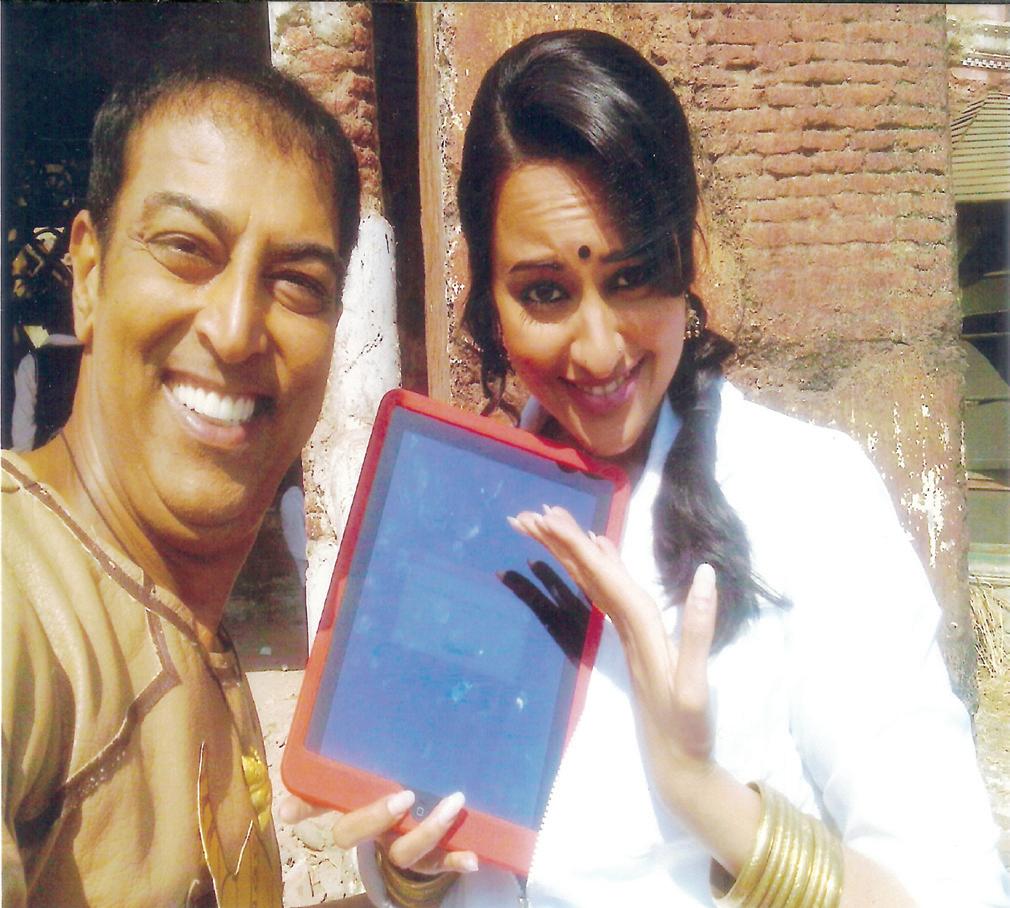
Last
What’s the chitchat between Kajol and Vidya here?
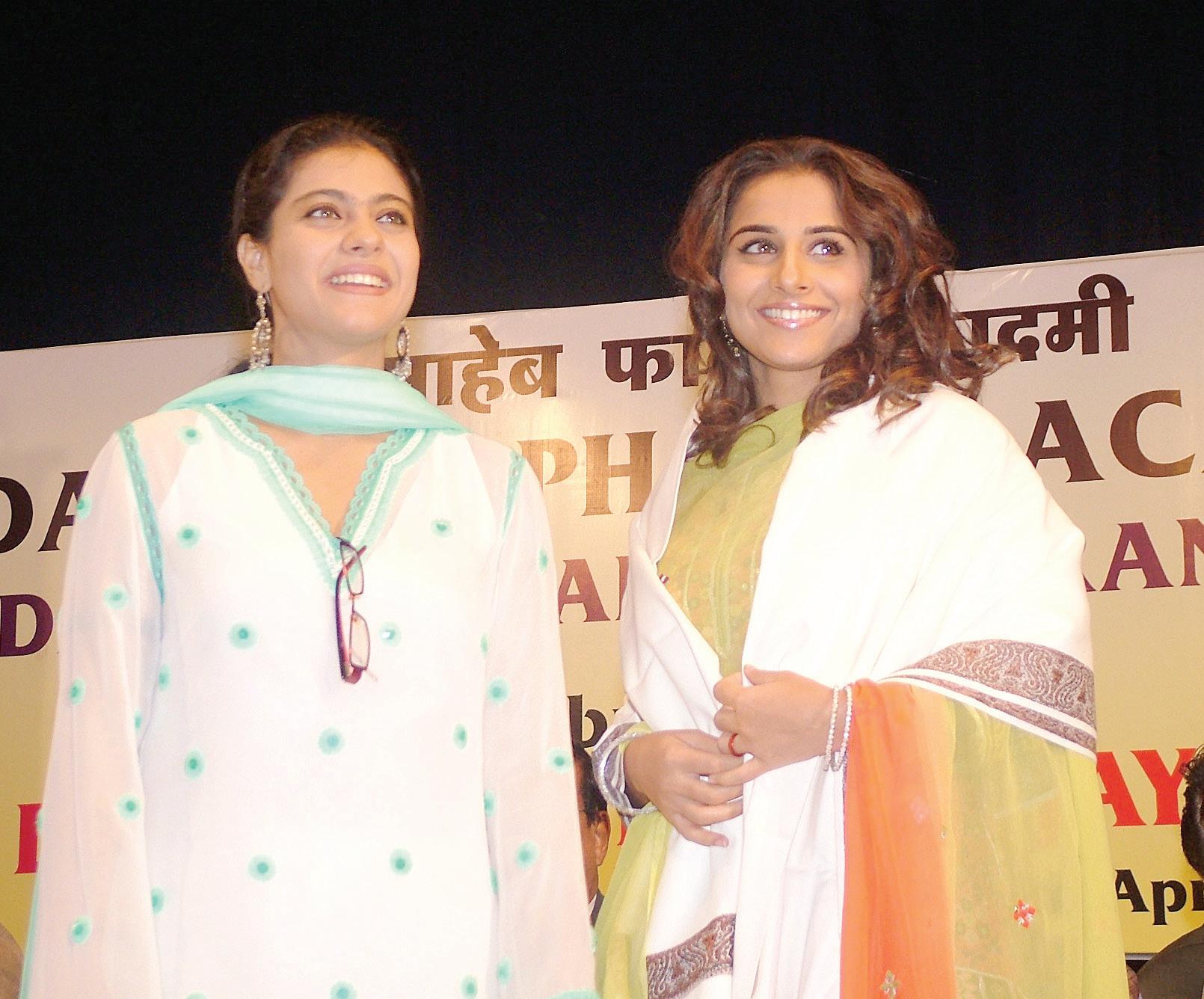
Kajol: I know you’ve been coming up lately, but you need a DDLJ to get to my stature
Vidya: … which I will get sooner than you think!
Nikita Pahwa Indooroopilly QLD
Nikita wins a free ticket to new release Band Baaja Baraat

www.indianlink.com.au
AKON
GUESS WHO :ANSWER Isha Sharvani
in your responses to info@indianlink.com.au and win a surprise prize Send in your responses to info@indianlink.com.au and win a surprise prize
Send
Caption
winning
issue
Contest
entry

54 <> APRIL (2) 2011 INDIAN LINK
Cine Talk
Comedy that’s gone painfully wrong
either. The three principal actors seem as frozen in their efforts to rise above the stagnant humour as the snowy landscape in Jammu where veteran cinematographer Ashok Mehta tries desperately to find a centre in the meandering mirth.
Some comedies mean well. But they lose their way in their noble intentions. Teen Thay Bhai seems like a terrific idea for a comedy. Three brothers separated more at mirth than by birth, trying hard to keep the spirit alive. They fail miserably, not for

The script here depends too much on extraneous trappings, too little on integral assets. There’s no scarcity of acting talent here. Shreyas Talpade, Deepak Dobriyal and Om Puri shine in that order… Alas, they have no meat to sink their sharp teeth in. Often we see the actor groping and grappling with material that doesn’t give them a chance to move beyond the immediate laughter of a situational comedy. Beyond the sound of current laughter there’s no hereafter in the humour.
The static snowcapped location doesn’t help
Little-known Pancham New biography tells endearing tales
His hit songs flooded the box office: he was the quintessential romantic hero with heartaches, longings and beach-side philosophies. Yet celebrated musician-composer and songwriter Rahul Dev Burman took time to flower into a Bollywood phenomenon. The oft-repeated question: why?
Despite the moderately successful launch of his career, “Pancham” as he was lovingly called, was unable to leverage the clout that his surname carried in the rather conservative film fraternity in Mumbai.
Producers always wanted Sachin Dev Burman (S.D. Burman), but nobody was willing to experiment with his son, writers Aniruddha Bhattacharjee and Balaji Vittal say in a new biography, R.D. Burman: The Man The Music published early this month (Harper-Collins India).
Pancham spent several years fine-tuning his musical genuis under his father’s shadow before Bhoot Bangla - with its signature track Jago sonewalo - happened.
However, Pancham tasted success with Teesri Manzil - a pathbreaking thriller with memorable songs he composed at a time when whodunits were yet to capture moviegoer’s psyche.
The biography, which throws light on the musician’s meteoric career in Bollywood and popularity worldwide, reveals littleknown facts about R.D. Burman, including his childhood.
A few months after World War II broke out, Rahul Dev Burman was born to the rising star in the musical firmament S.D. Burman and his Meera on June 27, 1939, at their Gariahat Road home in Kolkata.
Rahul Dev’s grandfather Nabadwipchandra Dev Burman was an erstwhile king of Tripura.
Rahul was first nicknamed Tublu. The nickname “Pancham” came some years later. Apparently, as a child, he wailed at the fifth note of the saptaswara, the seven notes.
There is another story. Rahul would invariably sing the note pa whenever his father sang the note sa. Thespian Ashok Kumar gave him the name, “Pancham”, the book notes.
Incidentally, five proved the lucky number for him in his early career - Teesri Manzil (1966), his first major hit, was R.D. Burman’s fifth film as a composer.
Pancham was one of the earliest composers in Bollywood who was influenced by Latino music, according to the book. Bossa Nova is a form of music which finds inspiration in the Brazilian samba. It is mainly played on classical guitar with gut or nylon strings and uses unconventional and complex chords that add colour to the basic jazz-based patterns. Exposed to Latino music in Kolkata, Pancham, over the years, developed a fondness for its vibrancy.
“He soon made Bossa Nova form his very own, literally bringing it across the globe from the beaches of Rio to the studios of Mumbai where he dovetailed it to create a pentatonic tune for a song in Kati Patang,” the book says.
Bollywood scripted fame for Pancham, but it was Kolkata where he let his nostalgia erupt unbridled.
Pre-Durga Puja 1965, public attention was focussed elsewhere as the country gathered itself in the immediate aftermath of a war with Pakistan. A ceasefire was announced three weeks ahead of the Puja.
“The soldiers rushed back to their families leading to the reinstatement of the Puja spirit. Musically, the puja of 1965 aroused the curiosity of spirit when news got around that Rahul Dev Burman was making his ‘debut as a composer of Puja songs,’” his biography says.
This was a chance happening for Burman, so far “too rebellious a name for the common Bengalis, whose musical tastes were limited to sombre and solemn”.
The script has the seeds of an engaging satire. But the story never takes off. Minimalist props and background music don’t help drive away the feeling of growing boredom that clutches at the throat of this vapid tale of three brothers who could kill each other with sibling friction and kill us with sheer boredom.
Towards the end, the plot shifts out of a snowstrapped cottage into the outdoors where the brothers are assailed by hippy women who feed them with parathas filled with marijuana. By this time the script has completely run out of tricks to hold our attention. A climax with a giant steamroller as the villain is just about all that we are left looking at.
Teen Thay Bhai is like one of those books whose backflap synopsis offers us tempting insights into human nature. But by the time we settle down to the experience the plot has betrayed its own interests.
Hugely disappointing.
It turned out that Bengali lyricist Pulak Mukherjee wanted to produce a few songs with S.D. Burman, who refused and passed the assignment to his son.
An unwilling Pancham expressed his discomfort in composing in Bengali, but assured of Lata Mangeshkar’s voice, he offered eight tunes to Mukherjee, who selected two. His next round of Bengali compositions came in 1967.

R.D. Burman’s best-known Bengali song solo, Mone Pore Ruby Ray - incidentally the song he released first as duet with Kishore Kumar for one of Guru Dutt’s projects - has an interesting story, the book reminds the reader.
Scenarist (the one who visualised the locales) Sachin Bhowmik (actor) had lost his heart to a certain lady, who unfortunately spurned his affections. “Her name was Chhobi Ray and she was immortalised as Ruby Ray in the song which Pancham coerced Bhowmick to write. It was loosely based on Rag Kirwani and Rag Mukhari,” the book says.
Ruby Ray, which was branded as “degenerate westernisation in music” took a long time to be accepted.
The Hindi version of the song, Meri Bheegi Bheegi Si... was released in 1973 in the movie Anamika
R.D. Burman died on Jan 4, 1994.
APRIL (2) 2011 <> 55 NATIONAL EDITION
TeenThayBhai Om Puri, Deepak Dobriyal, Shreyas Talpade Mrigdeep Singh Lamba
Subhash K. Jha
Madhusree Chatterjee
ENTERTAINMENT www.indianlink.com.au
Pancham with Asha Bhosle
Ask Auntyji
Budhaape mein diwaangi?
Dear Auntyji
Asha hai ki aap tandroost hai and everything is tickety boo in your world. Bahenji, mere paas ek somewhat perplexing question hai aap ke liye . I am of the same vintage as you I am thinking, and my pyaari saheli Usha Bahen also is in her 60s. Aajkal however, while I have grown graceful and dignified in my twilight years, Usha Bahen has grown thodi si .....senile. Bilkul paagal ki tara jhoom rahi hai woh . She has started dyeing her hair with henna and so it is quite bright orange and she looks like Ronald McDonald. Then, the other day, she put on some jeans, all the way up to her armpits and booked a ride on a motorcycle with some gora cheez up and down the streets of Footscray. Then, she hangs out with her grandchildren, and uses words like dude and like and I even saw her text her grandson with a lol . A lol?! Can you imagine, a lol, no less. What has gotten into this buddhi ? And has no one told her that buddha ghoda and naya lagaam just does not work? Ahsaan kijiye and please advise me on how I can broach this subject with my confused saheli without todo ing her dil or hurting her feelings - after all, she has not been the same since her pet chihuahua Muffy died. Meanwhile Govind Bhai is tolerating all this by putting on a show of support and to my face, said to Usha Bahen just the other day, You go, girl . You go girl? Since when do buddhe log speak like this? Ye kis tara ki zaleel language hai ? What is the world coming to? Have I woken up in an alternate universe where nothing makes sense anymore? Please tell, Auntyji, you are my akhri resort.
Auntyji says
Oh, my gola little gulab jamun , my twisted little jalebi , my hot little pakora , why must you torment yourself with what others are doing? There is only one solution for you and I insist that you follow through on it. If Usha Bahen rides a motorcycle with a gora pakora , then you too, must ride a Harley with three gora pakoras . If she dyes her hair peela , then you must dye your hair neela . If she says lol, you must say rofl. Do you catch my matlab ? No? Well, let me spell it out for you. Achche bachche don’t judge others, and achche log seek to understand others before they, well, make any sort of judgements. Usha Bahen is having fun and she is not hurting anyone, and the only one being hurt in a twisted way is you. So the only thing for you to do is to support Usha by doing everything she does - and I can guarantee you that you will have so much fun, that you won’t recognise yourself. Just try it - and see what happens. Oh, wait. Don’t wear jeans up to your armspits. At least get some that suit your gola damola Ajanta ki murat figure. Let me know how it goes and I might come along for a ride on the Harley, as long as the goras are built like Brad Pitt in Thelma and Louise
Dear Auntyji
I found out from Facebook that my 21-year-old son who is studying medicine has become interested in a girl. Can you please tell me how we should handle this?
We come from a strict family of Brahmins and everyone will want Ankit to marry a nice girl from the same background. Please help me - as Ankit was born and raised in Australia and he is a wonderful sonbut his choice of girlfriend is causing me concerns.
Auntyji says
I am sorry to tell you this, but the world has changed and people’s thinking has changed with it. While Ankit may be a wonderful son, and a bright one, if you start telling him who he can marry and who he can associate with, it will only be a recipe for disaster. Honestly, do you really expect him to follow family
The Lelyveld controversy
Dear Auntyji
I am outraged by a book by Joseph Lelyveld that asserts Bapuji had... questionable conduct. I have read the book and some of the points raised are so outrageous that I feel like burning the book. How could he say such horrid things about the Mahatma? How could the publishers allow this book to be published? Auntyji, I am so angry that this author has said such things that I am at a loss about what to do. I have studied the work of Gandhi and have read multiple books on him - and I can easily refute all the claims made. What do you suggest I do?
traditions to that degree? I am all for following certain values and customs, but imposing such rules as dictating who one must marry is out-dated. Now, if little Ankit was a complete nerd who didn’t know that girls existed and who needed mummy’s help in finding a wife, then in this instance, you can have some say in his choice of wife. Otherwise, please, leave your son alone, especially if you want him to be happy. And another thing. Honestly, why are you following his Facebook updates? Seriously, parents of 21-year-old studious youngsters should stay off their social media sites. Give your son some privacy. Unless of course he has shown signs of being a sociopath, in which case you should definitely monitor his social media activities. The only way you can tell if he is a sociopath is if he wet the bed till he was 14 and he mutilated furry animals when he was young. Happy pondering!
Auntyji says
Well, my dear self-righteously indignant fellow. The answer is quite simple. Write your counter claim to Lelyveld’s assertions and make sure you back up everything with evidence, and send to this paper for publication. Who knows, maybe the Guardian or the New York Post might pick up your piece. But, please ensure that your sentiments on the subject are not framed by emotional attachment to the topic. You must be able to verify all your claims with real life evidence - and not just from other authors. I am quite looking forward to what you have to say on the topic. One final point - note that we are talking about a human being here, and he had human flaws - so let’s not assume that he was divine perfection. How soon before we can see your first draft?
56 <> APRIL (2) 2011 INDIAN LINK Well Established Cash Flow Retail Businesses For Immediate Sale Owner Moving Interstate,Reluctant Sale Be Your Own Boss,More Profitable For Owner Operator 1.Sunglasses Kiosk In Westfield Liverpool 2.Sunglasses Kiosk In Westfield Kotara Preference & Very Good Deal For Buyer Of Both Outlets. Individual Business Buyers Also Most Welcome Contact For Further Details: designer@australiamail.com Mobile:0426964342 RUNNING RETAIL BUSINESSES FOR SALE Commercial Kitchen items for sale “ 3 Tandoors For Sale” 1 x Round stainless steel on wheels $800 1 x Round galvanised used $500 1 x Square 30 by 30 inch stainless steel with gas burner (Hardly Used) $1900. Please call Chander on 0450 836 377 BACKCHAT Do you have a question for Auntyji? Send it in to GPO Box 108 Sydney 2001 or email it to info@indianlink.com.au
www.indianlink.com.au
Get out of his face(book)




















































 BY PRIYANKA TATER
BY PRIYANKA TATER

































































































 BY SHERYL DIXIT
BY SHERYL DIXIT

































